





BUILDING THROUGH YOUR OWN CASH FLOW: NECTAR’S KEY TO MULTIFAMILY SUCCESS
BOUTIQUE OFFICES: THRIVING IN SOUTH FLORIDA AN UPSCALE VIBE FOR THE BRONX










BUILDING THROUGH YOUR OWN CASH FLOW: NECTAR’S KEY TO MULTIFAMILY SUCCESS
BOUTIQUE OFFICES: THRIVING IN SOUTH FLORIDA AN UPSCALE VIBE FOR THE BRONX







With our deep insight and experience, where others see challenges, we see opportunities.






















Hempstead Golf & Country Club | Hempstead, NY MONDAY, AUGUST 5, 2024
The Seawane Club | Hewlett Harbor, NY
Rockaway Hunting Club | Lawrence, NY

Sunrise Day Camp–Long Island is the world’s first full-summer day camp for children with cancer and their siblings, provided completely free of charge
Sunrise Day Camp–Long Island is a proud member of the Sunrise Association, whose mission is to bring back the joys of childhood to children with cancer and their siblings worldwide. Sunrise accomplishes this through the creation and oversight of welcoming, inclusive summer day camps, year-round programs and in-hospital recreational activities, all offered free of charge. Sunrise Day Camp–Long Island is a program of the Friedberg JCC, a beneficiary agency of UJA-Federation of New York.













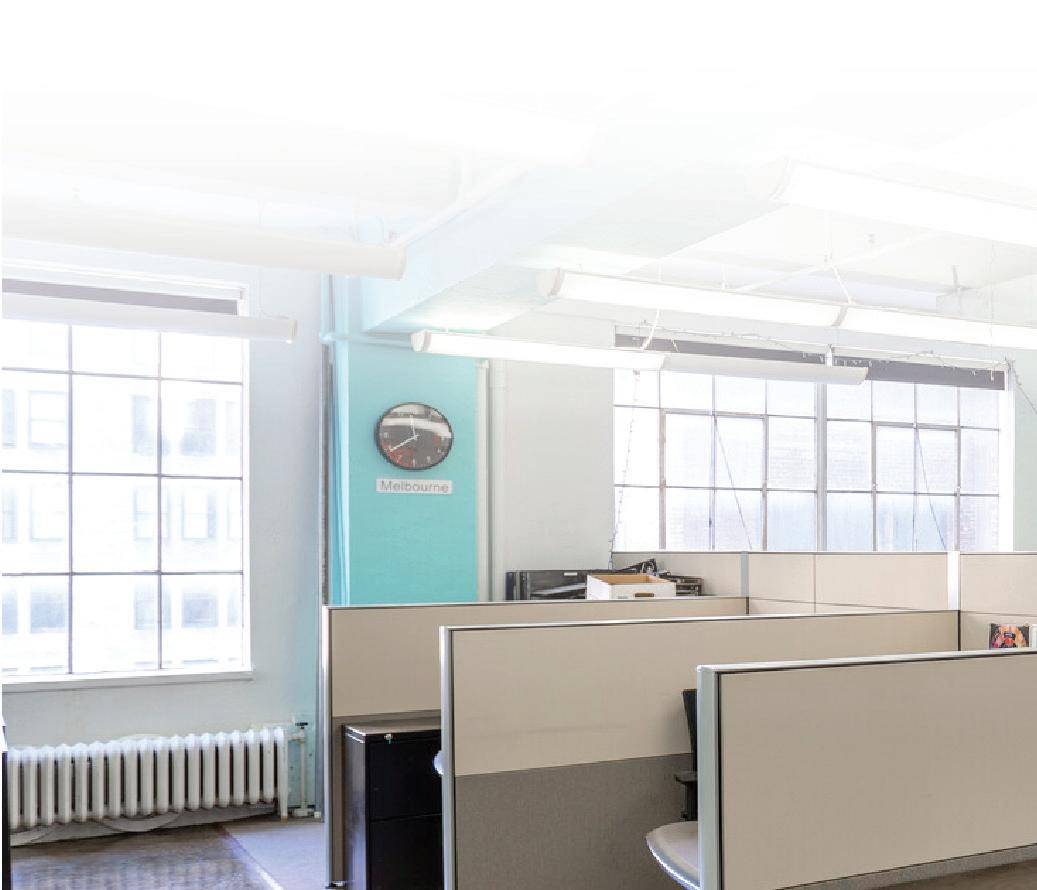
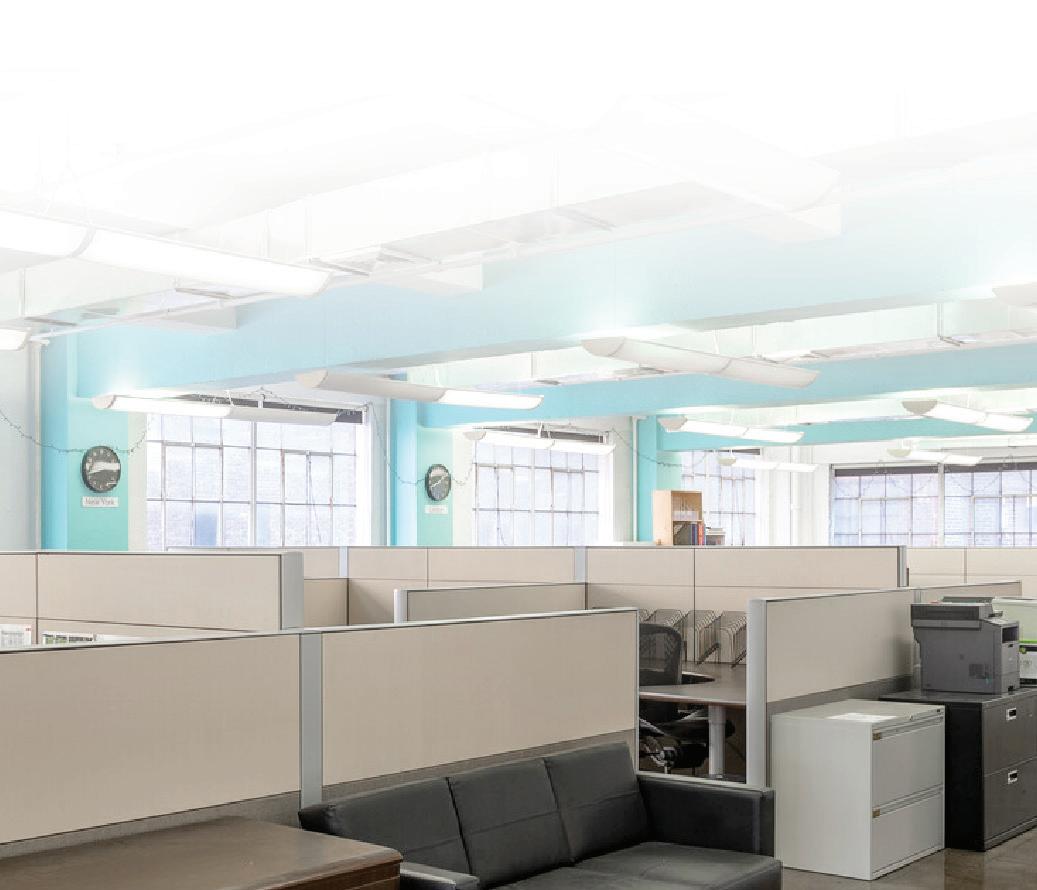
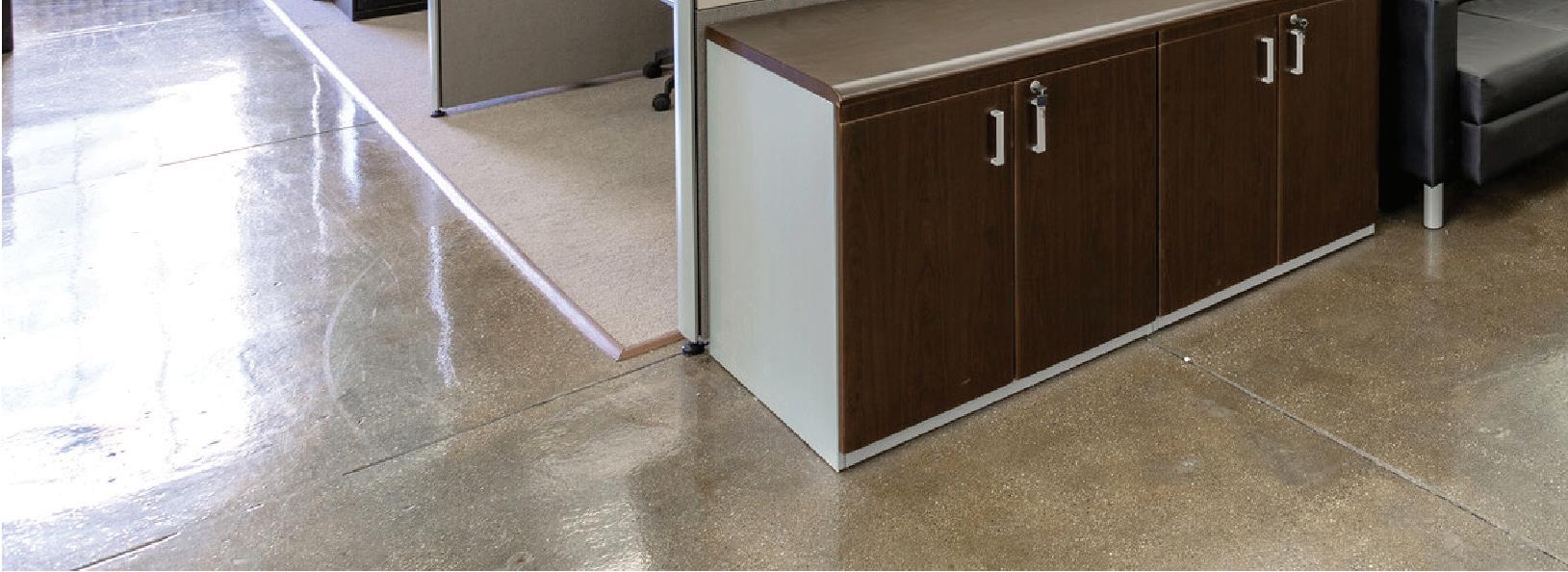


646.597.6171
dhandler@handler-re.com
646.597.6179
rfarley@handler-re.com


kgalin@handler-re.com


Meridian’s national dominance in multifamily financing gives us a unique vantage point from which to approach markets on our clients’ behalf. By leveraging our 30+ year relationships and depth of experience, we are able to see what others can’t and produce exceptional outcomes — especially in turbulent markets. Remain informed and be agile with Meridian.















EDITORIAL
Editor
Debra Hazel
Associate Editor
Alex Baumbusch
Director of Communications and Marketing
Penelope Herrera
Director of
Newsletter Division
Cheri Phillips
PRESIDENT/CEO
Jeff Mann
ART
Art Director
Serena Bhullar
Graphic Designer
Madi McCreesh
Cover Photography
Greg Kuhn
Giray Boran
Frank DeLucia
Raffaele Di Censo
Shaun Keegan
Merilee Kern
Kris Kiser
Robert Sasloff
Carol A. Sigmond
BUSINESS
Technology Consultant
Joshua Fried
Distribution
Mitchell’s Delivery Service
DIGITAL MEDIA
Designers
Serena Bhullar
Madi McCreesh
Editors
Alexandra Baumbusch
Debra Hazel
Penelope Herrera
Cheri Phillips
Web Developer
CS Designworks
West Coast Office: 578 Washington Blvd., Suite 827 Marina Del Rey, CA 90292 866-306-MANN (6266) mannpublications.com



East Coast Office: 450 7th Ave, Suite 2306 New York, NY 10123 212-840-MANN (6266)




























































Welcome to our Multifamily Issue, with an especially pertinent cover story on Lighthouse Living, which is developing multifamily properties for the way we live today—larger spaces, with just the right combination of amenities for its users.
Every decade, there is a generational talent who comes along in the real estate industry. Meet David Mann who has built an empire from scratch that is developing around the Tri-state area and has expanded to Green ville, South Carolina. He has already completed fifteen projects, with two more that are currently in construction. His development plans in the Southeast region of the United States are also under way. Each one of his projects is very special to him.
David, 45 years old, has dominated the market by thinking outside of the box. It is imperative that you read this story to learn what he has accomplished. To fully appreciate his story, simply pick up the phone and call him or email him, as he is a pleasure to speak with and is very engaging.
I also know that we’re still dealing with the August heat, but it’s also time to look ahead to our autumn National Realty Club Foundation Golf Outing, set for October 7 at the Fresh Meadow Country Club. We’re delighted to be honoring Mark R. DeFazio, president, CEO and a founder of Metropolitan Bank Holding Corp. and Metropolitan Commercial Bank and Daniel Vitulli, a part ner in Marcum LLP’s New York Office and national partner-incharge of its real estate group. Our Humanitarian Award will be given to Mark F. Engel, CEO of Langsam Property Services Corp. It’s always a great day, and raises funds for the NRC Foundation, which supports causes that benefit all New Yorkers. Thanks to our Gold Committee Co-chairs Bob Knakal of BK Real Estate Advisors and Jaimee Nardiello of Zetlin & Chiara LLP for all the efforts. For more information, please contact me or Penny Herrera at pherrera@nationalrealtyclub.org.

Enjoy the last bits of summer and see you next month!
“One pound of learning requires 10 pounds of common sense to apply it.” -Persian proverb



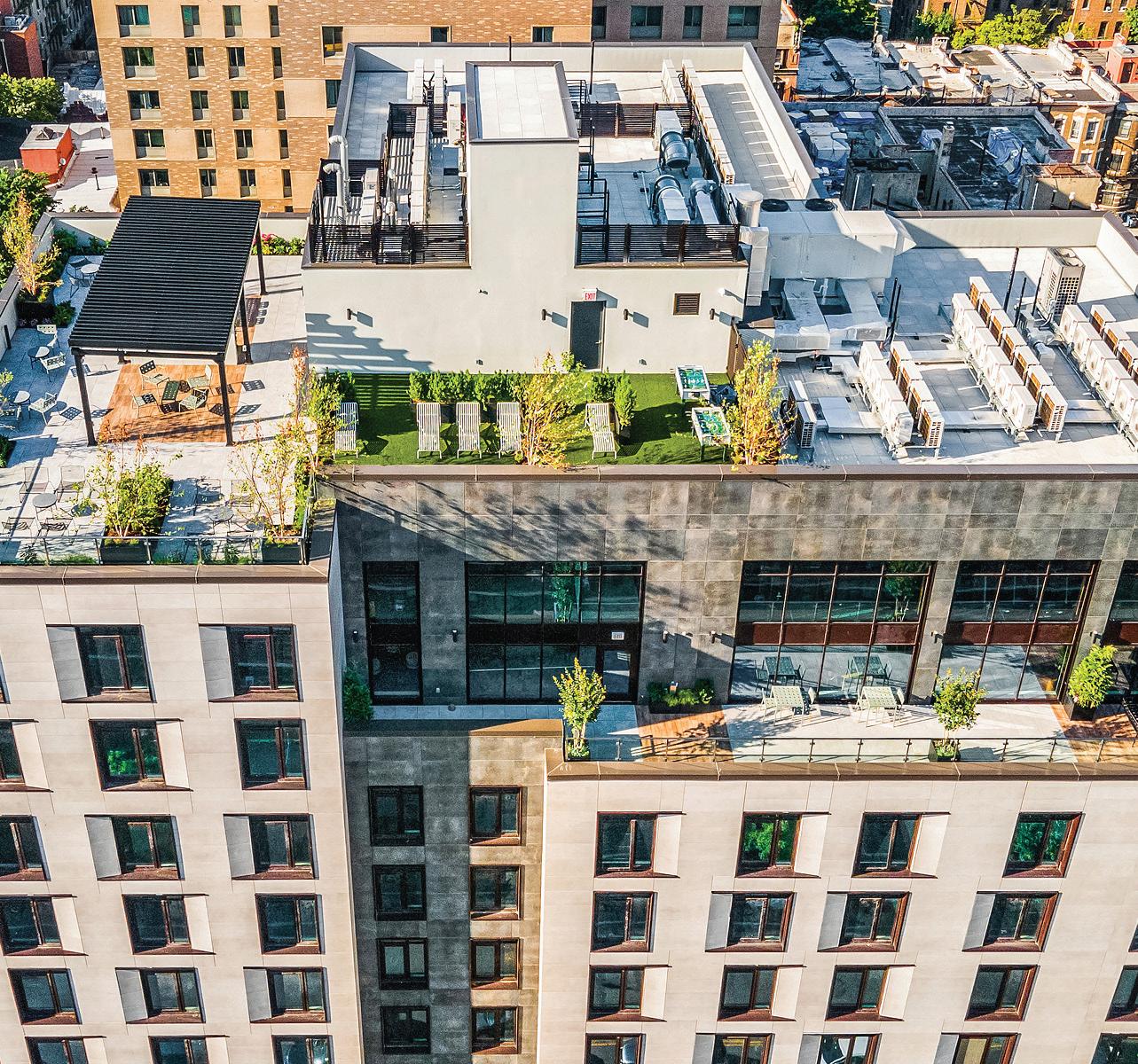
by













From financing considerations, to property performance metrics, today’s real estate business is inundated with both challenges and opportunities.
PKF O’Connor Davies has decades of experience working with a variety of assets including industrial, office and residential sites. Our experience in this complex field gives us the expertise to deliver strategic advice that drives real value.
With the PKF O’Connor Davies Real Estate Team, our clients know greater service, know greater insights, Know Greater Value.

Edward O’Connor, Partner 201.712.9800 eoconnor@pkfod.com
Overall, New York City is a city of renters — according to nyc.gov, nearly seven in 10 (69%) of New Yorkers rent their homes, more than double the percentage of Americans (34%) who don’t own. So, it makes sense to focus on multifamily, a critical sector in real estate. And it was a real pleasure to speak with David Mann about how Lighthouse Living is reinventing the rental experience by offering larger units with just the right kinds of amenities just outside the city. These are not your grandfather’s apartments.
David Mann isn’t alone. Around the city and the country, multifamily developments are focused on bringing amenities and, more importantly, a sense of community. Our friend Merilee Kern shows how Urban Living is creating that community through programs and events. And look at what The Bronx Vibe is bringing to the Grand Concourse area.
Also check out what our columnists and contributors have to say about new electrical needs, real estate bankruptcy and more.
Enjoy the last days of summer and see you next month!

Photos by Steven Lipofsky
Kramer Levin’s Real Estate and Land Use groups recently hosted their annual spring cocktail reception at the Bryant Park Grill Patio, convening New York’s leading owners and developers, private equity funds, sponsors, lenders, family offices, REITs, investors and major non-profits. Kramer Levin welcomed more than 250 guests for a chance to network with each other under an open-air tent.
“What a terrific evening. I was thrilled with how many of our clients and colleagues were able to join us,” said Jay Neveloff, a partner and chair of the Real Estate Group at Kramer Levin. “As the real estate markets continue to recalibrate and reenergize from the rapid economic change and disruption of the past few years, this gathering gave us all a chance to pause and reflect, not only on where we are today but also on the welcomed economic indicators we see coming.”
Kramer Levin’s legal services cover every aspect of real estate and land use law, from acquisitions and sales, joint ventures, entitlements, financings, development and conversions, to bespoke, hybrid leasing transactions, condominium work, workouts, restructurings air rights deals and historic preservation.
The law firm’s attorneys and their clients stand at the forefront of many significant real estate developments and projects across New York and throughout the United States, it noted.
“This was another wonderful Kramer Levin event; as in previous years, we felt great friendship, energy and enthusiasm for the future of New York City,” said Land Use Co-chair Elise Wagner. “Land use and real estate are twin engines that drive our city’s economy, and this event brings people together to network, build productive relationships and eventually work together to make New York an even greater place.”












PHOTOS BY MICHAEL PRIEST
More than 300 New York real estate professionals attended Jewish National Fund-USA’s annual Leonard Litwin New York City Real Estate Tree of Life Gala at Gustavino’s in Manhattan to honor two industry leaders for their invaluable leadership and philanthropic endeavors.
Chaired by Glen Weiss of Vornado Realty Trust, the annual real estate reception honored Tree of Life Award recipient Neil J. Goldmacher, chairman, National Tenant Representation at Newmark. Goldmacher joined the firm in 1995 as a senior managing director and became a principal in 2000.
Previously associated with Williams Real Estate Co., Goldmacher is a dedicated philanthropist and long-time supporter of Jewish National Fund-USA, the leading philanthropic organization for the land and people of Israel.
Scott Nadler, vice president of lending at CrossCountry Mortgage LLC, was the recipient of the Gregory A. Davis Leadership Award. The latter recognizes
young philanthropists between the ages of 22 and 40.
Nadler has been ranked in the top 1% of mortgage originators nationally nine years in a row. Philanthropically, he is a co-founder of Jewish National FundUSA’s New York Real Estate Cabinet and is on the organization’s Housing Development Fund Task Force, which removes red tape and speeds up the development of housing sites in Israel’s Negev and Galilee.
Special guests included Alon Davidi, the mayor of the southern Israeli city of Sderot, and four residents of Hamas-ravaged Kibbutz Be’eri. As survivors of the October 7 attacks on their kibbutz, the representatives were in the United States to raise awareness about the realities on the ground in Israel, raise funds to rebuild their community and expedite the hostages’ return.
David R. Greenbaum of Vornado Realty Trust and Jeffrey E. Levine of Douglaston Development served as the event’s honorary chairs.


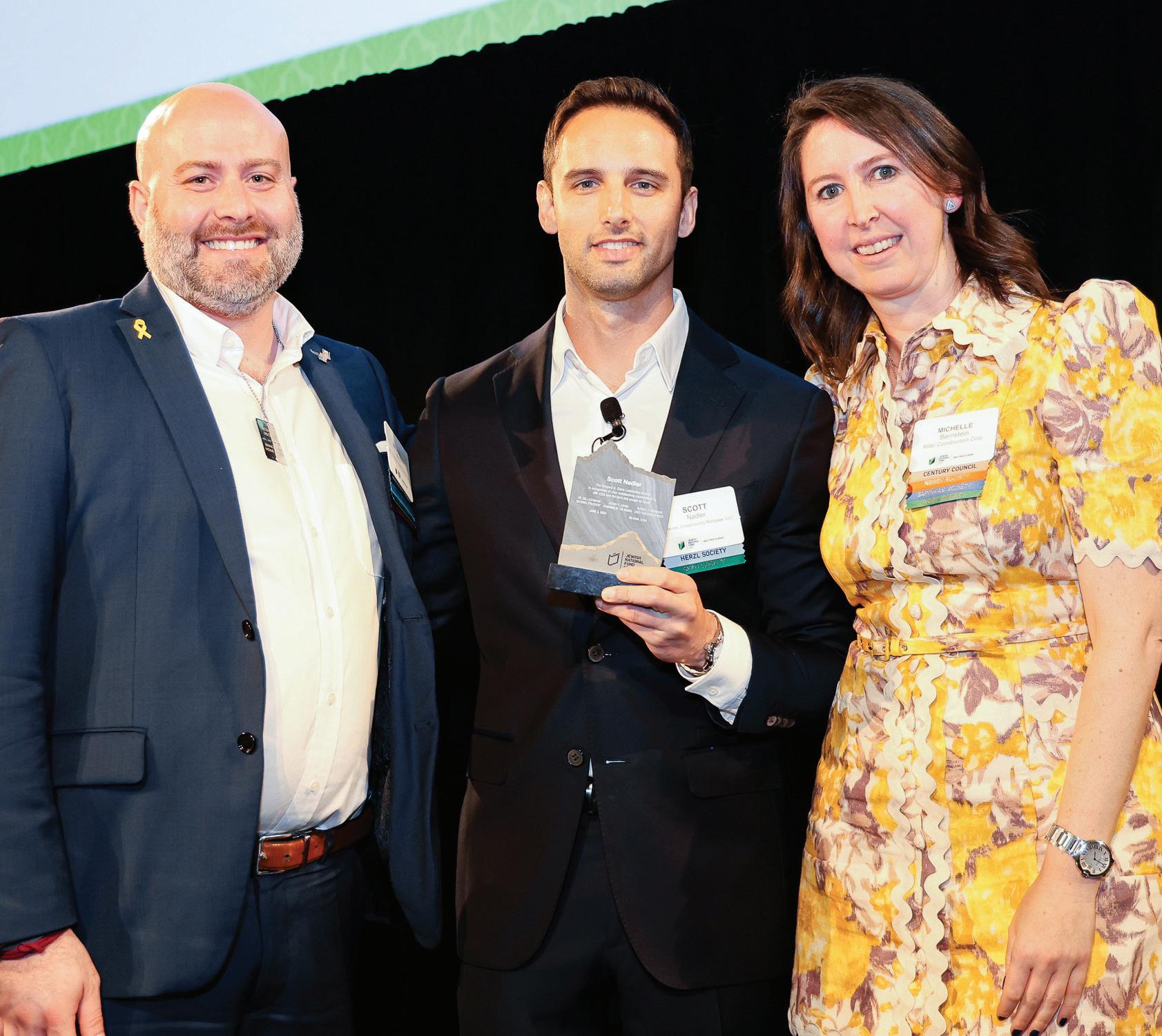




“Diversity creates profitability. Diversity creates success. Diversity improves our economy and diversity improves our society and REAP embodies all of that,” said REAP Chair Michael Kercheval at the NY/NJ/CT Silver Jubilee event. The gala celebrated 25 years of diversifying the talent pipeline in commercial real estate since the founding of Project REAP (Real Estate Associate Program) in 1998.
Kercheval, a supporter of REAP since its inception and the retired CEO and president of ICSC, remained upbeat about the future, despite recent curtailing of DEI initiatives.
“Today we face some major challenges in our industry and in the economy. It is very, very troubling,” he said. “We can stand up and continue to push that mission. We’re creating opportunities and we’re training. We’re opening doors and we’re supporting people for a lifetime of career success in real estate. We’re going to continue to make a difference.”
Katrina Rainey, Esq., a REAP 2006 alum and secretary of the REAP board, and now a site acquisition director with Microsoft, relayed how the organization has helped build her career from Day One. Recruited to create and launch McDonald’s property management program shortly after completing the REAP Academy, she has continued to maximize her REAP network, which helped her transition into her current position.
“REAP has been an amazing opportunity to help propel my career in not only teaching me the language of commercial real estate but also networking skills,”
said Rainey.
NY/NJ/CT REAPer of the Year Randall Powell, REAP 2019 alum and co-founder, principal and CEO of his own firm, Infinite Horizons LLC, praised and thanked REAP, saying, “I am forever grateful for the transformative impact REAP has had on my professional journey. REAP has been an amazing platform for myself and my organization, and it is these endeavors and the vision of people that come together to support and teach each other like yourselves that give us an opportunity to grow our businesses and become substantial in this marketplace.”
G. Lamont Blackstone, acting executive director of REAP, called out the most toxic critics of DEI as impeded by an “antebellum” way of thinking, an outdated mindset that fails to grasp present-day urgencies and realities.
Said Blackstone, “Diversity is not a threat, it is simply an effort to expand the talent pool of this nation.”
The program was followed by networking with fare provided by NY/NJ/CT Silver Jubilee Event Champion ICSC and other sponsors.
Denham Wolf was the Early Investor Level Sponsor; Greystone and Monge Capital were the Investor Level Sponsors and IREM (Institute of Real Estate Management), Grow America and All Renovation Construction (founded and led by REAP 2017 alum and board member Allan Suarez) were the Jubilee supporters.

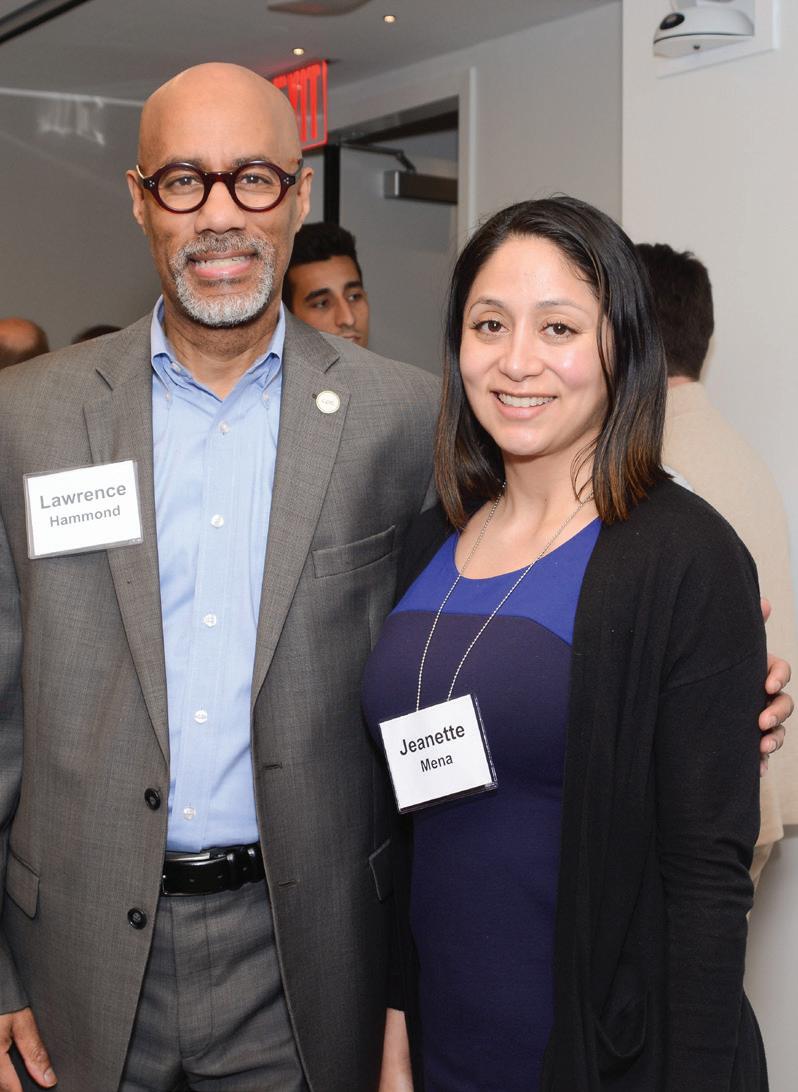


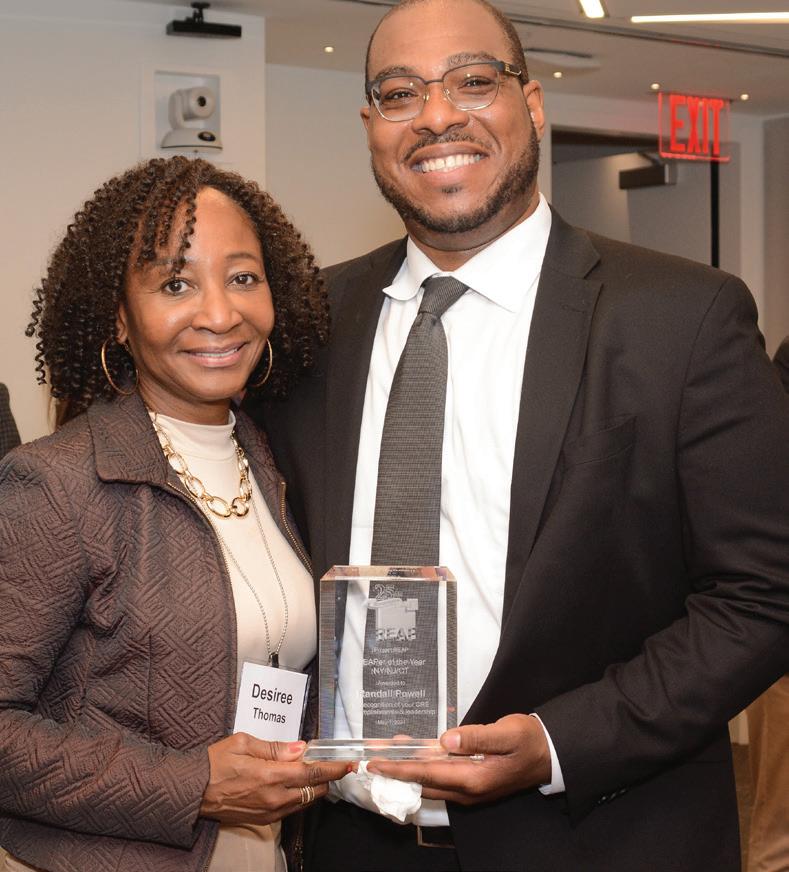


PHOTOS BY ANCHIN
Anchin announced the 2024 Construction and Design Awards winners at its 14th awards ceremony, held at the prestigious Elsie Ballroom in New York City. The event, held in collaboration with the New York Building Congress, the American Council of Engineering Companies of New York and the Subcontractors Trade Association, highlighted industry excellence, innovation, MWBE empowerment and leadership.
The ceremony celebrated achievements and provided a platform for networking and forming valuable industry connections. Attendees were encouraged to engage with one another, share knowledge and foster collaborations that could lead to future partnerships and projects.
Keynote speaker Greg A. Kelly, P.E., president and CEO of STV, provided insightful reflections on real estate’s current state and future and societal impacts, saying, “We are all bound by a common purpose, and that purpose is why we are here — to enact changes that positively affect our community. … Despite challenges such as inflation, legislation like the Infrastructure Bill, the CHIPS Act and the Inflation Reduction Act have catalyzed our industry, emphasizing the importance of public and private investment and partnership.”
The MWBE Empowerment Award was presented to Civic Builders and Holt

Construction for honored for their exceptional growth, creativity and leadership, setting new industry standards and paving the way for future innovation. Curtis Partition and JB&B were celebrated with the Innovation-Driven Excellence Award for their bold visions and cutting-edge technology, redefining the boundaries of design and construction.
Pioneering Industry Leadership Awards were given to Syska Hennessy Group and Shawmut Design and Construction for their leadership in economic development, community engagement, technological advancement and commitment to sustainability and DE&I principles. The Rising Star Award was presented to Kings Capital Construction.
In the opening address, Phil Ross, Anchin’s Architecture, Engineering and Construction partner, highlighted the critical role of innovation and collaboration in advancing the industry, focusing on sustainability and integrating new technologies.
“Congratulations to all our deserving winners and a heartfelt thank you to our esteemed judges for their thorough evaluation,” Ross said. “Your collective contributions continue to fortify our industry, propelling us towards a future distinguished by innovation, inclusivity and exemplary leadership.”

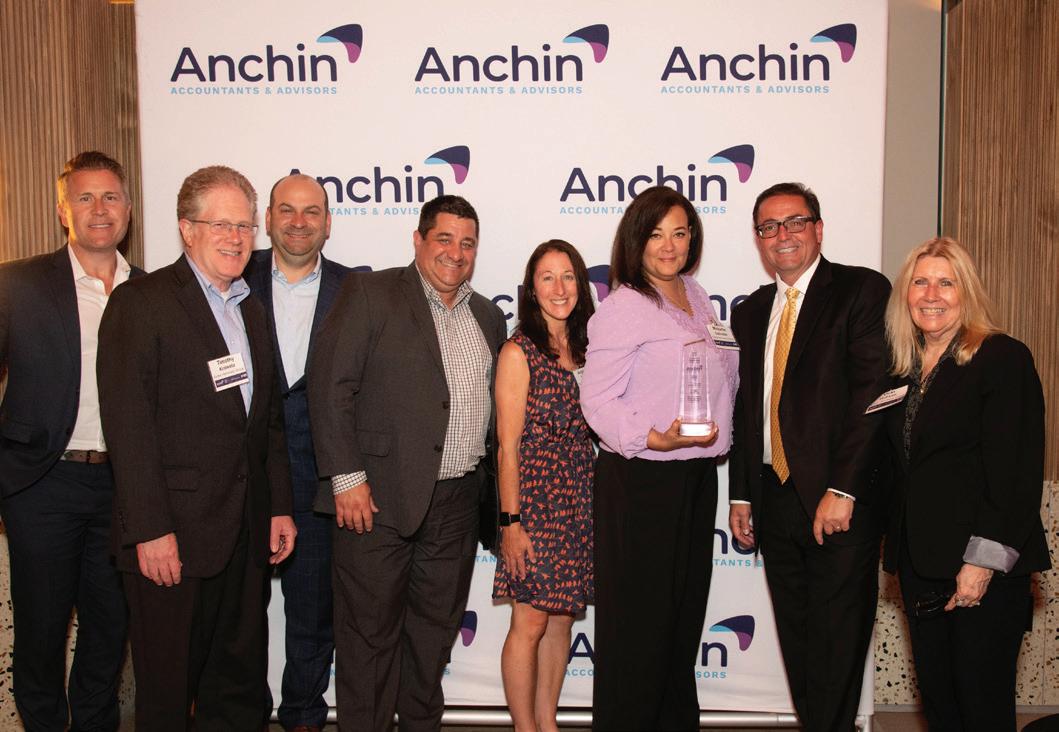
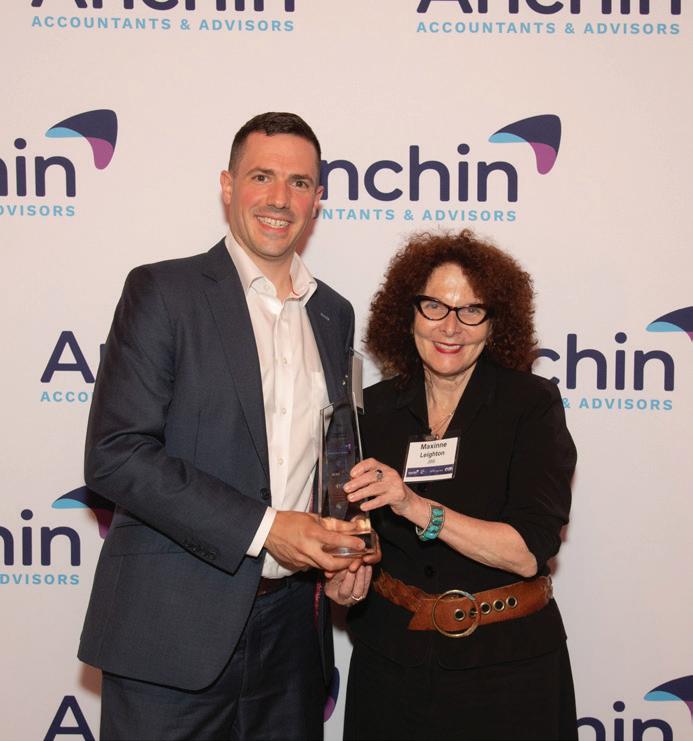
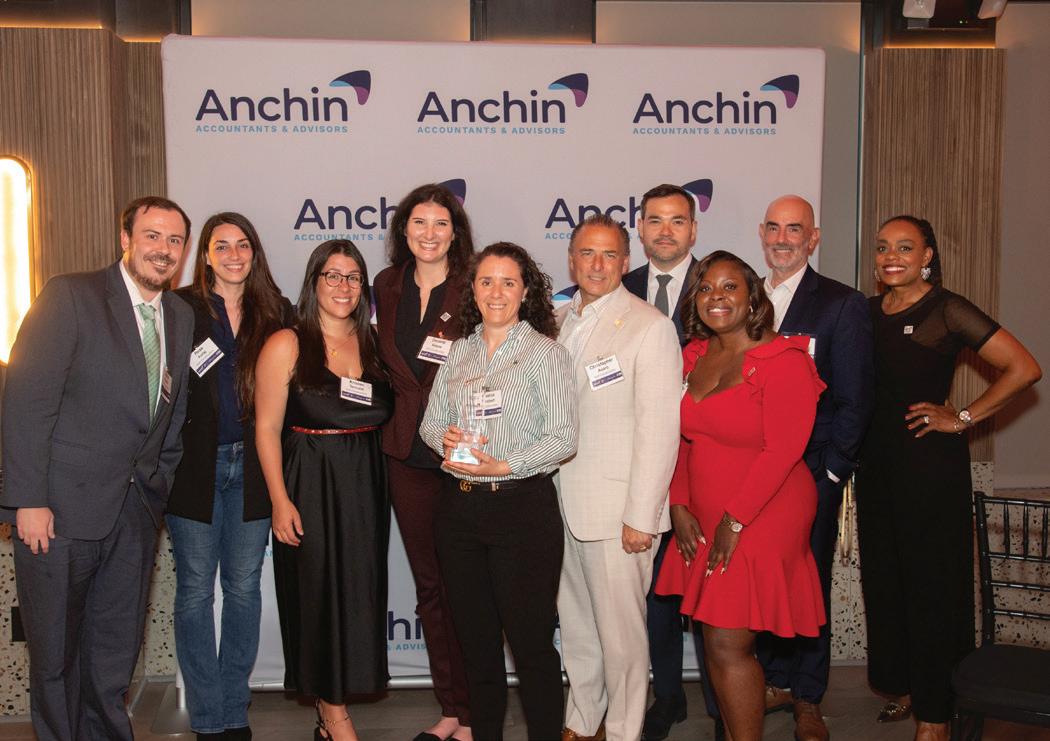
As part of its 50-year anniversary celebration, Rosenberg & Estis P.C. welcomed members of the Metropolitan Black Bar Association (MBBA) as host of its inaugural “Elevate & Empower: Black Real Estate Development Symposium” at the firm’s offices at 733 Third Ave.
R&E Associate Shakiva Pierre, along with Jerome Frierson, director of housing team for Bronx Defenders, moderated a panel discussion with Leleah James, vice president of community engagement at Related Affordable; Josiane Lysius, associate broker at Corcoran Group; Kenneth Morrison, managing member and principal, Lemor Development Group; Malcolm Punter, president, Harlem Congregations for Community Improvement Inc. and Craig Livingston, managing partner at Exact Capital.
“Rosenberg & Estis has grown, evolved and diversified over its 50 years serving New York’s real estate industry and we are proud to host this inaugural symposium on behalf of the MBBA,” said Managing Member Michael Lefkowitz. “With a 1% vacancy, it is clear New York does not have enough housing, especially workforce housing. Our speakers offered tremendous insight into ways the real estate industry can adapt and change in the same way the city has to provide homes for everyone who wants to live here.”
The MBBA is a unified, citywide association of Black and other minority lawyers in the New York metropolitan area, with members in all five boroughs. In further celebration of its 40th year as New York’s largest unified Black bar association, MBBA’s roundtable discussion focused on leveraging real estate development to empower the Black community. Topics included past, present and future development initiatives, perspectives on community engagement and strategies for increasing Black representation in real estate development.
“Real estate creates jobs, stimulates economic growth and generates wealth,” said Pierre, who serves as MBBA co-chair, real estate law section. “Open fo-

rums like the MBBA Symposium provide an ideal platform for sharing information that can increase Black representation in the process and we are thankful to Rosenberg & Estis for their ongoing support.”
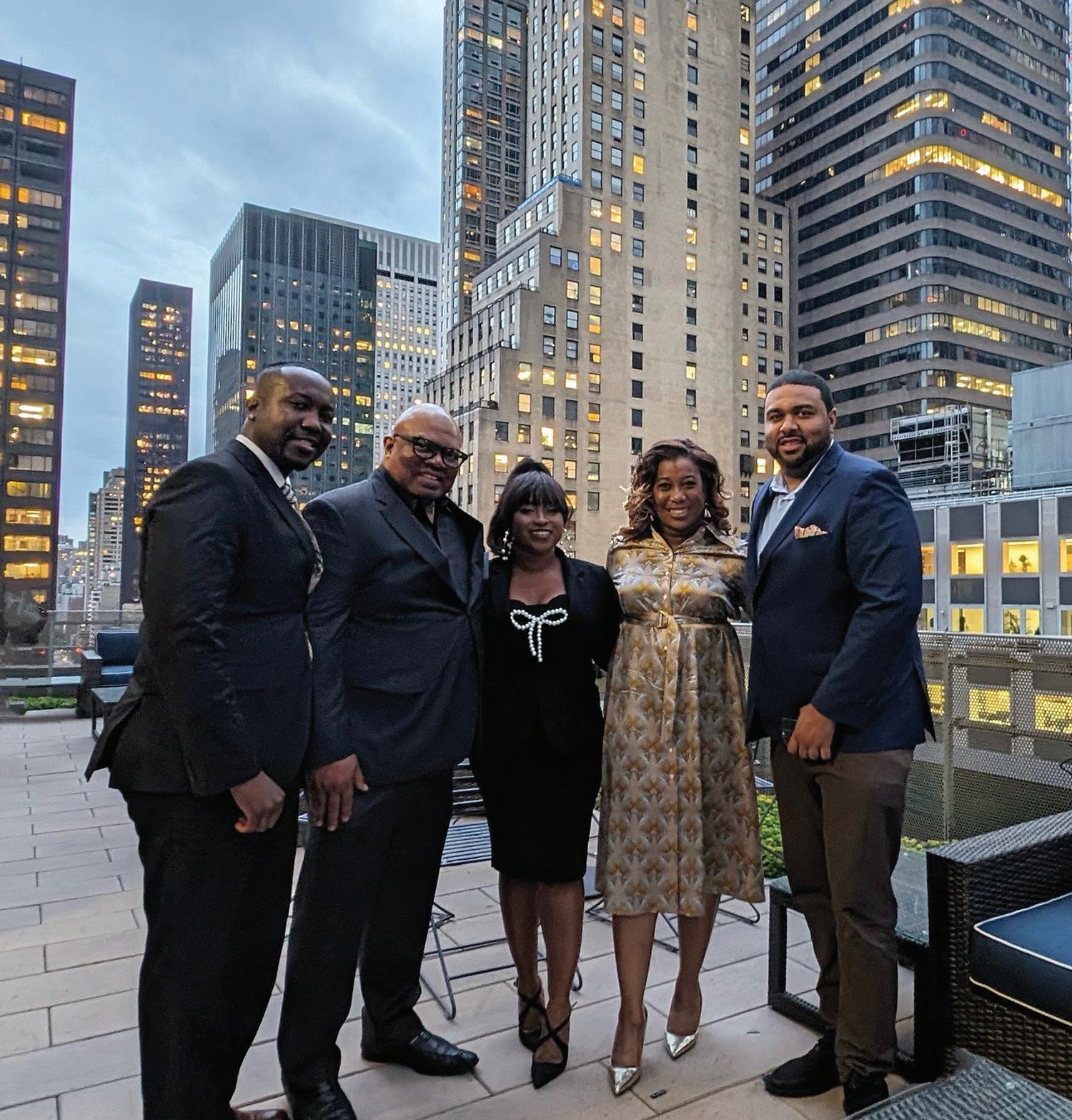
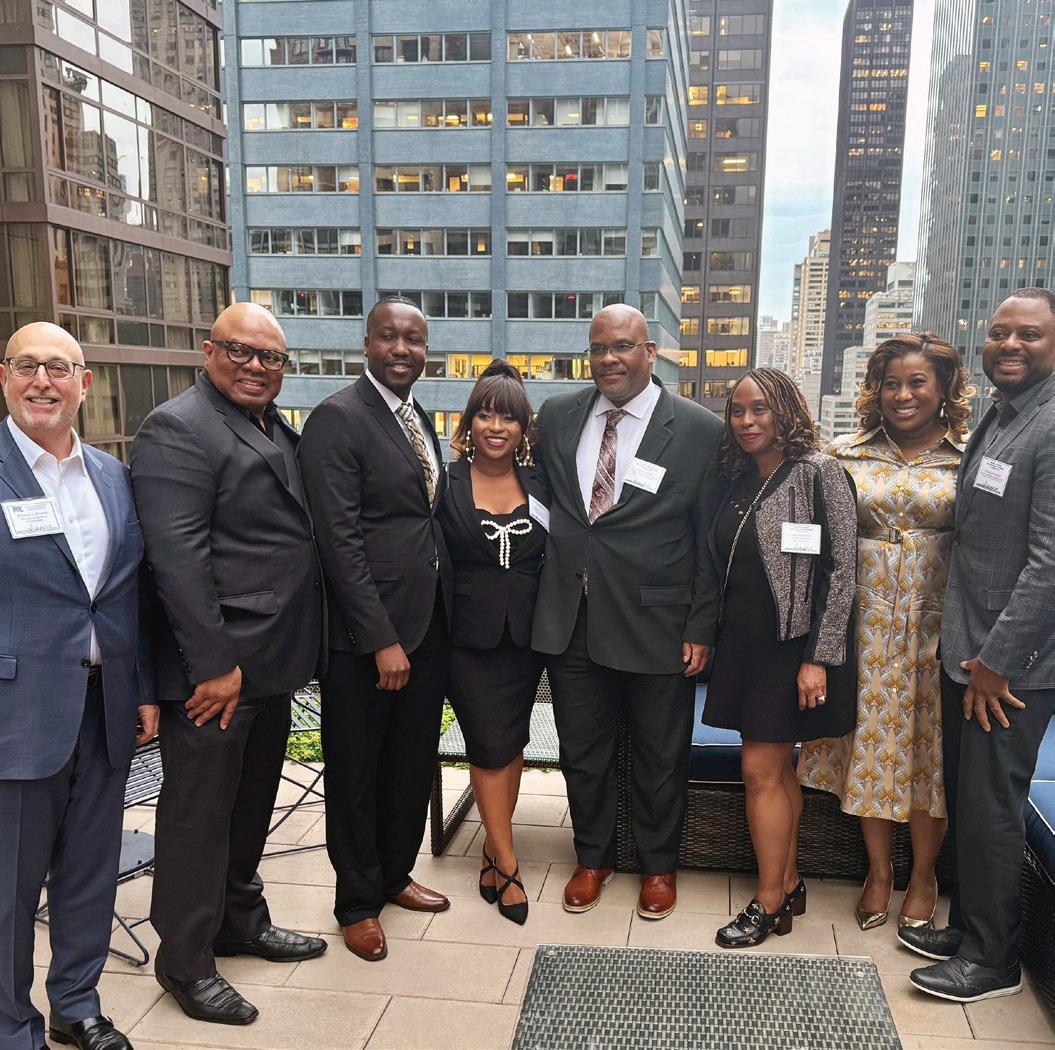
Enso, a tire technology company that makes better tires for electric vehicles (EVs), has signed a Letter of Interest (LOI) with the ExportImport Bank of the United States (U.S. EXIM Bank) to establish a carbon-neutral tire factory in America. Potential factory locations include Colorado, Nevada, Texas and Georgia, with other states in consideration.
U.S.-based technology partners Rockwell, global sustainable development firm Arup and U.S.-based investors 8090 Industries and Galway Sustainable Capital are supporting Enso.
The first-of-its-kind tire factory will be carbon-neutral without purchased offsets, utilizing carbon-neutral raw materials, building materials and 100% renewable energy. In its first phase, the factory will produce five million EV tires by 2027 and create 600 jobs, rising to 2,400 jobs when built out to full production capacity of 20 million tires — 8% of America’s total annual tire market. The Enso technology campus will integrate research and development with production under one roof.
“The U.S. is the best place for Enso to establish its first carbon-neutral tire factory. With strong regulatory support and a significant market opportunity, we are committed to bringing our innovative, low-emission, low-cost tires to American consumers,” said Enso CEO Gunnlaugur Erlendsson. “This factory will make tires more affordable, reduce tire pollution, create great jobs and drive sustainability in the U.S. tire industry.”
The U.S. regulatory environment strongly supports Enso’s move to America. Initiatives such as the Inflation Reduction Act have transformed the automotive sector and enabled more ambitious EPA (Environment Protection Act) emissions standards, paving the way for similar advancements in the tire industry.
Programs such as the California Energy Commission’s (CEC)

Replacement Tire Efficiency Program and the California Environmental Protection Agency’s (CalEPA) efforts to control toxic chemicals such as 6PPD in tires align with ENSO’s goals, by setting out minimum efficiency and environmental standards for both new and aftermarket tires.
Currently, the majority of tires sold in the U.S. are imported. This factory will help reduce America’s reliance on imports.
Enso’s tires already increase EV range by 10% and reduce particulate matter emissions by 35%, the company said. By producing fewer, longer-lasting tires with better technology, Enso aims to cut tire pollution, which is responsible for six million tons of particulate matter emitted globally each year and icontributes to ocean microplastic pollution and air pollution.
The company has committed to completely phasing out all fossil fuelbased raw materials from its products by 2030, replacing them with bio-based renewable and low-carbon alternatives.
The Square, Hines’ flexible workplace platform, will open its first New York City location at 205 Hudson in Hudson Square this summer. This marks The Square’s sixth location globally, with additional locations in Washington, D.C., Houston, Salt Lake City and Mexico City. Taking over the former WeWork space, The Square in New York City will occupy nearly 63,000 square feet.
205 Hudson is part of the Hudson Square Properties portfolio, a joint venture of Trinity Church Wall Street, Norges Bank Investment Management and Hines, consisting of 13 office buildings across approximately six million square feet of commercial space.
“There is a universal shift towards greater flexibility, across small businesses to large enterprises, and we are leading the way in redefining new products that cater to our clients’ needs beyond traditional long-term leases,” said Annie Draper, director of workplace services at Hines. “As the office model continues to transform in today’s dynamic world of work, and with each company operating in different ways, the demand for a diverse array of workspace options becomes increasingly essential.”
Designed for the modern occupier, The Square will offer on-demand meeting rooms and office space at 205 Hudson that are bookable by the hour, day, week or month. Spaces include Enterprise suites, large, fully customizable for suites of teams of 25 and more with
private offices, meeting rooms and amenity spaces; private offices and flex suites for teams from one to 25 and on-demand meeting rooms and office spaces. Members gain access to common spaces, private phone booths, state-of-the-art technology, as wel as food and beverage services.
The Square at 205 Hudson can accommodate over 700 people spread across offices and suites, including 12 conference rooms that can be booked by non-members. Members will have access to building amenities across the Hudson Square portfolio, including an expansive rooftop with views of Manhattan, and lounge and event spaces. They will also gain access to The Square’s network of collaboration and office spaces.





AT AGGRESSIVE ENERGY we’re striving to power New York and beyond with affordable fuel, oil, biofuels, natural gas and electricity. In addition to competitive pricing, we’re committed to our customers and have been offering reliable energy service for more than 30 years. As a leading energy supplier throughout the northeast, we promise to uphold our premium service while doing what’s right for our environment and our economy.
Our knowledgeable professionals, experienced in all aspects of the industry, are ready to advise you on your energy needs. For more information, call us at 888.836.9222 or visit our website at www.AggressiveEnergy.com
Tredway, an affordable and mixed-income real estate developer that builds and preserves high-quality, high-opportunity housing, and ELH Mgmt LLC announced the acquisition of a seven-building portfolio in Brooklyn’s Fort Greene neighborhood.
Concurrent with the acquisition, Tredway has extended the affordability of the properties for another 40 years, ensuring all 193 homes will serve low-income households earning no more than 50% of area median income. An additional 30% of the homes will be reserved for formerly homeless individuals and families.
“The tremendous changes we’ve seen in Fort Greene over the past decade have unfortunately made it difficult for longtime residents to remain in the community they pioneered,” said Will Blodgett, CEO and founder of Tredway. “By locking in affordability for elderly and vulnerable residents, we hope the preservation of Greene Clermont Houses and Tri-Block Houses Apartments serves as a bulwark against displacement and an example of the socio-economic diversity that makes New York City so great.”
Tredway and ELH are investing more than $10 million to renovate the portfolio, which has been largely untouched since it was built. The cornerstone of the preservation is a 97-unit, elderly-designated, midrise building located at 80 Greene Ave. Built in 1982, Greene Clermont Houses is home to longtime residents of Fort Greene who will benefit from critical aging-in-place retrofits aimed at enhancing residents’ quality of life.
A redesigned indoor and outdoor community space and a new wellness center will allow on-site vaccination and nursing services and include office space for a resident services coordinator. Jericho Project, a nonprofit, has been retained to provide social services with an emphasis on housing retention and stabilization, as well as ageappropriate programming.
Collectively known as Tri-Block Houses Apartments, the remaining buildings are located at 36 Fort Greene Place, 56 Fort Greene Place, 35 St. Felix St., 42 St. Felix St., 51 St. Felix St. and 221-225 Ashland Place. Apartments will receive new bathrooms, kitchens, lighting and flooring, while lobbies and commons areas will be refreshed for the first time in over 40 years.
The project is being financed with a $97 million Freddie Mac loan from Wells Fargo. The total development cost is estimated to be $110 million. The sale was brokered by Affordable Housing Advisors.

Vornado Realty Trust celebrated the completed transformation of a portion of West 33rd Street into Plaza33, a permanent pedestrian plaza in the heart of the Penn District.
Developed through a public-private partnership with the NYC Department of Transportation, the 1/3-acre promenade boasts mature trees, lush landscaping, circular stone benches and colorful chairs and tables. Sitting directly above Penn Station’s new LIRR Concourse, Plaza33 is an oasis for the surrounding neighborhood and a new connection to transit, nearby amenities, office buildings and over 70 food and beverage offerings.
Plaza33 is the centerpiece of a $65 million project by Vornado to make the streetscape around Penn Station safer, greener, more accessible and more pedestrian-friendly. In addition to the plaza, Vornado has partnered with the New York CIty Department of Transportation to replace one-half mile of concrete sidewalks across the District with distinctive Petit Granit stone pavers, and to double the width of the crowded Seventh Avenue sidewalks that border Penn Station, the nation’s busiest transit hub.
The Plaza features 16,000 square feet of reclaimed public space for pedestrians; five mature October Glory maple trees; a connection to the newly renovated East Plaza at Penn 1, the recently completed
grand entrance to Penn Station’s all-new LIRR Concourse and the new ADA-compliant Amtrak entrance at 32nd Street; special programming provided through the 34th Street Partnership and new food and beverage offerings in adjacent retail space curated by Vornado that serve a wide range of budgets and tastes, including Roberta’s Pizza, Los Tacos No. 1 and Anita Gelato.
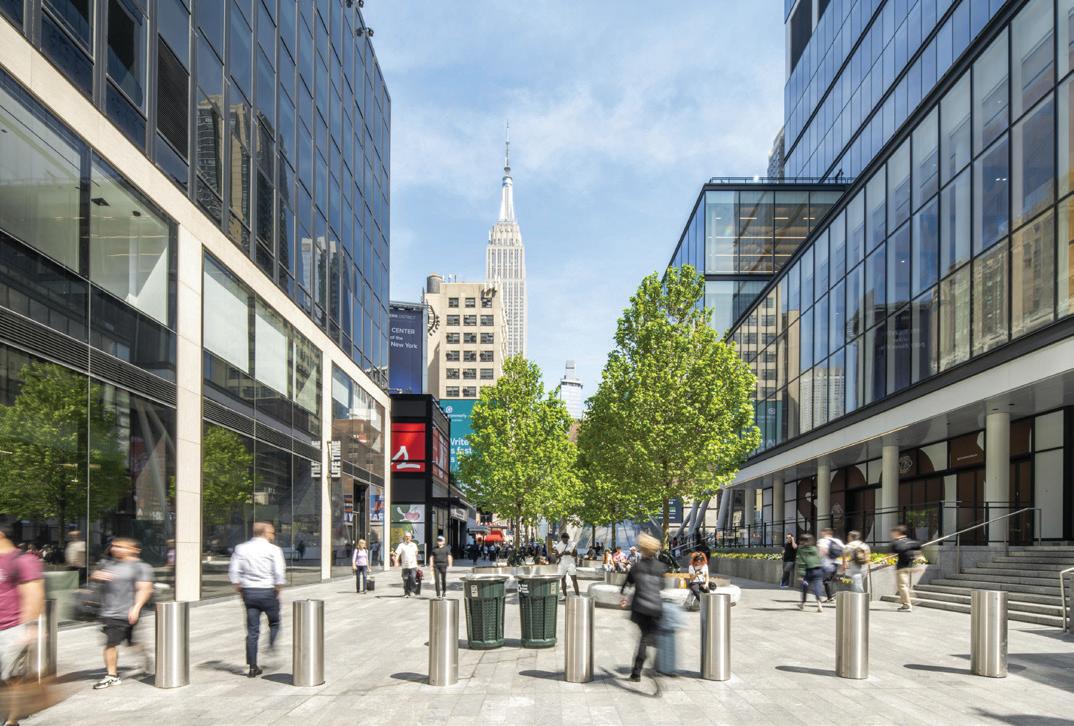
Lendlease, LMXD (an affiliate of L+M Development Partners) and Daiwa House Texas Inc. announced the official completion of Claremont Hall, designed by Robert A.M. Stern Architects (RAMSA). Located at 100 Claremont Ave. in Morningside Heights, Manhattan, Claremont Hall features 165 condominiums including one- to four-bedroom residences within the Union Theological Seminary (UTS) campus.
The 41-story mixed-use building offers residents river, skyline and park views as well as proximity to the the Morningside Heights neighborhood adjacent to Columbia University. The building is available for immediate occupancy, with pricing starting at $1.195 million and residences ranging from 700 square feet to 2,765 square feet.
Each condominium features sweeping views, expansive ceiling heights, oversized windows and European white oak flooring. The kitchens, equipped with Bosch appliances, feature custom RAMSA-designed Italian cabinetry in a choice of classic Bianco or modern Grigio finish, complemented by Calacatta Laza quartz countertops and chrome fixtures and hardware. Select residences boast private outdoor terraces.
Claremont Hall’s design reflects the Gothic Revival character of the seminary campus and surrounding neighborhood. Designed by RAMSA, the building incorporates Gothic stonework at its base, connecting with the entry facade and the preserved historic campus buildings.
Crafted in collaboration with CetraRuddy Architects, amenities include a walnut-paneled library, a grand dining room, a children’s playroom, a creative maker’s space, a resident lounge with a terrace, a fitness center, convenient onsite parking and an indoor pool housed within the former refectory for seminary students and faculty. Additionally, the refectory space will be available for residents to host private events.
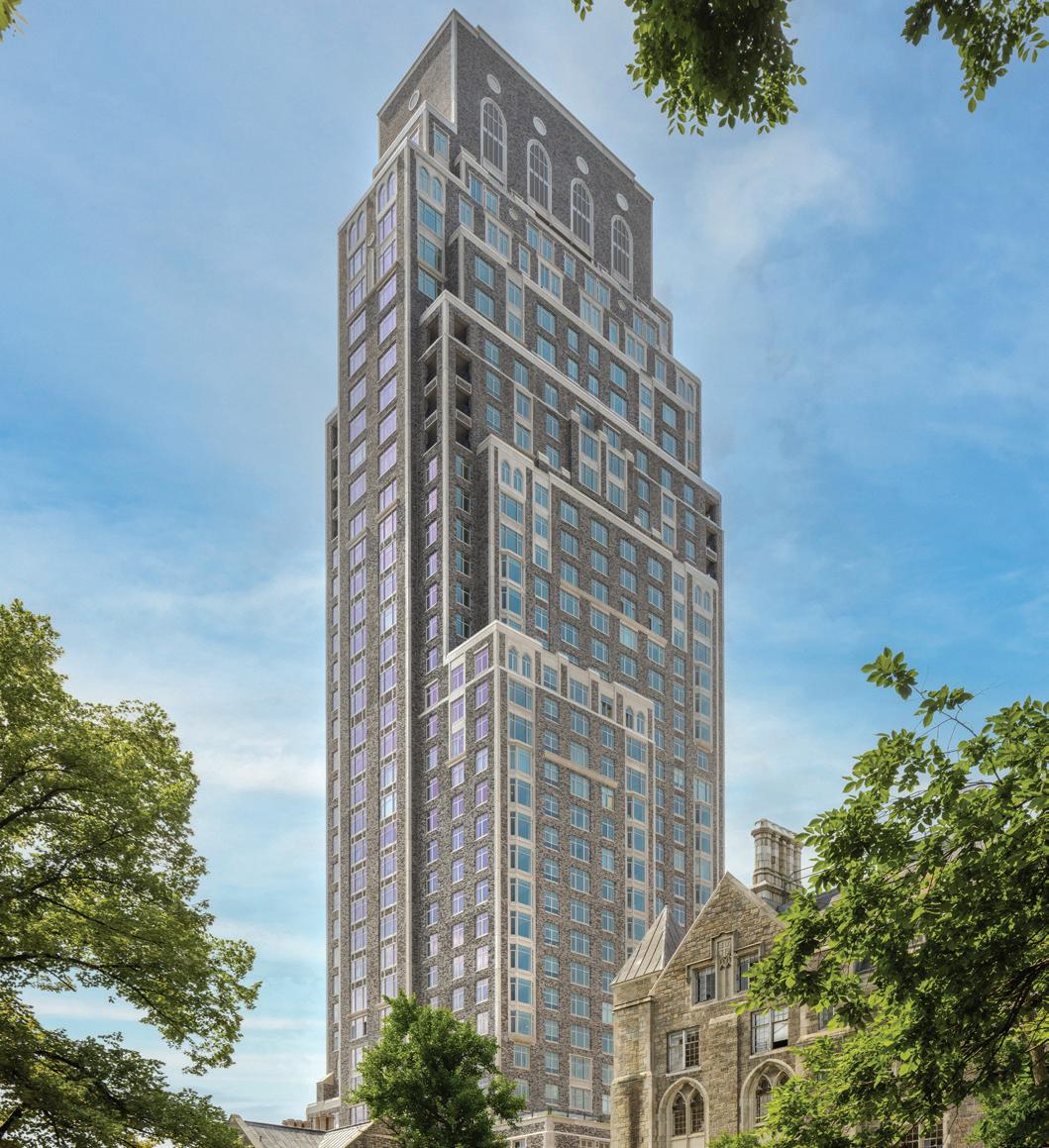
Detroit is the best city for real estate agents in America, while San Francisco is the worst, according to research from Clever Real Estate, a St. Louis-based real estate company.
The study ranked the 50 most-populous U.S. metros on metrics such as affordability, salary, number of agents, annual home sales, home values, commission rates and more.
Detroit emerged on top, with nearly five times as many sales per agent as the median market, the lowest competition from fellow agents, and some of the highest commission rates in the country.
Following Detroit in the top 10 are: Buffalo, New York; Kansas City, Missouri; Tampa, Florida; Richmond, Virginia; Columbus, Ohio; Jacksonville, Florida; Atlanta; Pittsburgh and Hartford, Connecticut.
Regionally, seven of the top 15 cities for real estate agents are in the Midwest, while the Northeast and South each have four. No top-ranked cities are in the West, although six of the 10 worst-performing cities are in that region.
The 10 worst cities for real estate agents are San Francisco; Austin, Texas; San Jose, California; Dallas; Milwaukee; New Orleans; Las Vegas; Phoenix; Los Angeles; and Riverside, California.
San Francisco ranks as the worst city due to high competition, the fewest sales per agent and the second-longest amount of time needed to afford a home on an agent’s salary. Notably, four of the 10 worst cities

for agents are located in California.
The study also surveyed agent earnings. Perhaps not surprisingly, agents in New York City earn the highest median salary at $103,960 per year, making it the only U.S. market with a six-figure median income. Conversely, agents in Riverside, California, earn the lowest median income at $33,510 annually.

Toll Brothers’ Toll Brothers City Living Division and Sculptor Real Estate announced that construction is complete and closings have commenced at The Rockwell. Located at the corner of 103rd Street and Broadway on Manhattan’s Upper West Side, The Rockwell offers 81 luxury condominiums and a full complement of amenities. The building was designed by Hill West with interiors by Whitehall Interiors.
Pricing ranges from $989,000 to $3.5 million.
“It’s a proud day for our team to complete this beautiful building with its brick and bronze façade – a true stand out along the Broadway corridor,” said David Von Spreckelsen, president of Toll Brothers City Living. “We’re pleased to open our doors and begin to welcome our first homeowners to The Rockwell, as well as welcome potential buyers to view our stunning model residences. With its thoughtful design, outstanding amenities, and convenient location, The Rockwell has resonated well with homebuyers and we’re now over 40% sold.”
Residences at The Rockwell feature bright living spaces with Kährs 5-inch-wide white oak flooring and open kitchens with integrated Thermador appliances and custom Poliform cabinetry and brushed nickel accents. Luce de Luna quartzite (renowned for its durability and natural beauty) comprise the kitchen backsplashes and countertops.
Amenities include a residents’ lounge with bookable dining room, a fitness studio, pet wash, music room, screening room, playroom and two separate terraces — a second-floor lounge terrace with seating nooks tucked amid verdant landscaping, and a rooftop terrace with lounge seating, outdoor dining, grilling stations and sunbathing chaises.
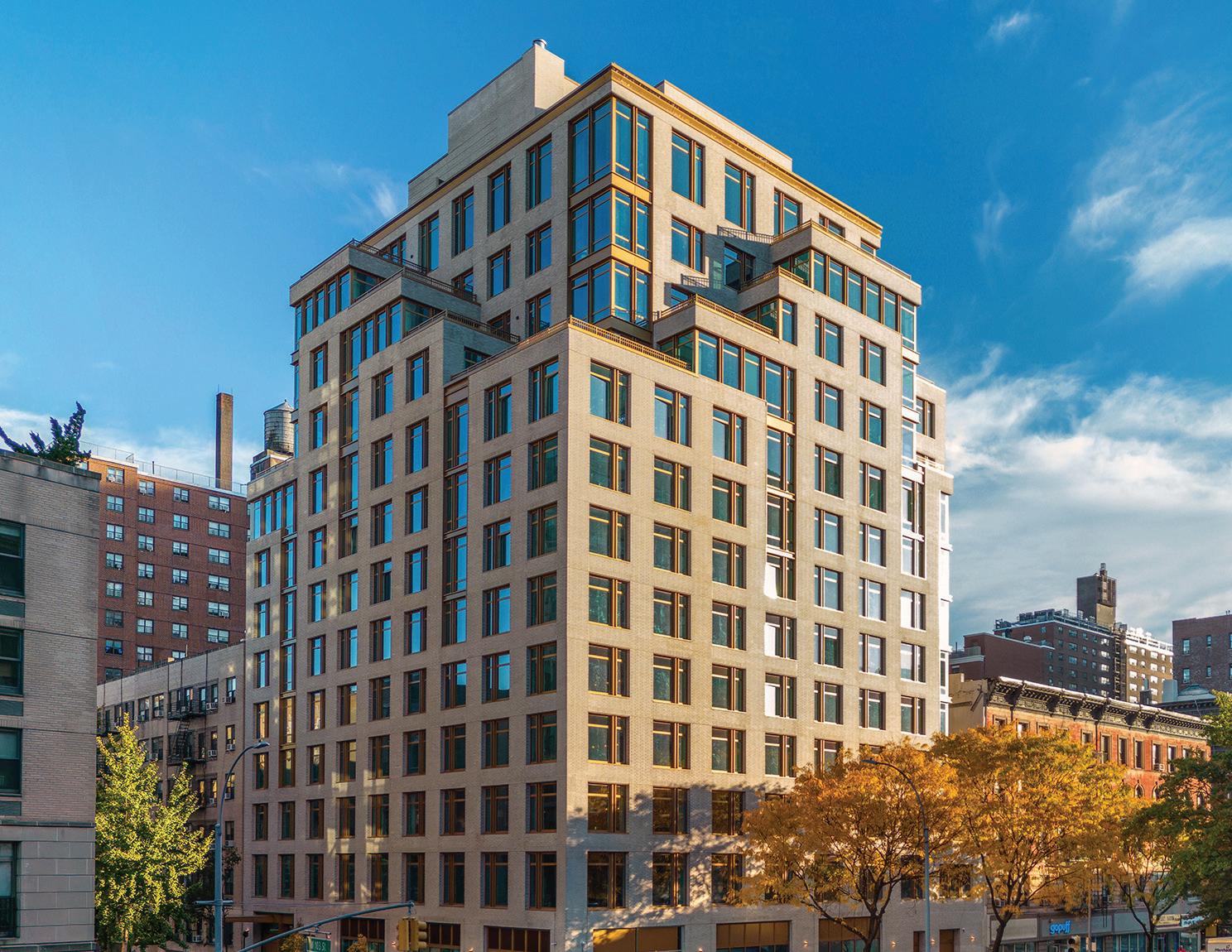
Co-exclusive sales and marketing is provided by
Toll Brothers City Living is the urban development division of luxury home builder Toll Brothers Inc. Since its formation in 2003, Toll Brothers City Living has completed 45 condominium buildings totaling over 7,200 residences. Sculptor is a global alternative asset management firm with approximately $32 billion in assets under management.
Despite a pandemic construction boom, the U.S. housing shortage grew to 4.5 million homes in 2022, up from 4.3 million the year before, according to a Zillow analysis. This deepening housing deficit is the root cause of the housing affordability crisis.
At its core, the housing market is driven by supply and demand. This balance reached a tipping point when the Great Recession ushered in a decade of underbuilding and millennials — the biggest generation in U.S. history — reaching the prime age for first-time home buying. The result has been worsening affordability, now exacerbated by stubbornly high mortgage rates, the company said.
“The simple fact is there are not enough homes in this country, and that’s pushing homeownership out of reach for too many families,” said Orphe Divounguy, senior economist at Zillow. “The affordability crisis extends to renters as well, with nearly half of renter households being cost burdened. Filling the housing shortage is the long-term answer to making housing more affordable. We are in a big hole, and it is going to take more than the status quo to dig ourselves out of it.”
Across the country in 2022, there were roughly 8.09 million “missing households” — individuals or families living with nonrelatives. Compare that to 3.55 million housing units that were available for rent or for sale, and there is a housing shortage of more than 4.5 million.
The pandemic-era housing frenzy sparked a construction boom, but thus far, that boom has fallen short. In 2022, 1.4 million homes were built — at the time, the best year for home construction since the early stages

of the Great Recession. However, the number of U.S. families increased by 1.8 million that year, meaning the country did not even build enough to make a place for the new families, let alone to ease deficit that has hampered housing affordability for more than a decade.
One indicator of housing affordability is how strict a region’s landuse rules are, the Zillow research showed. Those who live in highly regulated housing markets, as defined by the Wharton Residential Land Use Regulatory Index, are less likely to be able to afford the mortgage payment on a typical home in their metro, even in markets with higherthan-average incomes. This is because housing supply persistently falls short.



Founded over 30 years ago, Zetlin & De Chiara LLP is one of the nation’s leading construction law firms. Our attorneys deliver a full range of legal services centered around construction law throughout the United States and abroad.



Florida- and New York-based property management company Akam announced the acquisition of Property Management Resources (PMR) in Southern Florida, furthering the company’s footprint in the state. The financial terms of the agreement were not disclosed.
Through the acquisition, properties previously managed by PMR have access to Akam’s property management services and services including capital project management, energy services, procurement and insurance and risk management.
“For over 40 years, we have been a long-standing leader in property management, delivering exceptional service and tremendous value to our clients,” said Akam CEO Ken Greene. “We are very excited to add these dedicated professionals to our A team and provide our newest clients with the very best we have to offer.”
PMR began in 1974 as a family-run business, with a focus on dedicated and highly personalized services. The company offered complete servicing in administration, financial management and property maintenance in Palm Beach County.
“We’re proud to bring the properties we’ve served an elevated level of support and resources through Akam’s successful property management model,” said Ralph Hintz, president of PMR. “We’re confident that by becoming a part of Akam, we are adding instant value for our residents, and they’ll see those returns quickly.”
Allegra Hintz, a member of PMR’s founding family, will join Akam’s

Florida team led by Southeast Executive Vice President Kat Flores.
“Our first priority is always people — our team members and our clients,” said Flores. “We look forward to learning and growing with our new colleagues as well as bringing Akam’s hospitality-led services and solutions to customers. “We have the tools, technologies, and experts ready and willing to enhance the value, comfort, and security of each home.”
CBRE Group Inc. announced that the company plans to combine its project management business with Turner & Townsend, its majority-owned subsidiary that provides program management, cost consultancy and project management services globally.
Upon closing the transaction, CBRE will own 70% of the combined Turner & Townsend/CBRE Project Management business, with the Turner & Townsend partners holding the remaining 30%. CBRE acquired a 60% ownership interest in Turner & Townsend in November 2021. Since then, Turner & Townsend has grown revenue at a compound rate of more than 20%.
CBRE’s entire project management business, including Turner & Townsend, produced net revenue of approximately $3 billion in 2023. Since 2021, combined net revenue has grown at a double-digit annual rate with an approximately 15% net profit margin.
The net synergies derived from bringing the two businesses together are expected to generate approximately $0.15 of incremental run-rate core EPS by the end of 2027, an amount that is expected to grow.
The cost of the incremental investment in Turner & Townsend/CBRE Project Management is about $70 million, exclusive of deal costs.
“Unifying our Project Management business will create an offering that is unmatched for its scale and breadth of capabilities, with more than 20,000 employees serving clients in over 60 countries,” said Bob Sulentic, CBRE chair and chief executive officer. “Powerful secular trends, particularly increased spending on infrastructure, green energy and employee experience, are growth catalysts for this business and we are well-positioned to capitalize on this significant opportunity.”

The combined business will be led by Vincent Clancy, Turner & Townsend’s chief executive officer, who will continue to report to a board controlled by CBRE and comprised of senior executives from both CBRE and Turner & Townsend. The CBRE board intends to appoint Clancy to the board upon closing the transaction.
Turner & Townsend operates across three business segments globally: Real Estate, serving investors and occupiers across all property types, including data centers and life sciences; Infrastructure, notably transport and aviation and Energy and Natural Resources, including renewable energy, alternative fuels and liquified natural gas.

Fried Frank’s real estate department is partnering with Project Destined, a social impact platform that provides students with training in financial literacy, entrepreneurship and real estate, to launch a multiweek, virtual program on September 10, 2024, that will introduce 15 diverse undergraduate students to career opportunities in real estate law and development.
The program, titled the “Real Estate Law and Development Bridge Program,” will connect students to Fried Frank’s real estate partners and the firm’s clients, as well as provide participants with a corresponding curriculum led by graduate school professors.
The Real Estate Law and Development Bridge Program will include an Executive Speakers Series comprised of four 60-minute, live Q&Astyle panels led by partners in Fried Frank’s real estate department and the firm’s real estate clients. The series will cover topics such as “Buying and Selling Real Estate,” “Art of Land Use and Zoning,” “Financing the Transfer of Real Estate” and “Joint Ventures”. The program will also include a six-week curriculum called “Real Property Law & Development,” which will be led by graduate school professors with experience in real estate law.
“It is our duty to give back to the community and share our knowledge with the next generation of leaders,” said Jonathan L. Mechanic, partner and chairman of Fried Frank’s real estate department. “We are incredibly excited to partner with Project Destined to launch this comprehensive program that will build relationships across generations and open doors for future real estate attorneys.”

Destined has partnered with more than 250 leading firms. Fried Frank previously partnered with Project Destined in 2018 to support the launch of its successful Bronx program, which was a multiday curriculum that taught students financial literacy and leadership development through mentorship from top-tier experts in the real estate investment field, including bankers, brokers, architects, celebrities and attorneys from Fried Frank’s real estate department.
NanaWall announced that its Cero Large Panel Minimal Sliding Glass Walls have been redesigned and reimagined to offer even more architectural possibilities and capabilities for architects. NanaWall Systems designed Cero to be simple in form but engineered to perfection, producing clean, uniform and ultra-thin lines for maximum light-filled spaces that allow the inside and outside to become one whether open or closed.
“We designed Cero to offer the most pure, symmetrical and minimalist elements for architectural design — while maintaining the highest standards of engineering and technical performance,” said Ebrahim Nana, president and founder of NanaWall Systems. “For almost a decade, Cero has been the architect’s choice for creating striking, light-filled environments with maximalized sightlines in both commercial and residential applications. Our new updates will solidify that position and allow Cero to be utilized in even more designs and configurations.”
Some of the new features in Cero include panels heights up to 15 feet — more than 15% taller than the original; a new minimal sill that visually disappears with finished flooring inserts and provides barefoot friendly transitions; rails and stiles with an ultra slim and uniform 1 5/16 inches (34mm) top to bottom, side to side; glazed floor-toceiling facades into flexible openings in commercial settings and fully tested and acoustically rated minimal sliding glass walls capable of reaching sound control up to a unit STC 43. The system also offers what NanaWall calls “breathtaking design possibilities for residential projects, allowing floor-to-ceiling openings in clerestory and double height living spaces.”
An additional benefit is NanaWall’s technical support team, which
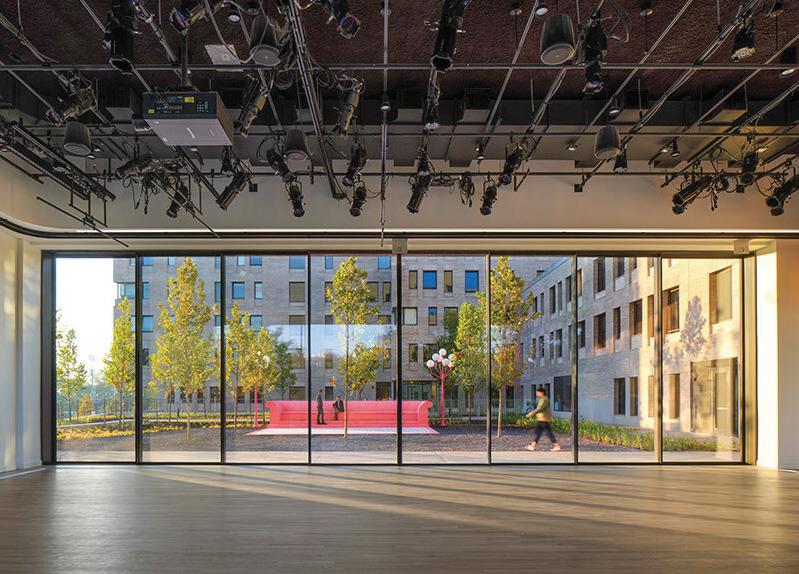
includes experienced installation managers and certified installers, who work with the architect and contractor every step ensuring precision installations.
NanaWall Cero offers multiple track and concealed carrier systems for smooth gliding with the minimal, flush and performance sill options. An integrated screen is available for configurations that slide and meet the jam. Optional automation features include a two-step safety feature with motion sensors to protect people and pets, system auto-lock and wired or wireless smart switches. The NanaWall 3D Configurator can also be used to design and test Cero configurations to produce specifications and design drawings with just seven simple steps.

















AppFolio announced a series of innovations to its AppFolio Realm-X, its embedded generative AI that provides real-time assistance by combining the latest foundation models with industry-specific context. Additional innovations include enhancements to AppFolio’s student housing and affordable housing solutions and AppFolio Stack marketplace partners.
Every AppFolio user can now access Realm-X Assistant and Realm-X Messages. These solutions give property managers and their teams a new way to experience AppFolio while achieving significant productivity gains, all within AppFolio’s one platform.
“With Realm-X, every team member is equipped with their own personal co-pilot — an additional pair of ‘hands’ to assist in managing the perpetual to-do list synonymous with property management,” said Will Moxley, senior vice president of product at AppFolio.
Realm-X Assistant is a co-pilot experience, accessible everywhere in AppFolio to get work done faster and easier. With a single prompt, Realm-X Assistant can generate reports, initiate individual and bulk tasks and automate time-consuming tasks for managing vendors, residents, properties and owners.
Realm-X Messages is a reimagined inbox that helps property managers sort through, act on and respond to routine resident communications. Realm-X Messages uses a message’s context to guide users toward appropriate steps and provide quick, clear and relevant replies with personalized details.
AppFolio also announced it is piloting Realm-X Flows, a workflow automation engine that helps users standardize their processes through workflows defined by users and automated with AI. Realm-X

Flows can be taught to complete tasks, such as rental applications, rent collection and lease renewals, tailored to each customer’s specific business needs.
For customers with student housing in their portfolios, AppFolio has introduced Flexible Leasing, offering property managers flexibility to lease units to either groups or individuals, as well as mix the two lease types within the same unit and Pre-Leasing Metrics, providing a comprehensive, real-time view of leasing performance.
For customers managing affordable housing properties or units within their portfolios, AppFolio has introduced enhanced Tenant Income Certification (TIC) support, which improves LIHTC solutions in AppFolio with fully populating, accurate TIC forms and new HUD features to recover costs.
Northspyre, a real estate development platform for project delivery and capital management, launched two new products — Complex Capital Management and Portfolio Analytics Plus.
Complex Capital Management helps developers proactively monitor financial risk, track compliance and satisfy unique reporting requirements. This includes projects with complex capital stacks, including Low Income Housing Tax Credit (LIHTC) developments and deals with multiple capital partners. Portfolio Analytics Plus enables developers to make data-informed decisions by automatically benchmarking costs, as well as project and vendor performance data.
Northspyre’s Complex Capital Management solution addresses the nuances of financially intricate developments with a suite of predictive intelligence and automation tools. It also has specific applications for developers working on projects within the LIHTC space. Developers can track and forecast the allocations of each funding source throughout the lifespan of a project — a task that was historically completed manually. This tool saves teams time by automatically generating personalized financial reports and ensuring project spending meets 50% test compliance requirements set by various financial partners.
Key features of Complex Capital Management include automated source transactions by pairing sources down to the invoice and assigning multiple sources to each budget line, automatically drawing funds from the correct source when invoices come in for the associated budget item. The tool also auto-generates spending projections through the end of a project with capital source data layered in so developers can easily monitor budget progress and understand the timing of utilizing each source and when capital may run out. LIHTC
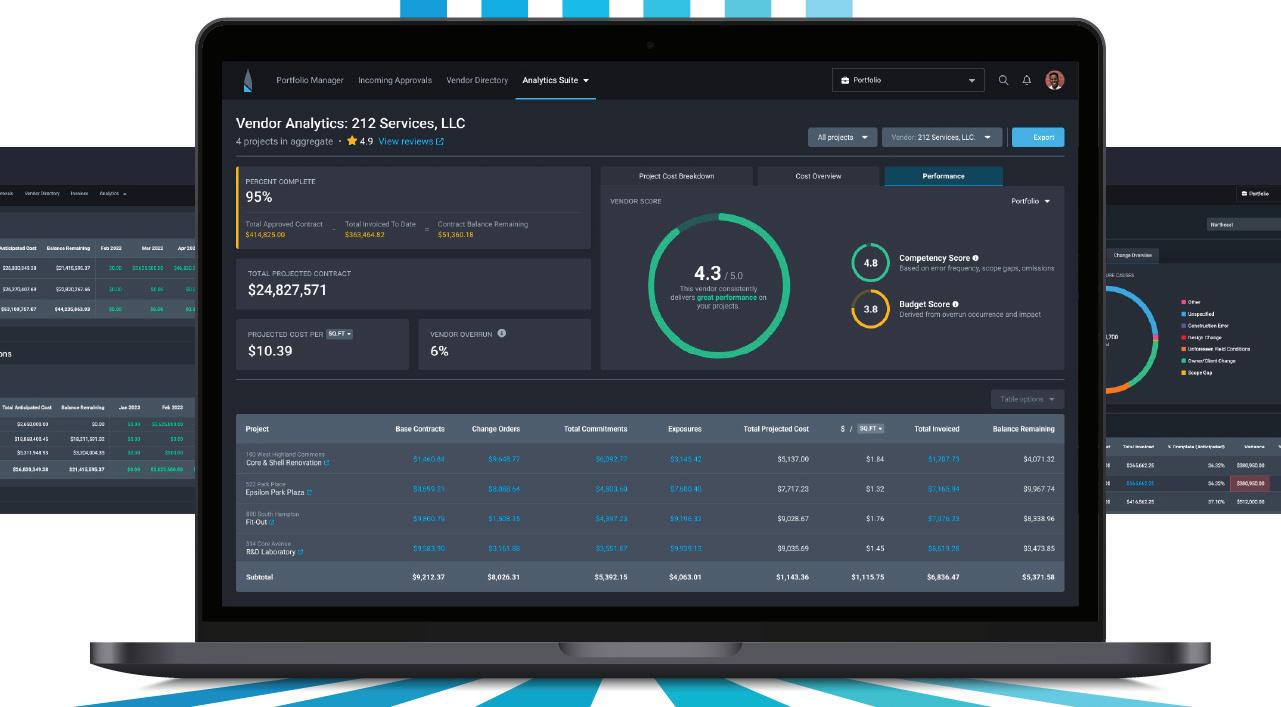
Compliance Forecast technology tracks basis-eligible budget line costs and invoices against tax-exempt sources to instantly generate detailed LIHTC reports.
Key features of Portfolio Analytics Plus include portfolio capital planning, giving executives a comprehensive view of source utilization and cash flow projections across a portfolio over a multi-year horizon.
The developer fee tool aggregates the developer fee cash flow across a portfolio, providing a holistic view of operating costs and projected income realization, while the compare feature allows users to compare projects to other projects or portfolio benchmarks using granular aggregated budget data (i.e. TAC, cost per unit, variance), including the delta between each when comparing two projects.


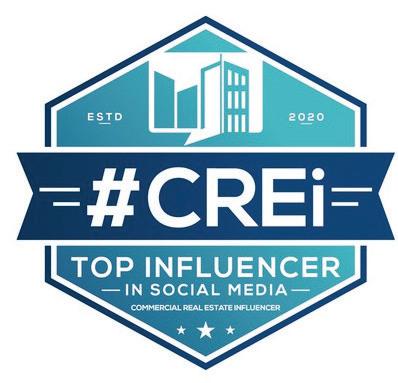
RentRedi, a property management software that says it simplifies the renting process for both landlords and tenants, has partnered with Home Title Lock to empower landlords to protect their rental properties from deed fraud and title theft. RentRedi landlords can purchase Home Title Lock’s TripleLock Protection, which includes monitoring, alerts and restoration services, at a discounted rate.
“Fraud has become a growing problem for rental property owners, and we are focused on providing access to cutting-edge security solutions that help our landlords and investors combat it,” said RentRedi Cofounder and CEO Ryan Barone. “Partnering with Home Title Lock provides our customers with the option to adopt a robust defense strategy specifically designed for landlords and rental property owners to protect their most valuable assets.”
TripleLock Protection has a 24/7 monitoring system that detects any changes or suspicious activities, such as unauthorized alterations to ownership documents or title transfers. Subscribers receive alerts of any changes, empowering landlords to take swift action to investigate and rectify any fraudulent activity. Landlords who fall victim to title theft or deed fraud have access to a team of restoration experts to help navigate the complexities of legal proceedings to reclaim their property rights.
“Rental investment homes and all their hard-earned equity can be too easily stolen with just a forged signature,” said Home Title Lock Vice President of Partnership Sales Chris Thompson. “RentRedi is the first property management platform to offer our TripleLock Protection




services, which provide proactive protection of rental investments through a frontline defense that gives RentRedi landlords and property owners peace of mind.”
In addition, RentRedi added an extra layer of security to its tenant screening process through a Plaid integration that provides landlords with the ability to seamlessly verify the income and assets of prospective renters, without requiring the exchange of sensitive documents.
RentRedi’s automated Tenant Income and Asset Verification feature, powered by Plaid, protects all parties by reducing the risk of fraud and providing a more accurate financial picture of applicants all in one location.
Measurabl, an ESG (environmental, social, governance) technology platform for real estate, has announced a partnership with Susteco solutions GmbH, a Bosch company focused on creating centralized access to data-driven real estate solutions. The partnership combines Measurabl’s expertise in sustainability data management with Susteco’s data-driven Ecosystem.
Successfully managing real estate requires diverse collaboration among stakeholders, yet current technology systems, including those for smart buildings, often create silos and complexity. Measurabl and Susteco share the goal of an integrated data management software and open ecosystem for the real estate industry. Both companies recognize that the sector must embrace collaboration to drastically address the growing concern of global emissions and create meaningful change.
“This partnership reaffirms our commitment to delivering detailed and accurate data management for global real estate portfolios,” said Maureen Waters, CGO of Measurabl. “By collaborating with Susteco, we will be able to provide organizations access to our platform, alongside other smart building data management tools. This means sustainability managers, asset managers, and portfolio managers are given access to a more holistic view of their buildings and portfolios. We will leverage Susteco’s technology and expertise to better serve the entirety of our customers’ portfolios.”
The Ecosystem drives sustainable innovation across a building’s lifecycle — from construction to renovations to capital investments. Real estate owners, operators and service providers can transparently record, structure and process building and consumption data as well as data from third-party providers. The platform aims to enable better decision-making, optimize operating expenses and maintain value while managing and operating real estate portfolios.
Users log into Susteco to see a profile for their building and access
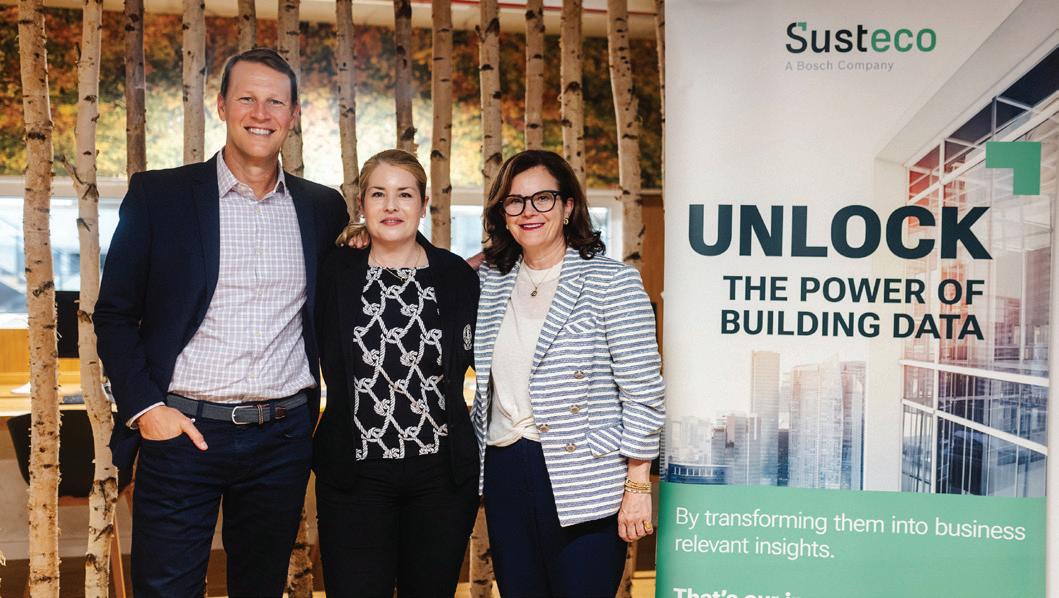
different technology platforms connected to the particular building, such as Recogizer, which automatically reduces energy consumption through AI-based control of HVAC systems and EHTW Service GmbH, which specializes on waste data collection and on waste management. Customers access a digital representation of the building with all available on one single data platform, regardless of the service provider or data source, meaning more efficient monitoring and management. Measurabl will be a fully integrated ESG data and software technology partner on Susteco’s platform, the companies said.
Measurabl provides monthly and real-time sustainability reporting, compliance and real-time asset optimization measures driven by smart meter and hardware integrations provided by Susteco. Measurabl software will allow Susteco customers to access centralized ESG suite of tools including automated utility data collection, progress tracking toward sustainability targets, performance comparisons with custom peer groups, streamlined ESG voluntary and mandatory reporting, flexible and tailored ESG reports, physical climate risk insights, green certifications and capital projects.
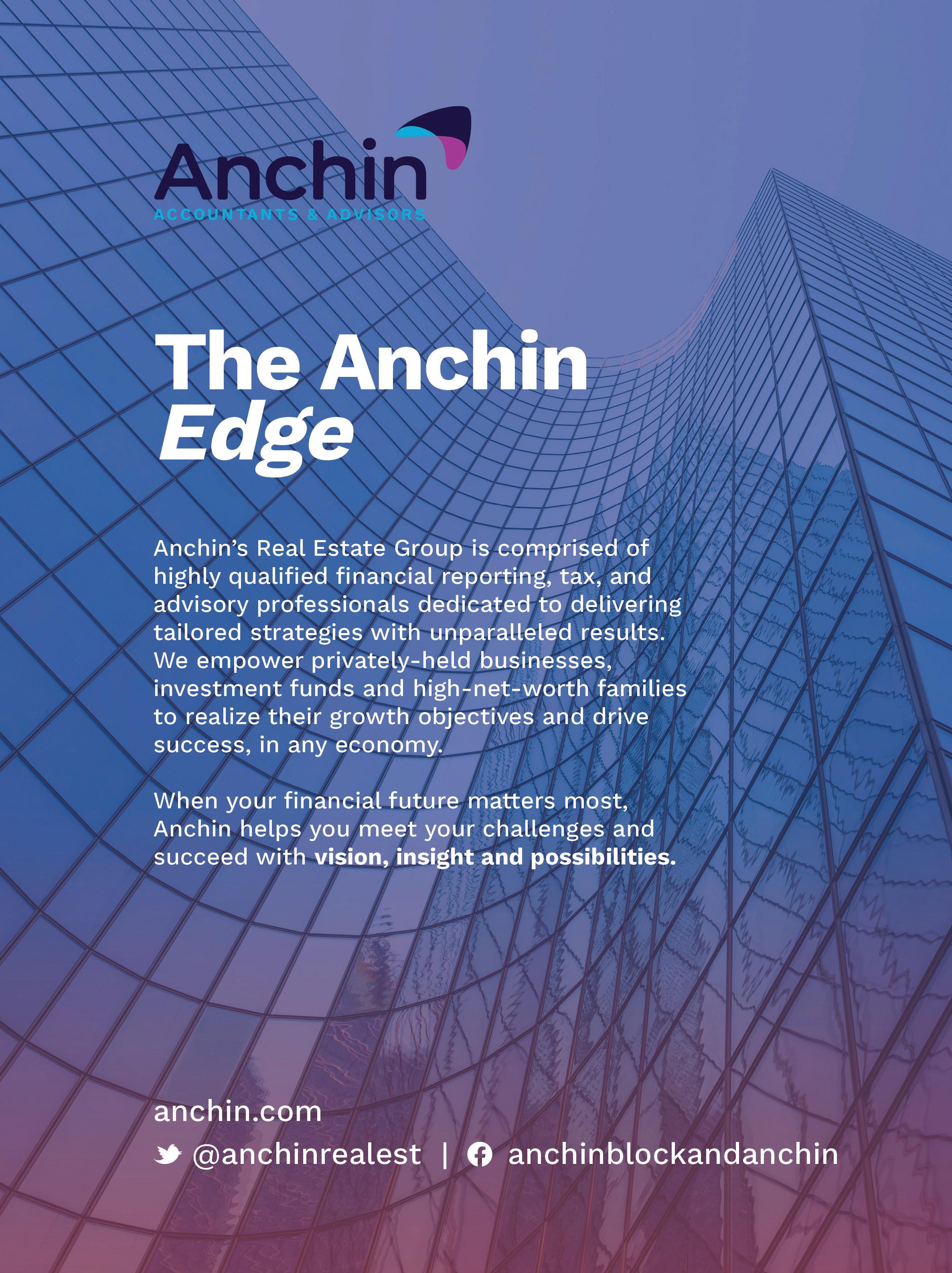
JLL has leased over 40,000 square feet of office space in a series of transactions at 1450 Broadway, the 42-story Class A Bryant Park property owned by ZG Capital Partners, a New York-based real estate investment firm led by Bobby Zar. 1450 Broadway is represented by a JLL leasing team that includes Vice Chairman Mitchell Konsker, Executive Managing Director Greg Wang, Associate Vice President Thomas Swartz and Senior Associate Lance Yasinsky.
Leading video and ecommerce retailer QVC leased 13,357 square feet across the 19th floor in a relocation from 71 Fifth Ave. The tenant was represented by Ramsey Feher of CBRE. Kohler Ventures, a digital business subsidiary of Kohler Co., leased the entire 4,109-square-foot 40th floor of the tower to open its first New York City office. Kohler Ventures was represented by Liz Lash of CBRE.
Good Springs Capital, a private equity fund, leased the entire 4,109-square-foot 39th floor tower suite to open its first NYC office. Good Springs Capital was represented by JLL’s Evan Margolin, Daniel Posy and Ian Lipman. Longtime tenant Iconix, a fashion company that owns brands including London Fog, Mudd and Joe Boxer, consolidated its footprint to 10,124 square feet on the 22nd floor. Margolin and Lipman represented Iconix.
Kering Eyewear signed a long-term expansion and renewal to occupy the full 36th floor in addition to its existing space on the 33rd and 34th floors for a total of 12,327 square feet. Kering was represented by Cushman & Wakefield’s Deborah Van der Hayden and Joshua Cohen. Wealth data platform Masttro leased 5,851 square feet on the 20th floor in a relocation from 1407 Broadway. Sinclair Li and Connor Desimone from CBRE represented Masttro. Tech firm Good Inside leased 4,109 square feet on the 29th floor for its first NYC office and was represented by Rob

Kluge of Current RE. SG Companies, a multinational fashion brand, will relocate from 142 West 36th St. to occupy 4,677 square feet on the 9th floor. JLL’s Bill Peters and Jan la Torre represented the tenant.
The transactions follow a significant investment by ZG Capital Partners in a state-of-the-art amenity offering on the second floor of the building that will include ample conference, meeting and lounge spaces that is set to deliver Q4 2024. The 430,000-square-foot building that overlooks Times Square underwent an extensive renovation in 2012 that included a contemporary new lobby and upgraded building mechanicals.
“Ownership’s commitment to maintaining 1450 Broadway as a bestin-class office destination has resonated with forward-thinking tenants who want to offer employees a superior environment and convenient commute,” said Konsker. “With its latest investment in the building, ZG Capital has signalled its belief in the fundamental strength of the Manhattan office market.”
Cherre, a real estate data management platform, has released a user interface (UI) which provides visibility into Cherre’s Data Observability features, as well as enhanced data validation capabilities. The new UI also empowers clients to directly manage their data pipelines into the platform, increasing transparency into the status, completeness, delivery and transformation of their data.
Cherre’s UI includes an array of tools for users to self-manage their data pipelines and validation rules, enabling them to improve their data quality and promote confidence across the organization. These tools include: table profiling, column profiling and status monitoring which provide observability across all data moving in, through and out of Cherre; insights into data Connectors including access to the standard data model for each Connector, Connector status, data destination and available data dictionaries and data validation capabilities that allow clients to create and manage checks, alerts, and custom validation rules, as well as a standard library of tests across Connectors and the Data Submissions Portal.
“Our new UI is more than just a tool; it’s a gateway to enhanced confidence in data-driven decision-making,” said Kevin Mattice, chief product officer at Cherre. “By surfacing Cherre’s Data Observability processes and providing clients with direct access to manage their data pipelines, we are setting a new standard in real estate data management. Real estate market leaders need to feel confident in their decision making, our UI helps give them the control and transparency needed to build trust in their data.”
The new UI is now available to all Cherre Platform users.










































In what will bring the largest ScreenX auditorium in the world to New Jersey, B&B Theatres will open a cinema and entertainment experience at American Dream in East Rutherford. The move marks a significant expansion of B&B Theatres’ footprint in premier entertainment destinations, complementing its operation at Mall of America and signaling its first location in the Garden State.
ScreenX, developed by CJ 4Dplex, a producer of premium film formats and cinema technologies, is the world’s first multi-projection cinema that enhances the traditional movie-going experience by seamlessly extending the screens onto the surrounding walls of the auditorium, the company said. The approach offers viewers a 270-degree panoramic viewing adventure. Through its unique presentation of key scenes and exclusive scenic elements, ScreenX immerses audiences in an unparalleled visual environment, reimagining the way movies are experienced.
The new location will be the largest ScreenX auditorium in the world, with a 80-foot-wide center screen and side walls measuring 82 feet each, boasting 242 feet of ScreenX viewing range for the moviegoer.
While the full details of the amenities and features will be unveiled at a later date, the venue will include eight screens of cutting-edge cinematic technology, multiple bowling lanes, a full redemption arcade and various food and beverage options including a restaurant and fullservice bar. The facility will offer unparalleled cinema presentations
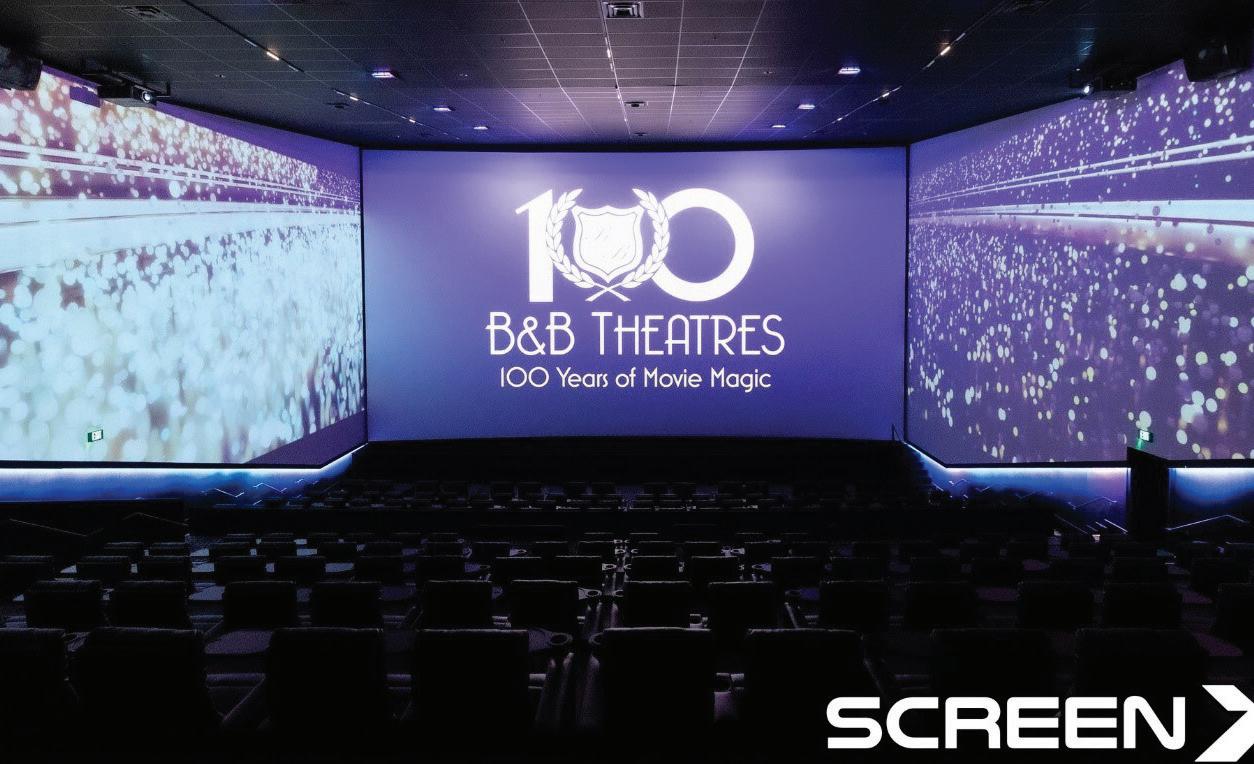
courtesy of the latest in laser projection, wall-to-wall curved screens, and heated, leather, electric recliners in every auditorium.
“This new location underscores our commitment to providing the most immersive and enjoyable entertainment experiences possible,” said Brock Bagby, president and chief content, programming and development officer for B&B Theatres. “Our presence at the Mall of America has been a tremendous success, and we are eager to bring our unique blend of cinema and entertainment to even more guests at the American Dream.”
Affiliates of Cantor Fitzgerald L.P. and Silverstein Properties have entered into a joint venture with Turnbull Development LLC, a Charleston, South Carolina-based development firm. The venture intends to develop a mixed-use project encompassing 365 gardenstyle multifamily units across three buildings and a 40,000-square-foot medical office building in a qualified opportunity zone in Summerville, South Carolina.
The venture simultaneously closed on $54 million in construction financing from SouthState Bank to develop the project. Located at the corner of Berlin Myers Parkway and Highway 78 and strategically positioned within walking distance of Summerville’s historic downtown area, the investment is part of a 57-acre mixed-use, master-planned development known as Sawmill. The development will help the local Summerville government better respond to the growing demand for walkable, flourishing communities with convenient transit linkages, proximity to jobs and access to nearby public services and destinations.
“Sawmill will be a vibrant, region-transforming community,” said Milton Thomas, president of Turnbull Development. “We have spent the last four years developing the master plan, moving through entitlements, and working with the town of Summerville to ensure this will ultimately be one of the region’s premier mixed-use developments.”
Sawmill will be anchored by a two-story, Roper St. Francis medical office and will include a neighborhood grocery store and retail outparcels to serve residents and employees. The multifamily component will have direct access to Sawmill Branch Canal and Greenway Trail and offers on-site outdoor amenities such as a pickleball court, a dog park and a pool and clubhouse. At press time, construction of the multifamily portion was expected to commence in July 2024.

“Summerville is a desirable residential destination near Charleston that benefits from the region’s job and population growth,” said Alex Cosio, vice president, Silverstein Properties. “With preconstruction completed and financing in place, this development is positioned to further invigorate an already bustling community.”
Cantor and Silverstein launched an opportunity zone business in early 2019 to invest in, develop, redevelop, and manage a diversified portfolio of institutional quality commercial real estate assets with an emphasis on multifamily properties located in qualified opportunity zones in the United States. Their opportunity zone development portfolio includes eleven projects in various stages of development exceeding $2.2 billion in total estimated project costs.
“The proximity to Historic Downtown Summerville places the project in an enviable location with essential amenities nearby. Residents have easy access to retail, culture, recreation and dining,” said Chris Milner, CIO, real assets at Cantor Fitzgerald Asset Management. “Our partnership with Turnbull Development on this project and the location promise to have a positive impact on the community.”
Ingka Investments, the investments arm of Ingka Group, which owns the majority of Ikea stores worldwide, announced a real estate investment in 570 Fifth Avenue, being developed by Extell Development Company. The building is scheduled for tenant delivery in 2028. The result will bring an Ikea customer meeting point to the building’s prime retail space of 80,000 square feet, arranged over two large cellar levels with a corner entrance on Fifth Avenue.
The investment is another step in Ingka Group’s strategy to evolve its retail operations by adapting to urban growth and changing consumer shopping preferences. This initiative involves introducing retail formats in city centers, enhancing accessibility and convenience for customers.
“This next phase of our investment and expansion in the U.S. signals our commitment to bring Ikea closer to people in city centers,” said Javier Quiñones, CEO and chief sustainability officer, Ikea U.S. “While we are in the very early stages of planning for the Ikea location, we can promise to deliver an experience that is full of inspiration and designed to meet the home furnishing dreams of the many New Yorkers.”
Ingka Investments will hold a one-third stake in the project alongside preferred equity components and full ownership of the prime retail space where the Ikea customer meeting point will be located. Extell will hold a two-thirds stake in the project. The building is the largest development on Fifth Avenue in more than 60 years. Located at the intersection of the Plaza and Grand Central Districts, 570 Fifth Ave. will be a one million-square-foot, mixed-use commercial building, with a focus on sustainability and wellness, the tower is targeting a
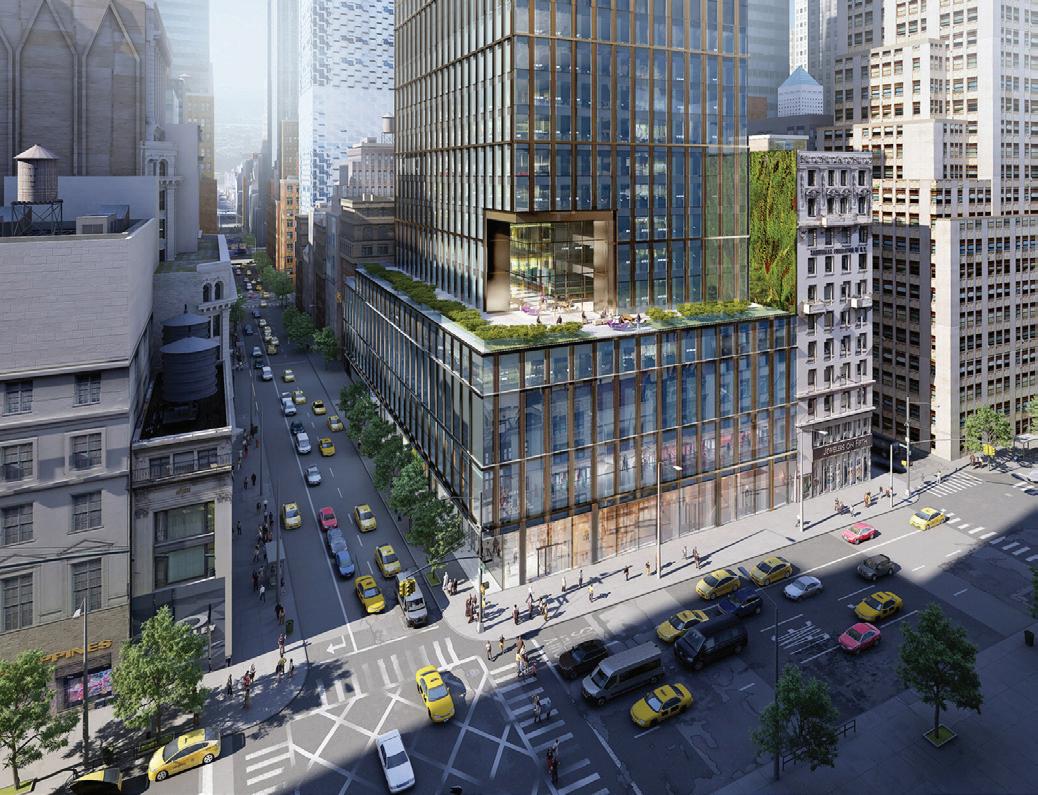
minimum LEED Gold certification and will exemplify high sustainability standards and low carbon operation principles.
“We are excited to share the news of this major investment that boosts our growth strategy across the U.S., a vital market for Ingka Group,” said Peter van der Poel, managing director of Ingka Investments. “Investing in Fifth Avenue goes beyond just growing our footprint; it’s about changing the way we engage with consumers.”
New York City Housing Authority (NYCHA) and BFC Partners announced funding of $332.3 million for their Permanent Affordability Commitment Together (PACT) project in West Brighton, Staten Island, bringing its total capital investment in the borough to well over $1 billion. Comprised of BFC Partners; CB Emmanuel, a minorityowned business enterprise (MBE); Catholic Homes, a non-profit organization and Pinnacle City Living, the PACT partner team has converted 16 buildings to project-based Section 8 through the federal Rental Assistance Demonstration (RAD) program and will offer comprehensive renovations for over 1,300 residents.
West Brighton is NYCHA’s first PACT on Staten Island. The project will rehabilitate 574 apartments at West Brighton I and II and reactivate 24 vacant units, with 12 restored as permanently affordable residential units and 12 converted into a new senior center to serve the residents of West Brighton. Pinnacle City Living will assume day-to-day property management. Social services will be coordinated by Housing Opportunities Unlimited (HOU).
The debt was provided from Freddie Mac and the New York City Housing Development Corporation (HDC), as well as a bridge loan from Wells Fargo, historic tax credits, city subsidy and sponsor equity.
The PACT partner team formed in 2022 and has worked closely with West Brighton residents to design every aspect of the developments. The buildings will receive both interior and exterior renovations including façade restorations, roof repairs, new security installations, ventilation improvements, refurnished heating and water systems, as well as comprehensive upgrades to the bathrooms and kitchens with new applications, fixtures, countertops and more. In addition to the

residential renovations, a new senior center will be developed at 159 Alaska Street. The grounds will be revitalized by new landscaping, lighting, play equipment, seating, enlarged walkways, community gardens, as well as a dog run and screened refuse area.
“We applaud NYCHA for its first financial closing on Staten Island and are so proud to be working hand-in-hand with NYCHA and the PACT Team Partners on this transformational project,” said BFC Partners Principal Joseph Ferrara. “The significant upgrades and overhaul of building systems throughout West Brighton will improve the quality of life for both current residents and future generations of Staten Islanders.”
By Debra Hazel

If adaptability is everything, David Mann has it in spades. The CEO of Lighthouse Living trained as a journalist, then joined the fashion industry and now is building a solid portfolio of multifamily properties, using all of the skills he’s learned along the way.
With a 1.2 million-square-foot portfolio of luxury multifamily buildings in and around metropolitan New York (with a nod to the Southeast) built since 2011, he says he’s just getting started.
“I’ve turned one building to more than 14, and from being able to execute $3 million deals to $80 million deals,” Mann said. “We’re growing organically and have a whole infrastructure — from design professionals to contractors to marketing, debt providers, to capital providers. We have all the pieces of the development puzzle.”
Real estate wasn’t his first stop, however. Growing up on Long Island, Mann could have been expected to join his family’s Garment Center business — instead, he ventured off to earn a degree in journalism at the University of Wisconsin-Madison. But family duty called and after a year at the Fashion Institute of Technology, he did join one of the family businesses with his father. (David Mann’s uncle, Jeffrey Mann, is the CEO of Mann Publications.)
“I hated writing research reports. It was so mechanical; but when I discovered journalism, I had a knack for it,” he said. “I didn’t have a desire
to become a journalist, but my training allows me to write some very effective emails, presentations and investment summaries. It was useful in the Garment Center and has definitely helped my real estate career.”
After a year as an assistant salesman at one fashion label, he moved over to roles in operations and management. But the rise of internet in the early 2000s changed the industry, cutting into profits as retailers began producing their own goods.
After nine years, he came to a sudden realization — he really didn’t care for fashion design.
“There was a disconnect with the product,” he said. “I know nothing about women’s clothing.”
However, the complex process of dress manufacturing — from design to raw material procurement, engineering, sourcing the contractors to warehousing — served as preparation for the complexities of real estate development.
After speaking with lifelong friends about the opportunities in real estate, he left fashion and enrolled in NYU’s Schack Institute with especially propitious timing. Classes began just days before Lehman Brothers declared bankruptcy in 2008, sending the real estate industry into crisis as the Great Recession began.

In a way, however, he learned some powerful lessons from industry leaders on their missteps.
“Counterintuitively, it was a terrific education,” he said. But by the time Mann graduated in May 2010, newly married and expecting a child, finding employment was a challenge. Many experienced professionals who had been laid off or left the business in 2008 were also seeking jobs, at lower salaries than they would have commanded just two years previously.
“There was nothing going on, no cranes in the sky,” he recalled. “Toward the end of 2009, people saw it wasn’t the end of the world, but in 2010 no one was hiring. I was stuck with an excellent education with no job prospects. It was a frustrating time.”
He was hired in September 2010 by Michael Stern from JDS Development as a project manager for a potential 50-unit apartment building in Park Slope. But that project saw delays.
“By February, I ultimately couldn’t get the green light to start,” he said. “I was just married. My wife was eight weeks pregnant, and she said, ‘Just do it yourself.’”
Initially reluctant and days away from applying for a job at Starbucks, Mann took his knowledge, access to some capital and a relationship with a local construction manager to find a smaller development site in White Plains, New York.
“I literally walked around the city eight hours a day for three weeks, looking at all the multifamily properties,” he said. “I got to know the market and I knew I could build something as nice as the nicest project there, with amazing amenity packages.”
Multifamily appealed because of its multitude of leases, or “customers” as Mann says, a lesson from his apparel background.
“My father used to tell me, ‘You don’t only want to have 10 big clients to sell your dresses to. You need to have many customers, so if one stops buying, it won’t put you out of business,’” he said.
‘YOU DON’T ONLY WANT TO HAVE 10 BIG CLIENTS TO SELL YOUR DRESSES TO. YOU NEED TO HAVE MANY CUSTOMERS, SO IF ONE STOPS BUYING, IT WON’T PUT YOU OUT OF BUSINESS.’”
Mann found a site, broke ground in December 2011, and the project was completed in December 2012. He found his second deal in White Plains in 2011, for a 30-unit, four story building. It was at that point that he hired his first employee, and named his company Lighthouse, for the street he grew up on in Great Neck.
In some respects, the shift to real estate wasn’t that dramatic.
“Instead of building dresses, I build buildings,” he said, noting there are some similarities and some very great differences between the two industries. “In fashion, there are myriad moving parts that need to be coordinated to accomplish the objective in a precise period of time. That certainly prepared me for the environment of real estate development. But design, procurement and the level of detail in documents are very different. And if a dress falls apart, the customer just won’t buy again. If a building falls apart, people will die.”
What distinguishes Lighthouse’s projects is its apartment finishes and efficient amenity packages.
“I always had an appreciation for interior design,” he said. “Even as a kid, I’d pay attention to the design of various hotels and other people’s homes, and read architectural design magazines. I also used to help my mom lay out rooms on graph paper. Who knew I would be doing that on a much larger scale 30 years later?”
Even more important is not going overboard on amenities the tenants won’t need.
“Our philosophy is to spend more on the unit itself and make them slightly bigger than the rest of the market, while not building superfluous, unnecessary amenities,” he described. “People spend most of their time in their apartment. We offer what’s necessary — a nice lobby, coffee station, gym, maybe a roof deck or business center space if possible.”
For example, 1 DeKalb Avenue in White Plains offers tech-enabled, hospitality-like amenities, including a media wall, fully equipped fitness center and a rooftop oasis with lounge seating, barbeque grills and greenspace where the company hosts community building events.
The Duet, a boutique apartment community located in downtown White Plains, features the ButterflyMX Virtual Concierge system which connects video directly to residents’ cell phone, allowing them to provide guests entry remotely. Other amenities include a fitness studio, private club and rooftop space.
After the first two projects, more opportunities arose as financing became easier, including developments in New Jersey and Connecticut. The developments became larger, too, as properties grew from 10 units to more than 200.
But there were lessons along the way. Mann’s first developments were constructed with a modular method, with his company handling site work, the façade and the foundation. The modular company did the rest. That resulted in a number of properties needing remedial work that has since been completed. By his sixth project, and already with a team of five, he knew he needed to change his system.
“We looked at the designs and started quantifying the different materials and trades,” Mann recalled. “We saw it would be much cheaper to build conventionally. That way we could control the schedule and the quality. No more crooked light switches or wobbly toilets. Now, nine years later with a team of 20, we have very few maintenance issues.”
With each project, Lighthouse Living becomes more sophisticated and assured. In time, it jumped next door to Connecticut, opening The Westporter, with apartments and townhomes for rent – with luxury amenities including private two-car garages and dedicated indoor electric car charging. Coming soon is the Abendroth, offering 204 apartments with 25,000 square feet of ground floor retail at 169 North Main St. in Port Chester, New York.
The greatest leap came when Mann was visiting his brother, who had relocated to Greenville, South Carolina and thought he’d found a potential site. The expected culture shock never came as David found a city with nightlife and strong planning.
“We drove downtown, and I was blown away at how pretty the city was and the interconnectedness of the zoning. Clearly, that municipality put great thought into development,” he said. “I was impressed by how much the city cares about the pedestrian and the experience. They created a whole city with that live/work/play concept, not just segregating zoning uses. Greenville felt like a much larger city than it actually was. The city was vibrant and busy day and night.”
Mann was able to procure two acres in the center of the city center within two months of first visiting, and ultimately closed on the four parcels in late 2018. Challenges included moving a historic building, the home and clinic for Dr. E.E. McLaren, an African American physician who treated Black patients while white hospitals refused medical treatment to African Americans during the Jim Crow era. The clinic was moved 70 feet toward the main thoroughfare and is now a cultural museum. Paying homage to the doctor, Mann named the 10-story apartment building The McLaren. Though delayed because of the pandemic, the property includes 246 apartments and 26,000 square feet of office space.
“We are 65% occupied and hope to be stabilized by the end of the year,” Mann said.
Two more projects are in the works in Fairfield County, Connecticut, as Mann keeps an eye on opportunities in the Tri-state and Southeast. And there is more to come.
“I have a great team around me and a lot of bandwidth available. We’re excited to grow over the next 10 years. My goal is to build several 200unit projects annually,” Mann said. “Lighthouse has in fact grown to become a major developer in the Tri-state area — and regional. And I feel I’ve only just gotten started.”

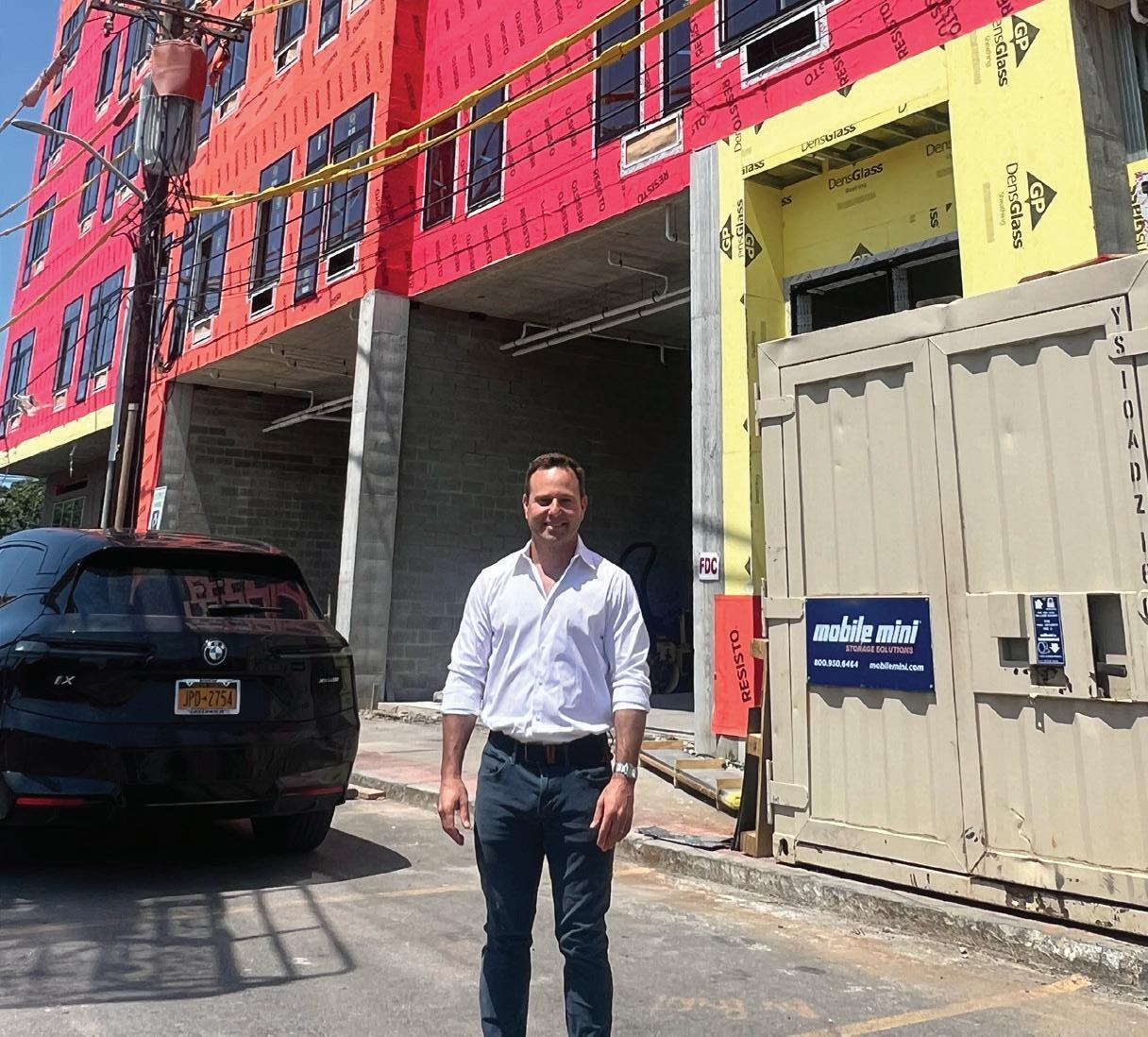






Levy Goldenberg stands out for its unwavering dedication to clients. Located in downtown Manhattan, Levy Goldenberg LLP specializes in commercial and real estate litigation. With a foundation of extraordinary legal representation, Levy Goldenberg LLP is becoming a trusted partner in the Big Apple's complex legal world.







We aim to provide a transparent, practical approach to commercial and real estate disputes in New York. Our vision is to not only offer exceptional legal services but also to drive progress and innovation in the legal community and New York City.




By Giray Boran, Managing Director at BLG Capital
The luxury high-rise real estate boom experienced in South Florida over the past 10 years has undoubtedly been market-defining. The city of Miami currently has approximately 25 skyscrapers under construction and has grown by 66% in buildings over 100 meters tall in the last 10 years. However, if you look closer to the ground, you’ll find the most prized assets to date in the area — boutique office spaces.
Boutique offices are defined as buildings smaller than 150,000 square feet, less than 20 stories tall and with strategically designed floor plates. These offices are attractive to investors, developers and tenants for a variety of reasons, but most importantly, they are the most lucrative option in an economy where the need for thousands of square feet of office space has diminished year over year.
These boutique-scale buildings are much more cost-effective and can even rise on smaller lots, which allows developers and investors to be able to build them in highly sought-after markets like Miami Beach, Brickell, Fort Lauderdale, West Palm Beach and Palm Beach Gardens. These South Florida markets are also where today’s consumers and corporations are most drawn to as alternatives to big cities like New York, Chicago, Philadelphia, and major metros in Texas, etc.
The average Class A/A+ boutique office space in South Florida is ultra-modern, highly amenitized and outfitted from the bottom floor up with bestin-class necessities and perks so that any small- or large-scale corporation can easily set up shop in a location most attractive to its employees.
Standard amenities and perks in today’s spaces often resemble that of a luxury high-rise condo or apartment building in South Florida, including fitness centers and full-scale locker rooms; various on-site restaurants and cafes’ multiple options for outdoor space via terraces, courtyards and rooftop grounds; valet parking; on-site car washing; easy access to public transit and Brightline stations and more.
These ultra-luxe and experiential office spaces make the live-work-play lifestyle easily attainable. With various corporations and wealthy executives continuing to flee the big cities in favor of South Florida, the need for this high-caliber office space is becoming inherent and the ability to create it is becoming even more lucrative.
There is also quite a lot to look forward to in South Florida’s pipeline of boutique office spaces with all these amenities and more. On the way is the first office development to be built in Miami Beach’s South of Fifth neighborhood in decades. BLG Capital, our joint venture partner Bizzi + Partners, along with Sumaida + Khurana, are delivering a 62,202-square-foot, five-story project at 944 Fifth St.
Located in the heart of the South of Fifth neigh-
borhood, the project will be designed by Spanish architect Alberto Campo Baeza, his first commercial building in the U.S.
Prior to the announcement of this project, the South of Fifth neighborhood wasn’t an active office market. But increasing demand for elevated boutique office spaces and the availability of land perfect for them has created a unique opportunity for developers and investors, along with executives who would prefer not to have to commute into downtown Miami. These include power players, who see the office as part of their lifestyle, so convenience and wellness are top of mind in a new office space.
Planning for The Fifth Miami Beach was centered around creating a space emblematic of what boutique properties should look and feel like today. The façade of the building will incorporate white marble, glass and clean-cut concrete that exposes the structural elements of the building while complementing the neighborhood’s natural aesthetic. The building will feature a triple-height lobby atrium, several wrap-around terraces and even a rooftop deck complete with a bougainvillea garden and outdoor reflecting space.
While planning the office spaces, natural light, open floor plans and indoor-outdoor fluidity were top of mind. Some 390 linear feet of floor-to-ceiling glass will be implemented on each floor to create abundant natural light and offer views of the ocean and surrounding neighborhood.
Each floor will also feature full wrap-around private terrace space. The open concept layouts will be entirely adaptable for quarter-, half- or fullfloor tenants.
In addition to the Class A+ office spaces, the building will feature various lifestyle-forward amenities like open-concept indoor/outdoor spaces; deep terraces on all four elevations; a suite of fitness and wellness offerings like a sauna, spa and gym and a selection of on-site dining venues offering healthy and convenient options.
A reputable dining establishment is also slotted for the ground floor and mezzanine spaces, another tactic being adopted by various projects to lure executives and employees.
In all, the South of Fifth neighborhood has remained an attractive destination for those looking to build high-caliber office space. In fact, Sumaida + Khurana recently announced another Class A+, five-story office building at 1100 Fifth St. Designed by Eduardo Souto de Moura, the new building will be located just two blocks from The Fifth Miami Beach and will also include various lifestyle-forward offerings.
As developers increasingly find the need to meet market demand and evolution, boutique office space will remain the most attractive option.


Robert Romanoff is president of New York-based Absolute Electric, which for more than 100 years has specialized in the service and installation of electrical systems for commercial and industrial properties. Its teams of professionals can furnish, install and maintain any electrical system in a wide range of project types. Here, he discusses the requirements of Local Law 88 and how it benefits lighting buildings in New York City.
Local Laws are provisions put forth by the New York City Council, which can amend existing laws or provisions or provide for new requirements and/or policies as they see fit. In other words, these are the products of New York City’s legislature.
Local Law 88 is part of a package of laws known as the Greener Greater Buildings Plan, which were enacted in December 2009 to improve the energy and water efficiency of New York City’s largest existing buildings. This law intends to reduce the impact of lighting on the electric grid in the face of heightened demands posed by the increasingly prevalent electric vehicles and electric utilities, such as electric ranges and heating equipment.
The Council finds that the consumption of energy for lighting and other electrical equipment can be reduced if code-compliant lighting is installed in non-residential spaces, electrical measuring equipment is installed and data on electrical energy use is made available to commercial tenants. Local Law 88 details the requirements for interior residential common spaces and commercial spaces with areas greater than 25,000 square feet to implement energy-efficient lighting solutions as per the NYC Energy Conservation Code for 2025. Commercial interior spaces greater than 25,000 square feet must also implement sub-metering in specific cases and provide monthly energy statements.
Local Law 88 law requires four modifications to interior lighting arrangements: minimum lighting usage achieved through LED lighting, lighting motion sensors, daylight controls and tenant sub-metering.
The requirements for LED lighting constitute the majority of the modifications required to achieve compliance. While not explicitly mentioned in either Local Law 88 or its subsequent additions (Local Laws 132 and 134), only LED lighting can sufficiently satisfy the Department of Buildings’ minimum lighting requirement (in lumens, or light intensity), while consuming less power than that allotted by the power thresholds speci-
fied in the NYC Energy Conservation Code. Older fluorescent, halogen, metal halide and incandescent lamp types can only satisfy one of these requirements at a time.
The decreased energy consumption is significant. In one example, a client saved 150,000 kWh over a one-year period. At $0.17 per KWH, that equates to a yearly savings of $25,500. Additionally, LEDs have a much greater lamp life than fluorescents, incandescent and the like. The savings in replacement costs for material and labor is an added bonus.
The next requirement stipulated by the law is motion and daylight controls. While LED luminaires are far and away more efficient than their older counterparts, a large portion of the energy expended for general lighting purposes is wasted on lighting areas where it is not needed — for example, a light left on in a closet or a restroom while unoccupied, or a light fixture operating in an area with sufficient borrowed light. In this case, we utilize wireless motion and daylight controls, such as those provided by Lutron.
Existing on/off switches can be replaced with equivalents equipped with passive infrared motion sensors in smaller areas; larger areas can be covered by ceiling-mounted occupancy sensors. Each of these connects to an installed power pack which can either dim or switch light fixtures on and off based on the occupancy of the zone it covers. In areas with access to sufficient daylight (near windows and beneath sunroofs), a daylight sensor can instruct the power pack to perform similar actions in response to fluctuations in the intensity of daylight.
The final major requirement of Local Law 88 stipulates that electric sub-meters must be installed to monitor any commercial tenant with a total floor area equal to or exceeding 5,000 square feet. Shared costs lead to waste. Smart meters allow Con Edison to gain a deeper understanding of a building’s power usage by both area and time of operation.
This portion of the local law ties into another recent law, Local Law 97, which requires commercial properties to install Building Management Systems (BMS) to monitor various equipment. With a BMS, smart meters can be read from a central location (a computer terminal); often, several measurements can be taken to ascertain power usage.
Local Law 88 goes into effect on January 1, 2025. All required lighting upgrades are required to be performed, and changes filed with the Department of Buildings, no later than May 1, 2025, after which penalties will be applied. Additionally, as is the case with Local Law 97 (and other
provisions pertaining to energy efficiency in relation to mechanical devices, piping and ductwork), Prescriptive Energy Conservation Measures (PECMs) reports must be filed with the Department of Buildings detailing property owners’ plans to achieve compliance.
Multiple fines ranging from $1,500 to $10,000 may be levied against non-compliant locations. In some cases, they may be charged annually until compliance is achieved. Specifically, per NYC Administrative Code Section 28-321.3, a total of three $10,000 fines can be levied for each of the following failures: failure to file a PECMs report, failure to demonstrate compliance with energy-compliant buildings requirements and failure to demonstrate compliance with energy conservation measures. Additionally, failing to provide proof of installation of sub-meters in all required locations will consist of an annual fee of $1,500 until compliance is achieved, in addition to a $500 fine per missing location.
Local Law 88 compliance projects can take anywhere from a week to several months, depending on the degree to which the building has already been upgraded, if at all. It is in the building owner’s and property manager’s interest to plan ahead and complete work as soon as possible as lighting components, such as diming controls and sensors, might be sold out or have long lead times.
Making the required updates will ensure compliance with the new local laws, and in turn you will enjoy the benefit of energy savings and increased reliability across your buildings.






It may look like it belongs in Manhattan, but the newly completed, upscale 155-unit residential property at 299 East 161st St. is the Bronx Vibe. Located in the heart of Concourse Village, the rental building serves a growing middle class in the neighborhood as well as professionals priced out of Manhattan and Brooklyn and even prospective residents living as far away as India, Venezuela and Texas.
“As the first high-end residential development in the area, The Bronx Vibe is a lifestyle statement for tenants,” described Eugene Mekhtiyev, AIA, LEED GA, principal at IMC Architecture, the building’s designer. “The 12-story building provides all the benefits of a luxury apartment complex at an affordable price and is within short walking distance of a thriving business, government services, cultural and entertainment district as well as multiple parks and public transportation hubs.”
The Bronx Vibe is located on a 17,000-square foot site along East 161st Street between Park Avenue and Morris Avenue. The property, which qualified for the 421A Program, features 47 affordable units (30% of the total) that are available at varying affordability scales. It is also entirely ADA-compliant.
The site’s owner engaged Complete Development Inc. as owner’s representative to assist with financing the project, selecting team members, establishing the parameters for the property to maximize its financial outcome and overseeing the overall development process.
“Selecting an experienced and collaborative team is critical to successfully completing projects such as this one, which was done on time and on budget. The developers did a great job of setting realistic budgets to achieve their longterm financial goals,” said Complete Development Inc. owner and founder Zev Steinmetz.
The project team also included zoning and permitting consultant CORE Consultants; MEP engineer Ventrop Engineers; and structural engineer McNamara Salvia. Bohemia Realty Group is the exclusive leasing and marketing firm for the property. Webster Bank provided debt financing for the project.
The 144,450-square foot building has 12 stories above ground and a cellar. The building’s amenities were designed with community and socializing in mind. The second floor features a 6,700-square foot yard in the back of the building that incorporates step-bench seating designed around planters as well as a general seating area.
The yard has 3,400 square feet of space for cooking and leisure. The lounge area features
high-quality Porcelanosa pavers. The yard’s 2,300-square foot partial green roof tray system, which was supplied by Columbia Green Technologies, was delivered as a modular pre-grown tray system and includes active and passive landscaping sections to create a green oasis.
The 11th and 12th floors house multiple amenities, most of which are designed to take advantage of the Manhattan views that are available from these floors. The space features a 950-square foot duplex game room/lounge that spans both floors and includes a slick wet bar, a pool table, a foosball table, air hockey, virtual reality games and a television.
The 11th floor also provides access to a terrace on the floor’s setback that offers a seating area with pavers and planters and faces south, as well as a 725-square-foot interior co-working space with expansive windows that look out onto the terrace. The coworking lounge offers multiple seating zones, table and counter work areas and a prep kitchen. In addition to the game room, the 12th floor includes a well-equipped fitness center. The two floors are connected via an architectural staircase.
The cellar offers access to a secure, attended 52-space parking garage for tenants that includes an EV charging station. Other conveniences for tenants in the lower level also include a 200-square-foot bulk laundry area that is an addition to the in-unit washers and dryers in the majority of the apartments, a 693-squarefoot bike storage room with space for 77 bikes and a 70-square-foot pet spa/dog care section.
The IMC team incorporated reverse concave sections near the windows, which add a threedimensional texture and interest to the facade and depict a reverse design of the triangles on the nearby court building.
The first floor’s residential entrance leads to a vestibule and then lobby and elevator waiting area. Floors two through 10 feature the complex’s 155 rental units, which include 40 studio apartments, 83 one-bedroom apartments and 32 two-bedroom apartments. The top two floors are dedicated to tenant amenities.
“As The Vibe is the first new high-end residential property in this area, the project team set out to make it a benchmark for other developers in the future to follow when it comes to quality, amenities and architecture. Stylistically, we drew inspiration for the building’s street-facing façade from the nearby Bronx Family Court building, which is a new structure with a modern façade that features vertical triangular projections,” said IMC’s Mekhtiyev.
Meir Tessler, principal of Classic Image, creat-
ed a plan for the interior layouts that maximized views, particularly on the second, 11th and 12th floors where the majority of the amenities are located. Based on informal interviews with people were living and working in the neighborhood, mostly minorities and immigrants who were moving in to the middle class, he created designs that incorporated sophisticated finishes and open kitchens for entertaining.
All apartments boast imported LVT flooring, recessed lighting and high ceilings, and feature fully amenitized kitchens, stacked washers and dryers in most units and oversized sound-proof windows that flood the units with light. All the rooms feature quality materials and durable fixtures. The chic and modern kitchens include a stainless-steel appliance package (including dishwashers and Frigidaire and Beko appliances) and feature a sleek, two-toned design with natural stone counters imported from India and clean, modern and durable cabinetry. The bathrooms feature porcelain tiles imported from Spain and India.
Since the design team wanted to create continuity that matched the quality of IMC’s exterior design, they selected a similar color palette and finishes for the interior work, including using Porcelanosa tiles.
“I wanted the architecture and interior design to be cohesive and match each other well, so our designers developed a similar color scheme and expanded it into a full interior palette of grays, natural stone, darker hues, natural wood and vegetation,” said Tessler.
In order to make the lobby a more intimate, well-defined and functional space, chandeliers and high-hat lighting were incorporated to visually define each specific area and make it appear more voluminous.
The 11th floor amenity spaces are designed to be sophisticated, but not overpowering, and serve as an extension of a tenant’s home. The game room/lounge features a similar color scheme to the lobby and includes a millwork slat ceiling section for acoustical control. The layout of furnishings and high-quality furniture was designed to take advantage of the views to the outdoor terrace and beyond.
“The Bronx Vibe is a welcomed addition to our borough, offering high-quality accommodations and amenities for our residents and families,” said Bronx Borough President Vanessa L. Gibson, who attended the ribbon cutting with other city officials and the project team. “I want to thank Bronx 161 LLC, IMC Architecture, Classic Image, Bohemia Realty Group and Ray Builders for their work on this project, and we look forward to welcoming tenants to this building.”

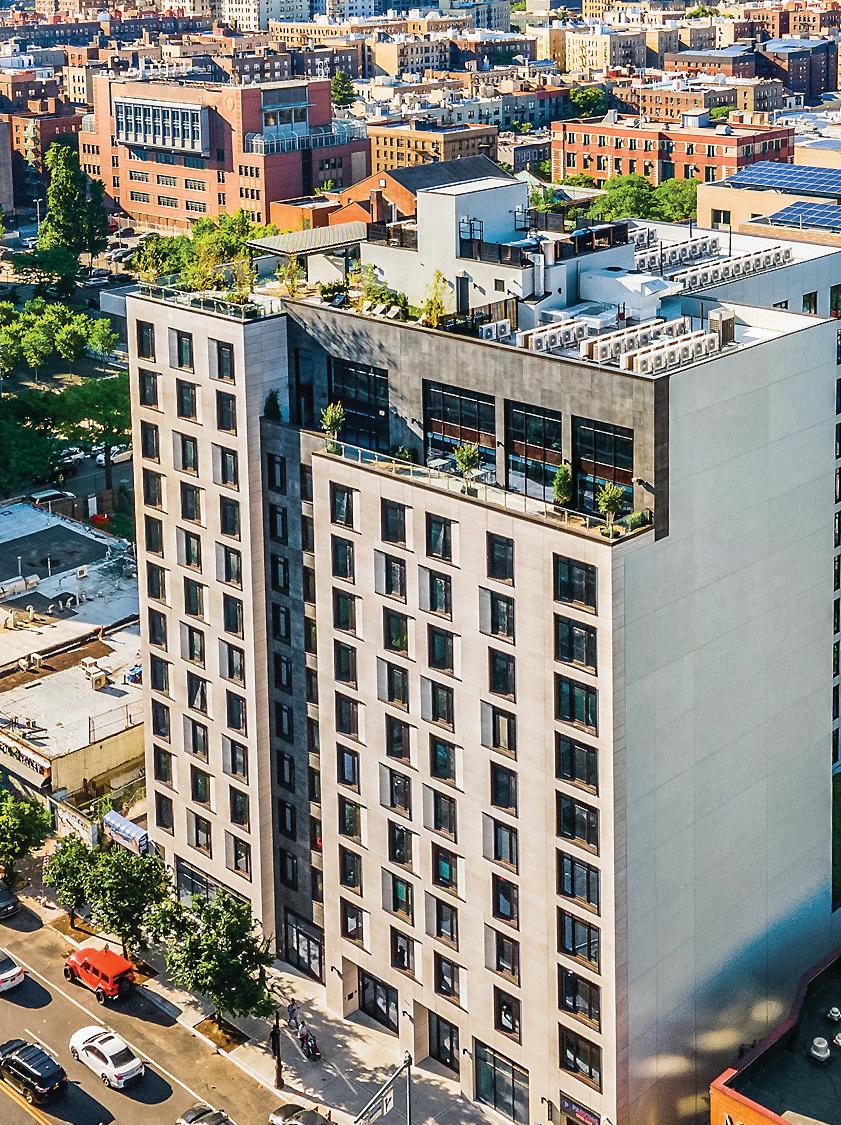

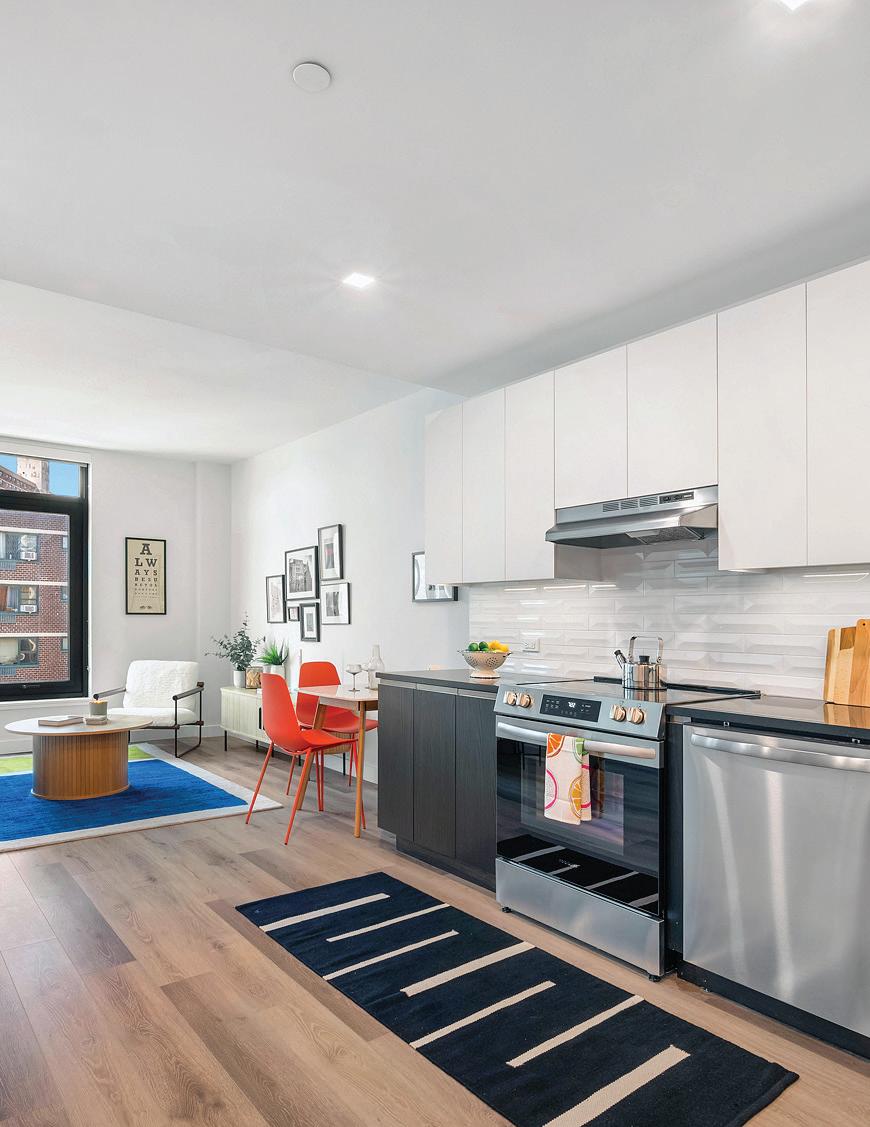








By Merilee Kern
In today’s fast-paced world, where personal connections and social interactions can feel scarce, the importance of creating more engaged communities cannot be overstated. One groundbreaking residential living program seeks to impact that and, in doing so, revolutionize the landscape of apartment communities at large. By facilitating better community bonds, improving tenant wellness and encouraging eco-consciousness through various creative events and services, New Earth Residential (NER) is giving multifamily property owners and managers an exciting new way to enrich tenant lives and better ensure their satisfaction and loyalty.
Notably, company’s innovative Urban Village (UV) residential enrichment initiative is setting a new standard in multifamily housing. The program provides a variety of tenant lifestyle services to properties nationwide that promote resident health, social interaction, education and sustainability, all to enhance home life overall. The result is a greater sense of community spirit, togetherness and overall well-being.
This comprehensive approach to resident relations not only yields better outcomes for property owners and investors, but also brings positive impacts to the environment.
Among other mandates, the UV program aims to enhance community connections, alleviate stress and foster environmentalism through a variety of innovative activities and resources. This includes enhanced residential wellness programs like fitness classes and health screenings, as well as sustainable living initiatives that include community gardens producing fresh produce for residents and recycling programs reducing waste.
“This partnership showcases our commitment to environmental responsibility and making positive community impacts,” said Jenny Romera, New Earth Residential president. “This Urban Village endeavor sets a new standard in the multifamily housing industry by wholly prioritizing a holistic approach to resident well-being, engagement and contentment that is more in tune with modern consumer mindsets, also demonstrating the evolving role of property management at large. The benefits of living in a New Earth Residential-managed community — or living in a community employing the Urban Village program — are setting an entirely new industry benchmark.”
“Our commitment to innovation and social responsibility sets us apart in the multifamily housing industry,” said Annie Paskovich, Urban Village program manager. “This dynamic program fosters community engagement and social impact in multifamily housing in a way that enhances residents’ quality of life through collaborative events, activities and partnerships meticulously crafted to foster collaboration, ignite innovation and drive positive change for our residents. We’re truly passionate about creating resilient and thriving communities for people of all ages and being a driving force that is shaping a brighter future for everyone.”
“Urban Village is a dynamic community initiative dedicated to fostering vibrant and inclusive neighborhoods,” Paskovich noted. “We are comprised of passionate individuals, residents, property managers and community partners who share a common vision for enriching urban living.”
NER and UV — both woman-run organizations — provide a range of multifamily living and programmatic features and benefits. Here are a few at a glance:
• Improved Resident Relations: Urban Village acts as a bridge between residents and property management, facilitating better communication and stronger relationships, which can lead to smoother operations and fewer conflicts.
• Improved Retention Rates: Happy, engaged residents are more likely to renew leases, benefiting property owners.
• Innovative Community Building Programming: Tailored events and activities create engaged, cohesive communities.
• Enhanced Resident Experience: High-quality, meaningful interactions increase tenant retention and satisfaction.
• Enriched Environments: Green-living improvements to communal spaces benefit both residents and the environment.
• Personal Development: The programs nurture leadership and community talent, offering mentorship and job opportunities that lead to personal growth and financial support.
• Access to Channel Resources and Support: Initiatives promoting resident-community partnerships. with local and national organizations for mutual benefit. Urban Village provides residents with valuable resources and support systems, which can enhance their quality of life and reduce the need for external interventions.
Known to be a highly strategic property management firm, NER is elevating the apartment management space while enriching lives. This disruptor is designing a paradigm that drives real estate investor returns in a way that is beneficial to those living in apartment complexes and all of us as tenants of Mother Earth.
Merilee Kern, MBA is an internationally regarded brand strategist and analyst who reports on cultural shifts and trends as well as noteworthy industry change makers, movers, shakers and innovators across all categories, both B2C and B2B. This includes field experts and thought leaders, brands, products, services, destinations and events. Her work reaches multimillions worldwide via broadcast TV (her own shows and others on which she appears) as well as print and online publications.





By Debra Hazel


Owning one multifamily building can be a great investment for an individual — but building upon that success can be challenging, especially in today’s environment. The cash flow is great, but creating real wealth through the acquisition of more properties requires at least some wealth. In the current environment, equity needs are higher than ever before, and banks tend to favor other large financial institutions. Capital raising can be time consuming.
Derrick Barker, founder and CEO of Atlanta-based Nectar, has devised a way to access the cash flow of one building to allow the owner to invest in its own building or to acquire another in what he says is a faster, more flexible way.
“Ultimately, we’re able to give people liquidity,” Barker said.
Barker has been there. In March 2022, Barker and his wife Brittany Moseley were in contract to buy an apartment complex in Downtown Los Angeles, when the lender pulled the financing. Instead, he had the idea of getting 12 to 18 months of cash flow from his existing multifamily assets to finance that deal. That was the seed of Nectar, which gives established, but small, real estate entrepreneurs — many of them persons of color — who own stabilized properties the ability to expand their portfolio with cash flow-based financing. Nectar provides the working capital financing without the borrower raising equity from other investors.
Barker began his real estate career while still a student at Harvard University in the mid-2000s, starting an investment club and then purchasing properties with dormmates and financial backers beginning in 2008. After graduating, he spent three years trading securities at Goldman Sachs, while continuing to acquire properties in his native Atlanta, eventually building a 500-unit portfolio.
Moseley, herself a Harvard graduate with a degree in economics, who had been running the Women’s Top division at Abercrombie & Fitch, joined Barker in the real estate field when he left Wall Street behind to focus on rehabbing real estate full-time. The two grew their personal portfolio to more than 4,700 units and $400 million in value. But they hit a wall in 2020.
“We got to a point where was difficult for us to buy real estate,” he recalled. “The pricing was more aggressive than we could make work. There were a lot of outside buyers; people were paying cash. We couldn’t do it.”
The pair had stabilized, cash-flowing assets, but were not large enough to obtain credit from major financial firms.
“You’ve outgrown your friend and family, but you’re too small for the institutions,” he said. “If you have a portfolio of 25 properties, there were not good credit options for entrepreneurs.”
Nectar’s typical deals range between $200,000 and $4 million and
currently are funding medium-sized apartment complexes and self-storage facilities, as well as small mixed-use developments. The loans are amortized over up to five years and are structured as preferred equity.
“We are typically going to be more expensive than a first mortgage,” Barker noted. Rates are in the double digits and Nectar’s financing is subordinate to the mortgage.
But this can be attractive right now as pandemic-era permanent debt has a low interest rate.
“They may just need $1 million to finish the project or to buy another,” Barker observed. “It’s cheaper to get the money here.”
For example, if an owner has a $20 million property, with a $10 million loan at 4%, that additional $1 million loan at 14% still is more affordable than refinancing at today’s higher rates.
Speed also is a Nectar benefit, Barker continued.
“We typically take seven to 10 days,” he noted, where other refinancings can take 45 to 60 days. The result is that 35% of Nectar borrowers are repeat customers.
There are some sectors Nectar doesn’t touch.
“I’ve never done office, really, although I do think there is great opportunity,” Barker said. “We also don’t do shopping centers. We have done a lot of multifamily, self-storage, hotel and mixed-use.”
Taking advantage of the current climate, clients are looking for over-leveraged properties, especially in hot markets in the Southwest, including Austin, Atlanta, Charlotte and Dallas.

“Now is a great time,” Barker observed. “If you don’t have a lot of debt, there are opportunities in the market to buy and invest in properties that were overleveraged and were not prudently operated. There are good, discounted prices to a couple of years ago.”
Nectar also has an investment fund that pays 12% annually, backed by a diversified group of sponsors — as the pool of properties are priced to withstand even a 15% drop in value.
“We finance properties with low leverage, then we package the deals and sell them to investors,” he explained. “A lot of investors want cash flow, and every quarter we make distributions. The last was the ninth consecutive quarter we made a distribution to all our investors.”
The result is growth he expects to continue, even as he helps other entrepreneurs build their dreams.
“2023 was a banner year,” he said. “And 2024 is better than 2023.”











More than 35 years of real estate, condominium & cooperative experience
WilkinGuttenplan uses expert industry knowledge in accounting, audit, and tax services to assist New York City real estate owners, developers, and investors of commercial and residential properties identify opportunities and guide them on implementing strategies to stay ahead of changing times.






Partner
Greenspoon Marder LLP
1345 Avenue of the Americas, Suite 2200
New York, NY 10105
carol.sigmond@gmlaw.com (212)524-5074
For board members and managing agents, few issues cause more upset in cooperative and condominium buildings than uncontrolled noisy neighbors or pest infestations. As for the latter, water bugs, roaches and bed bugs are among the most intractable issues. Sadly, these pests do have adverse public health effects.
One of the more persistent health issues relating to pests involves asthma. Pests including roaches, mice, mouse body parts and mouse droppings may possibly trigger asthma attacks in both children and adults.
Managing agents and staff tend to take a cavalier attitude toward this issue. Whether in the building or the office, the staff become desensitized to the issue.
One result is that when a resident has been dealing with the problem for months or years, the staff tends to see it as a routine recurring issue. However, it is a case of increasing frustration for the resident: the day the staff treats the latest incident casually or with a lack of seriousness, the affected resident may react adversely.
Building agents and staff need a standard protocol to address complaints of insect infestations. These protocols must include notifying the managing agent, documenting the report, sending staff to inspect, ensuring the building exterminator comes regularly and servicing units as required.
Remember to ensure the building does not provide pests with food, water, shelter and access. This implies fixing any holes in walls and ceilings, cracks and leaks as soon as possible.
If pests are creating the holes, regularly check known access points and repair any new openings immediately. Keep common areas clean and free of clutter.
Only store items in rooms designated for storage in the Certificate of Occupancy. Storing items in places not meant for storage can attract pests and create a fire hazard. Encourage residents to throw away trash and waste in sealed containers, take them to designated locations daily and store food in sealed containers.
If these methods prove ineffective, pesticides may be required. Only lawful pesticides should be used and then, only in accordance with package instructions. The more conservative approach is to have licensed pest control workers apply them. New York State maintains a publicly available list of licensed technicians and licensed businesses.
Bedbugs are another persistent pest issue with potential adverse health effects. Some people are sensitive to bites, while others may not be. Regardless, the bites may become infected. Bedbugs tend to burrow in fabrics like mattresses and sofas and openings in furniture, floors and walls, generally where people sleep.
Bedbugs must be treated professionally, and infested articles such as carpets, mattresses, or sofas must be disposed of carefully to avoid allowing the bedbugs to escape to other locations. Vacuuming affected areas may be helpful.
Pest professionals may wash or treat smaller items with heat or chemicals. As a prevention, bed bug traps may be placed on the legs of bed frames and furniture.
Residents, cooperative boards of directors and condominium boards of managers should all carry a bedbug insurance rider. Most policies exclude pest coverage.
Ridding an apartment, let alone an apartment building, of bedbugs can be costly. Sometimes, residents must relocate for a time, and sometimes they lose furniture, clothing and accessories.
While the six- and eight-leg pest varieties are annoying and do pose public health risks, with appropriate procedures and pest control contracts in place, the issues are manageable.
Managing agents and boards should investigate building bedbug riders, while unit owners and lease holders should be advised to investigate similar riders for their personal homeowner policies.
This column presents a general discussion. This column does not provide legal advice. Please consult your attorney for specific legal advice.
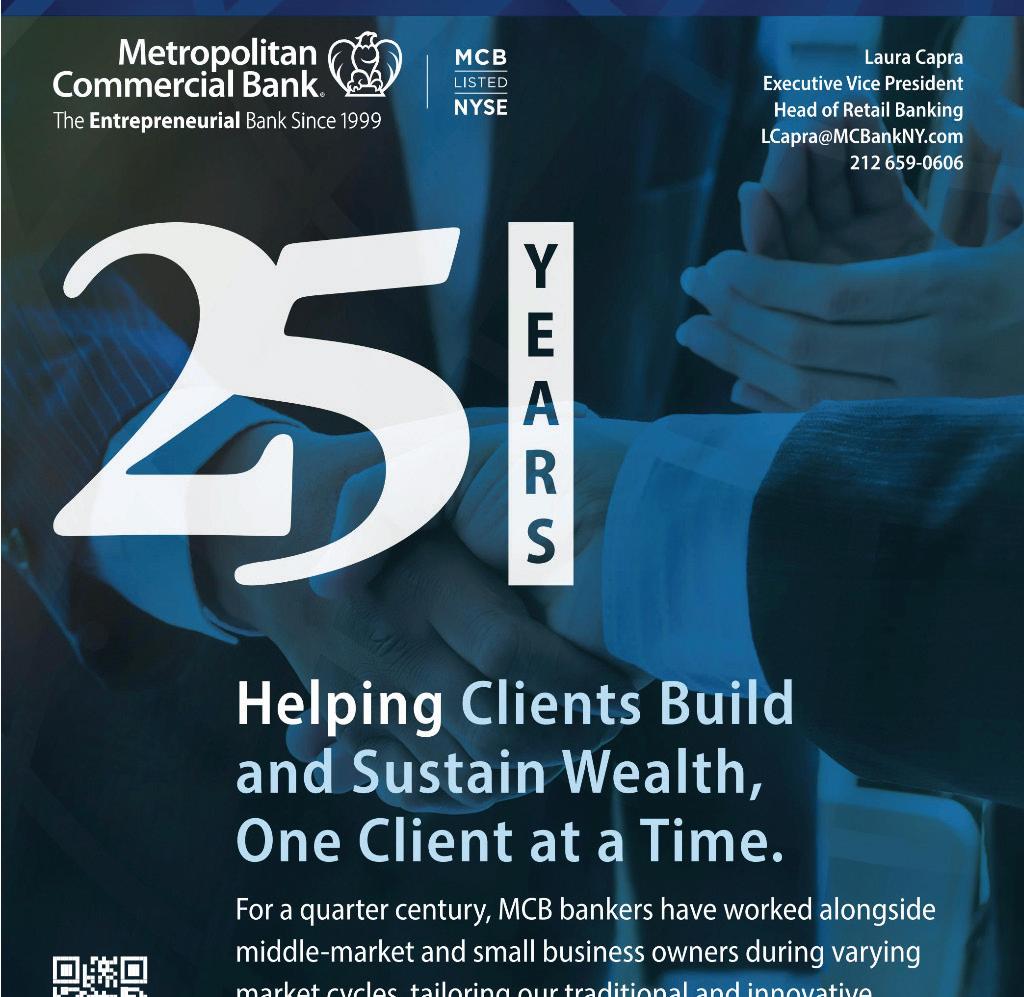
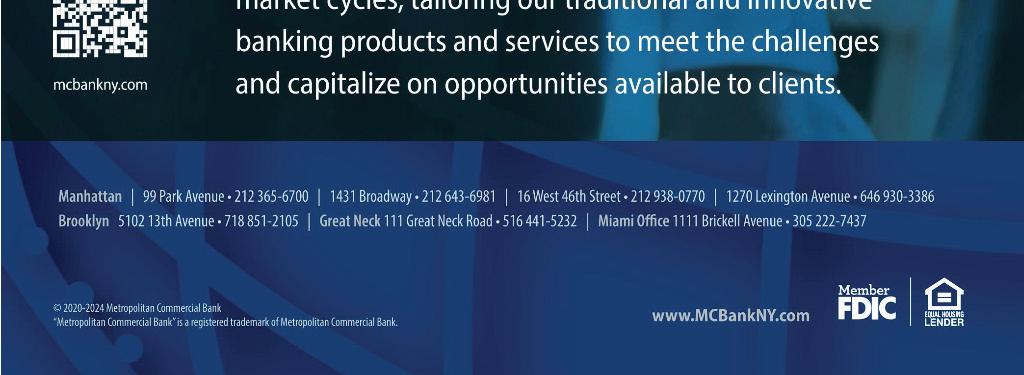

Frank DeLucia Senior Vice President
Hub International Northeast
frank.delucia@hubinternational.com (212)338-2395
Real estate owners and developers are constantly exposed to risks that can have significant financial implications if not properly insured. While having insurance is crucial, ensuring it covers all potential risks adequately is equally important. Here are four critical gaps in real estate insurance coverage that often leave property owners underinsured:
Catastrophic Coverage. One of the most common gaps in insurance coverage for real estate properties is inadequate protection against catastrophic events. Floods, hurricanes, earthquakes and even terrorist attacks can cause extensive damage beyond what standard property insurance policies typically cover. According to the Federal Emergency Management Agency (FEMA), floods account for about 75% of all natural disasters in the United States, highlighting the significant risk posed by this type of event.
Tip: Utilize predictive technology to assess the potential risks of catastrophic losses. Annual catastrophe modeling can provide insights into your property’s vulnerability, helping you determine catastrophic coverage options.
Rebuilding Value. Many property owners underestimate the true cost of rebuilding their properties after a catastrophic event. Factors such as location, building type and materials used can significantly impact rebuilding costs. Inadequate valuation of properties can lead to the insurance policy not providing enough funds to rebuild the property as desired.
Tip: Regularly review your property valuations to ensure that they accurately reflect current rebuilding costs. According to industry studies, nearly 60% of commercial properties are underinsured by an average of 21%, highlighting the widespread issue of inadequate coverage.
Contractual Indemnification. Liability risks associated with construction activities on your property are another often-overlooked area. When tenants undertake construction projects, the property owner can be held liable for injuries or damages that occur during the construction process.
Tip: Ensure your insurance policy includes adequate indemnification for construction-related liabilities. Request copies of contractors’ insurance policies to verify coverage and protect yourself against potential lawsuits arising from construction-related incidents.
Business Interruption. Property insurance typically covers physical damage to buildings, but may not adequately address the financial losses incurred due to business interruptions caused by such damage. Business interruption insurance is designed to reimburse lost income and cover ongoing expenses during the period when the property is unusable.
Tip: Calculate potential business interruption losses based on annual rental revenues. Business interruption is one of the top causes of financial loss for businesses, including real estate, with estimates suggesting that losses can amount to millions of dollars depending on the duration of the interruption.
While having insurance coverage is essential for real
estate owners and developers, it’s equally crucial to ensure that the coverage is comprehensive and aligned with the specific risks faced by your properties.
Real estate is a dynamic industry; risks evolve continuously, demanding proactive insurance strategies to safeguard investments effectively. Beyond the outlined gaps, additional considerations arise that can impact insurance adequacy:
Emerging Risks. As climate change accelerates, real estate faces new and intensified risks. Increased frequency and severity of natural disasters underscore the importance of robust catastrophic coverage. Property owners must anticipate and prepare for these evolving risks through comprehensive insurance solutions that encompass environmental impacts and climate-related vulnerabilities.
Cybersecurity Threats. With digital transformation sweeping through the real estate sector, cybersecurity vulnerabilities are becoming increasingly prevalent. Property management systems, financial transactions and tenant data are all potential targets for cyberattacks. Standard insurance policies often do not cover losses from cyber incidents, necessitating specialized cybersecurity insurance to mitigate financial exposures arising from data breaches, ransomware attacks or other cyber threats.
Legal and Regulatory Compliance. Changes in laws and regulations can significantly impact insurance requirements for real estate. Non-compliance can result in penalties and gaps in coverage. Property owners must stay abreast of regulatory changes affecting their operations and ensure their insurance policies meet current legal standards.
Tenant-Related Risks. Tenant activities can introduce diverse risks, from property damage to liability claims. Lease agreements should outline insurance requirements for tenants, ensuring they maintain adequate coverage for their operations and indemnify property owners against associated risks. Failure to enforce insurance obligations can leave property owners vulnerable to financial losses stemming from tenantrelated incidents.
Addressing these additional considerations requires a proactive approach to insurance planning and risk management. Property owners should engage with insurance brokers who specialize in real estate to customize policies that address specific vulnerabilities and ensure comprehensive protection.
While traditional property insurance forms a critical foundation, augmenting coverage with specialized policies tailored to emerging risks, cybersecurity threats, legal compliance and tenant activities is essential.
By adopting a proactive and comprehensive insurance strategy, real estate owners and developers can navigate uncertainties with confidence, safeguarding their assets and maintaining financial stability amid an everchanging landscape of risks.

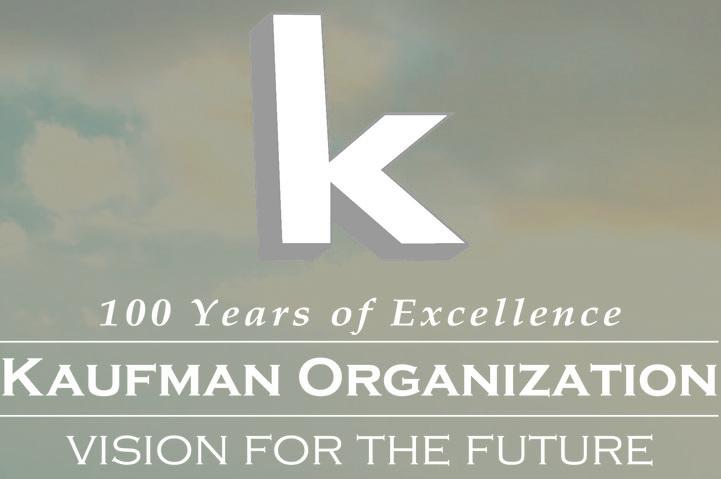






We would like to take this opportunity to thank the following people:
Our team & staff for their endless dedication and support
Our tenants for their cooperation to keep our buildings safe
Our partners for their trust and confidence in these challenging times
All New Yorkers working tirelessly to keep our city moving
We hope everyone continues to be healthy and safe in 2021.




Outdoor Power Equipment Institute
TurfMutt Foundation Equip Expo
1605 King St. Alexandria, VA 22314
turfmutt.com opei.org
(703)549-7600
For 15 years the TurfMutt Foundation has advocated for the care and use of yards, parks and other green spaces. These outdoor areas facilitate “backyarding,” the act of taking everyday activities that we normally do inside (such as dining, working, relaxing and more) into the outdoor spaces around us. This not only makes life more enjoyable, but it also improves the health and well-being of people, pets and the planet.
Over the years, we’ve seen the benefits to families, communities and wildlife by having accessible green space to help balance our man-made environments. The benefits of nature — which starts right out our back doors — are vast, and there is a wealth of scientific evidence to support the argument for growing our green space.
Here are the top five reasons we need more managed green space in our backyards and communities:
Plants, shrubs, trees and grass are “environmental superheroes” that capture and filter rainwater, produce oxygen and absorb carbon. The dense canopy and fibrous root system in a lawn sequesters carbon so well that it outweighs the carbon used for maintaining the grass by as much as seven-fold. An average-sized home lawn in the U.S. has the potential to sequester 20.3 kg to 163.4 kg of carbon per lawn per year. Planting trees results in less runoff and erosion, allowing more recharging of the ground water supply and resulting in less sediment and chemicals in streams.
The physical health benefits of spending time in green space are vast. A review of research published between 1976 and 2017 found consistent associations between greater urban green space exposure and decreased mortality, heart rate and violence, as well as between greater urban green space exposure and increased attention, mood and physical activity.
Living near green spaces could add 2.5 years to your life, according to research published in the peer-reviewed journal “Science Advances”. Additionally, people living near green spaces, including parks, age slower than those in dense urban environments.
Spending time in green space also makes us happier and improves our mental well-being. According to a system-
atic review of research, green spaces decrease the risk of psychiatric disorders, including depression, anxiety, dementia, schizophrenia and ADHD.
Additionally, visits to parks, community gardens and other urban green spaces may lower city dwellers’ use of drugs for anxiety, insomnia, depression, high blood pressure and asthma.
Having more green in your yard can add more green to your pocketbook. According to a study conducted by the Harris Poll for the TurfMutt Foundation, nearly three-quarters of Americans overall (72%) say a spacious yard would be at the top of their wish list if they were looking for a new home.
A beautiful landscape improves curb appeal, which can increase home value by as much as 17%. Each front yard tree adds 1% to a homeowner’s sale price, while large specimen trees can add 10% to property values.
Wildlife — including pollinating birds, butterflies, bees — have had to adapt to the human-made environment. Having the proper green space that blooms throughout the year in backyards and community parks plays a critical role in helping animals and insects thrive by reconnecting fragmented habitats into a connected ecosystem. To find the best plants to support backyard critters in your area, consult the National Wildlife Federation’s Native Plant Finder.
Backyarding is most beneficial when practicing the “right plant, right place” principle. This means selecting plants that support your family’s lifestyle and ones that will thrive in your climate zone with minimal work on your part. Refer to the U.S Department of Agriculture’s Plant Hardiness Zone Map to find the plants, shrubs and trees that are best suited for your yard.
If pets are in the picture, you will want to choose pet-friendly plantings. The ASPCA has a list of non-toxic plants that are safe for pets.
For more, sign up for Mutt Mail, a monthly e-newsletter with tips and all the news from the TurfMutt Foundation. To learn about creating your dream yard, visit turfmutt.com. Look for Mulligan the TurfMutt on the CBS “Lucky Dog” television show on Saturday mornings.
Langsam Property Services Corp. is a Bronx-based real estate management company. These buildings are located in the Bronx, Manhattan, Queens, Brooklyn, and lower Westchester County.
Langsam is designated as an Accredited Management Organization (AMO), a standard of excellence in management conferred by the Institute of Real Estate Management (IREM).
1601 Bronxdale Avenue
Bronx, New York 10462
Tel: 718. 518. 8000
Fax: 718.518. 8585

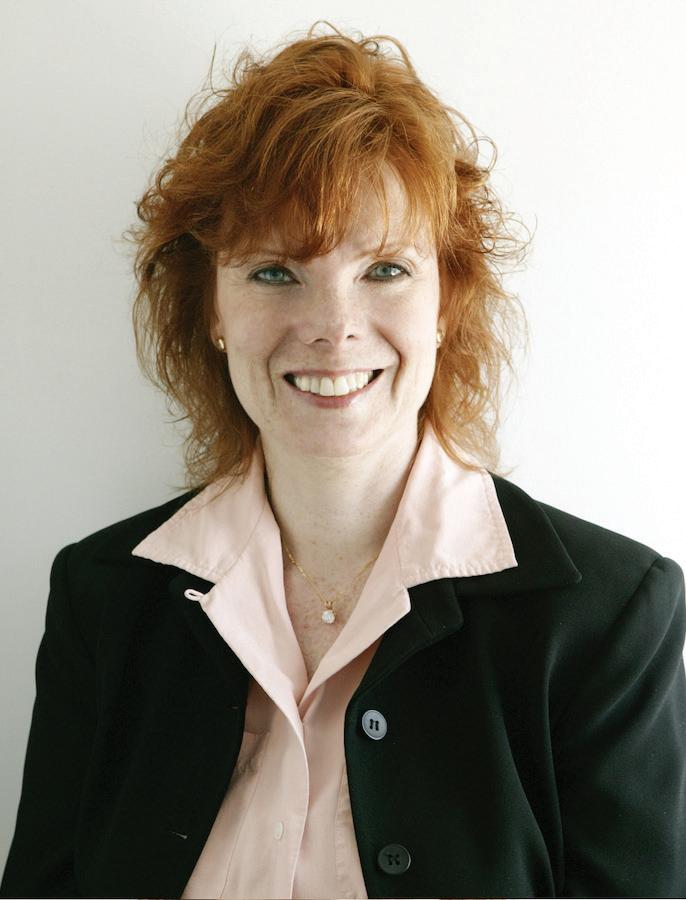
Debra Hazel
Debra Hazel Communications
North Las Vegas, NV (201)618-5247
It was bound to happen. The question is what’s next?
In a consolidation of top luxury retailers, HBC, the parent of Saks Fifth Avenue, has agreed to acquire Neiman Marcus Group for $2.65 billion. The deal will create Saks Global, which will encompass Saks Fifth Avenue, Saks Off Fifth, Neiman Marcus and Bergdorf Goodman – and some $7 billion in prime real estate, which the company said it will “manage, maximize and enhance.” At least, thank the retail gods, each of the brands will continue to operate under their own storied names.
“We’re thrilled to take this step in bringing together these iconic luxury names, Saks Fifth Avenue, Neiman Marcus and Bergdorf Goodman,” said Richard Baker, HBC executive chairman and CEO, in the announcement. “For years, many in the industry have anticipated this transaction and the benefits it would drive for customers, partners and employees. This is an exciting time in luxury retail, with technological advancements creating new opportunities to redefine the customer experience, and we look forward to unlocking significant value for our customers, brand partners and employees.”
The news isn’t exactly a shock. There were reports that a $3.1 billion deal fell apart not that long ago.
But the really interesting part is the financial structure of the deal. Amazon will be an investor in and work with Saks Global on bringing tech (including AI) to the luxury retail experience. Tech giant Salesforce will also become an investor at closing, and global software investor Insight Partners, an investor in Saks.com, will be a shareholder in the new company.
It’s the Amazon investment that’s most intriguing. It’s no secret that Amazon has tried and largely failed to penetrate the luxury sector — a number of brands won’t work with it — so this could be a foothold. But its ability to leverage customer data can be a game-changer for Saks Global. Will a younger customer more accustomed to technology buy luxury items from the e-commerce giant? (They do from the brands themselves.) Will Saks Global utilize Amazon’s hallowed efficiency technologies to reduce costs?
Saks Global says it will invest in the luxury experience so customers can “access a broad fashion assortment
through their channel of choice.” The company plans to leverage AI (probably with the help of Salesforce) to create individualized shopping experiences. And it promises to help emerging brands.
But what does it mean for real estate? That remains to be seen, I think.
Baker told WWD that there were no plans for store closures or rebranding, but the two stores do overlap in a few centers, including Fashion Show Mall here in Las Vegas, Town Square Boca Raton and Bal Harbour Shops in Miami. (Saks left my much-loved Mall at Short Hills a few years back). In other cities, such as Boston and New York (Bergdorf), they’re not far away from each other.
That’s a challenge, given that the two luxury giants pretty much sell the same merchandise, though Saks seems to have more diverse price points. I’ve been comparison-shopping Neiman’s and Saks for years. How do the two differentiate? Separate men’s and women’s stores, a la Bergdorf? Add more affordable merchandise to one or the other, putting it squarely into competition with Bloomingdale’s? It will be interesting to see how this evolve as those long leases come up for renewal.
Meanwhile, luxury brands, including many from LVMH and Kering, continue to open their own boutiques and are investing in their own technology initiatives to build a closer relationship with their customers. That’s not going anywhere.
It’s just another sign of how tough it’s been for department stores. HBC’s Lord & Taylor operates solely on line. Macy’s continues to close full-line stores while opening smaller boutiques and specialty shops. Nordstrom continues to expand its Rack off-price stores.
And let’s not forget the Federal Trade Commission, which will take a close look at the merger. This deal, which will bring so much of the luxury retail market under one corporate roof, is far from a sure approval. (We’re still waiting on the Kroger/Albertson’s merger, which was announced in October 2022.)
For a deal that we’ve been anticipating for quite some time, there are still a lot of questions.






Raffaele Di Censo, CPA, MBA Partner
Marcum LLP
53 State Street, 17th Floor
Boston, MA 02109
P: (617) 807-5015
C: (781) 521-0368
Raffaele.DiCenso@marcumllp.com
If you are in the process of securing permanent financing or raising common or preferred equity from an institutional investor for your real estate entity, you might have been asked to provide audited financial statements. That could sound daunting for those unfamiliar with the audit process, but it doesn’t have to be.
The very first step is to understand what a financial statement audit is. A financial statement audit is the examination of an entity’s financial statements and accompanying disclosures by an independent auditor. An audit is the highest-level assurance service a certified public accountant (CPA) performs to provide “reasonable assurance” about whether the financial statements are free from material misstatement.
While selecting and engaging the CPA firm that will be performing the audit is essential, designating a team within your company that will oversee and facilitate the audit process is also of utmost importance. This team should be comprised of accounting and finance professionals as well as IT professionals.
Once the company’s and audit teams are selected, a planning meeting should be held, preferably in person, if conditions allow. This is an opportunity for the teams to get to know each other and establish clear lines of communication that are instrumental in ensuring the audit process runs efficiently. The teams should collaborate on an agenda for the meeting.
At a minimum, the topics below should be addressed:
1: Overview of the company’s operations and overall market conditions. It is essential for the auditor to understand the business and the industry in which the company operates.
2: Current year activity: Were there any significant transactions during the year? Transactions typically have accounting and auditing implications. Property acquisitions/dispositions, refinances, re-capitalizations and similar items should be discussed in detail and will be focus areas for the auditors.
3: Substantial development/construction, changes in operations, loss of significant tenants, pending or threatening litigation and any other factors that could have an impact on financial reporting.
4: Ensuring that the auditors provide a clear list of requested items subsequent to the meeting.
5: Establishing a clear timeline for when requests are due to the auditor and when the auditors’ report is expected to be released to satisfy lender or investor deadlines.
After this meeting and once the auditors’ request list has been provided, the company’s audit team should re-group to discuss the list in detail and assign responsibilities. Most of the auditors’ requests will be items that any accounting department will have readily available.
However, some might require additional preparation; therefore, it is important to review the list early on and have sufficient time to ask the auditor any follow-up questions.
A typical auditor wish list for a real estate entity would include the following:
1: Trial balance and general ledger.
2: Internally prepared financial statements.
3: Approved budgets.
4: Internal control system narratives.
5: Management’s going concern assessment.
6: Cash reconciliations, AR and AP aging.
7: Fixed assets, debt, and equity roll forwards.
8: Rent rolls, schedule of straight-line rent and future minimum rents.
9: Schedule of related party transactions.
10: Partnership and debt agreements.
While the above list is not comprehensive, it should provide a solid starting point for the auditors. Once their planning phase has been completed, the auditors will make selections from these documents and request additional support. Additional requests typically include invoices, canceled checks, leases, bank statements and any other documentation that can be used to support the company’s accounting records.
A company going through its first financial statement audit is not a simple task; however, the audit process will be much smoother with careful planning and preparation.
Establishing a dedicated team and consistent communication with the auditors will ensure timely completion of tasks and allow for financial statement delivery within the established deadlines.








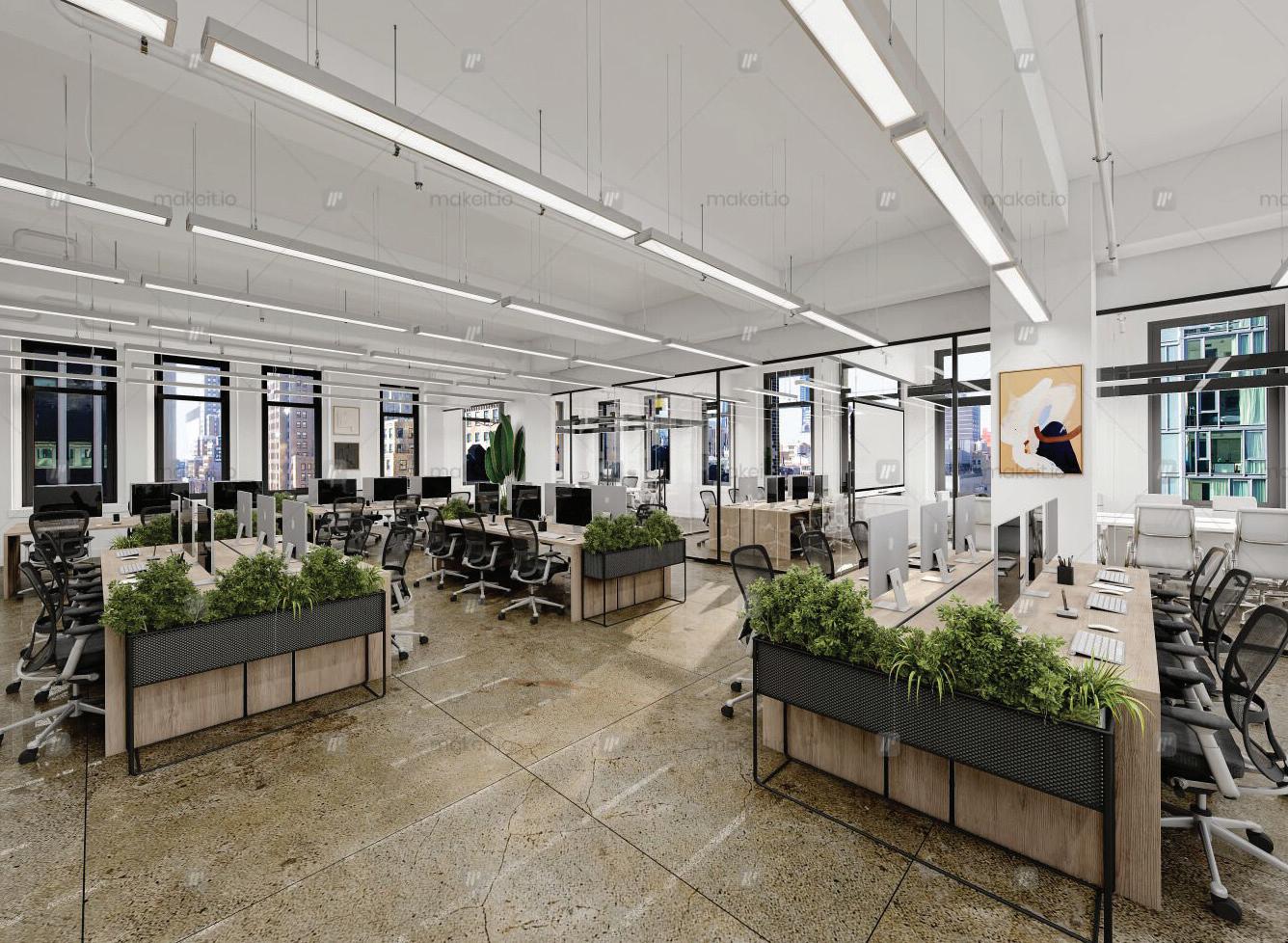




Shaun Keegan CEO and Co-founder
Solar Landscape
partners@solarlandscape.com (844)765-2769 Ext. 3
With rental prices softening and stubbornly high commercial real estate vacancy rates in New York State, it’s time to think about a new tenant: the sun. Leasing rooftop space on large commercial and industrial buildings for solar installations advances clean energy goals and generates revenue, regardless of whether a building is occupied.
The biggest barriers to welcoming the sun as a new tenant are common misunderstandings about how, where and why rooftop solar projects get installed in New York. Here are some of the common misperceptions that could cause them to risk missing out on rooftop revenue.
Myth: The building must use all the energy that the panels generate.
Years ago, commercial rooftop solar installations only generated energy for the building. However, that limited the size of the installation, and it often limited hosts to buildings with high energy demands, like refrigeration warehouses or data centers.
Today, buildings don’t have to consume all the solar energy generated by the rooftop panels. New York has one of America’s most mature community solar programs, which means that the energy generated by commercial rooftop installations can be distributed back to the grid, regardless of the building tenant. The project can generate revenue for the owner.
Myth: It requires upfront investment. Today in New York, hosting rooftop solar panels can be an immediate value-add to the revenue stream, just likeaddinganewtenant.Unlikeresidentialsolar, where ownerscanpurchasethepanels,noupfrontinvestment is necessary on the commercial side. In this model, the solar developer builds, owns and operates the rooftop solar project and then pays a monthly lease to the landlord, just like any other tenant
Myth: It requires maintenance. The sun is a low-maintenance tenant.
If the building owner hosts the panels, the installation is owned by the solar developer, so the building owner has no obligation to monitor or maintain the hardware. In our case, Solar Landscape monitors all its projects around the clock and regularly inspects both the panels and the rooftop.
Myth: Rooftops aren’t the best locations for solar panels.
Commercial rooftops are among the best sites for generating solar energy and distributing it back to the grid. In addition to better connecting building owners to their communities, they preserve open space that is sometimes used for large solar projects.
In addition, commercial rooftops are often closer to the homes and buildings that will be the eventual users of the solar energy. That proximity reduces the demands on the electrical grid and alleviates construction delays.
Myth: You have to wait. Contrary to what you may expect, New York State’s thriving community solar program makes it possible for building owners to start generating rooftop revenue today.
The installations are funded by a $3.3 billion state initiative known as the NY Sun Program, one reason why New York has the strongest community solar program in the country. Governor Hochul has tasked NYSERDA with installing 10 gigawatts of distributed solar by 2030, representing a massive opportunity for commercial real estate owners.
The commercial rooftop solar market is ripe for development now. Often, the mark of a good decision is that you wish you’d made it sooner. Across New York State, there’s no reason to wait.
Community solar is a win-win; it lowers energy costs for communities, creates revenue-generating opportunities for property owners, and increases the use of clean, renewable energy.
In the community solar model, solar arrays installed on a central location — such as the rooftop of a commercial/industrial building — generate energy that is sold at a discount to “subscribers” in the community, often residents and small businesses.
Here are the highlights of New York’s commercial rooftop solar landscape:
•Owners collect rooftop lease payments from solar developers.
•Ideal buildings should have 30,000-plus square feet of roof space.
•The program is available now — applications are accepted on first-come, first-served basis.
•ConEd and PSEG Long Island are two of the top utilities for rooftop solar in the state
•Projects are maintenance-free for the building owner and are not limited to buildings with high energy demands.
•New York is already a national leader in community solar, with 2 gigawatts installed.
Rooftop solar on commercial buildings allows owners to demonstrate a commitment to sustainability while generating revenue.
For commercial real estate leaders, it’s a way to mark progress toward ESG goals, create change and impact at scale, and show how the CRE sector can play a role in solving the climate puzzle.
With New York’s first-come, first-served community solar program, the best time to take advantage clearly is today.







RICHARD SIMON, ESQ. | PARTNER CHAIR, BANKING AND FINANCIAL SERVICES






JEFFREY ROSENTHAL, ESQ. | PARTNER CHAIR, BANKRUPTCY AND CREDITORS RIGHTS


Since 1930, Mandelbaum Barrett PC has prioritized providing clients with proactive legal protection spanning over 30 practice areas:
Appellate Advocacy
Banking
Banking
Cannabis

Robert M. Sasloff Counsel
Jacobs PC
595 Madison Ave., 39th Floor
New York, NY 10022
(347)952-7030
Real estate bankruptcy is a complex and multifaceted issue that deeply impacts property owners, investors and the broader economy. In this comprehensive article, we delve into the nuances of real estate bankruptcy in New York, examining its definitions, types, processes, contributing factors and the profound effects of the COVID-19 pandemic. Additionally, we explore case studies of recent bankruptcies to glean insights into future trends.
Understanding Real Estate Bankruptcy in the State of New York
Real estate bankruptcy is a legal process where property owners can restructure their debts or liquidate assets under the supervision of a bankruptcy court. It applies to both commercial and residential properties and can be initiated voluntarily by the property owner or involuntarily by creditors seeking to recover debts. While emotionally challenging, bankruptcy offers a chance for financial rehabilitation.
There are two types of bankruptcy. Chapter 7 bankruptcy involves liquidating assets to settle debts, typically used by smaller property owners with limited assets. Chapter 11 allows for debt reorganization and repayment plans, predominantly utilized in commercial real estate to maintain operations and avoid liquidation.
The process begins with filing a bankruptcy petition detailing assets, liabilities and income. A trustee oversees proceedings, which may involve asset liquidation via auction or approval of a reorganization plan. Bankruptcy protection temporarily halts creditor actions, providing relief to overwhelmed property owners.
Factors Contributing to Real Estate Bankruptcy
Real estate bankruptcy can stem from economic downturns, overleveraging and regulatory changes:
Economic Downturns and Market Fluctuations
Economic recessions can depreciate property values, impairing owners’ ability to service debts and triggering bankruptcy. Market volatility, influenced by interest rate shifts and credit availability, further complicates financial stability.
Overleveraging and Debt Mismanagement
Excessive borrowing beyond sustainable limits or reliance on variable-rate loans heightens financial risks. Coupled with declining property values, overleveraging can push owners into insolvency.
Regulatory Changes and Legal Issues
Changes in zoning laws or legal disputes can obstruct property development or impose unforeseen costs, straining financial resources and potentially leading to bankruptcy.
The Impact of COVID-19
The COVID-19 pandemic has profoundly impacted both commercial and residential real estate markets in New York:
Commercial Real Estate Challenges
Business closures and reduced consumer spending have diminished rental incomes, prompting defaults on commercial property loans and escalating bankruptcy filings among landlords.
Residential Real Estate Struggles
Job losses and income reductions have exacerbated mortgage delinquencies and foreclosures, particularly in urban areas. Government relief initiatives provided temporary respite but may not mitigate long-term financial distress.
Government Relief Programs and Their Effects Eviction moratoriums and mortgage forbearance programs offered crucial short-term relief. However, their expiry may lead to a surge in bankruptcy filings as property owners struggle to resume regular payments amidst lingering economic uncertainties.
Recent Case Studies
Retail and Mall Properties
Retail giants like JCPenney and Neiman Marcus filed for bankruptcy, resulting in store closures and depreciated mall values as e-commerce continues to reshape consumer habits.
Hotel and Hospitality Industry
Low occupancy rates and travel restrictions devastated New York’s hotel sector, prompting bankruptcies by major chains such as Marriott International and Hilton Worldwide Holdings, impacting local economies and real estate values.
Residential Developments
Bankruptcies among residential developers, exemplified by the case of Greg Shaw’s $11.4 million project, underscore the risks associated with unfinished developments and investor losses.
Closing Thoughts
Real estate bankruptcy in New York reflects a dynamic interplay of economic conditions, regulatory frameworks, and unforeseen crises like the COVID-19 pandemic. While bankruptcy offers a path to financial recovery, its repercussions extend beyond individual property owners to encompass investors, lenders and the broader economy.
Understanding these dynamics is crucial for stakeholders navigating the complexities of the New York real estate market.
In conclusion, staying informed about evolving trends in real estate bankruptcy can equip stakeholders with the insights necessary to make informed decisions amidst uncertainties, thus ensuring resilience in a volatile market landscape.
By exploring these facets, we are providing a comprehensive overview of real estate bankruptcy in New York, highlighting its complexities and implications for all involved parties.









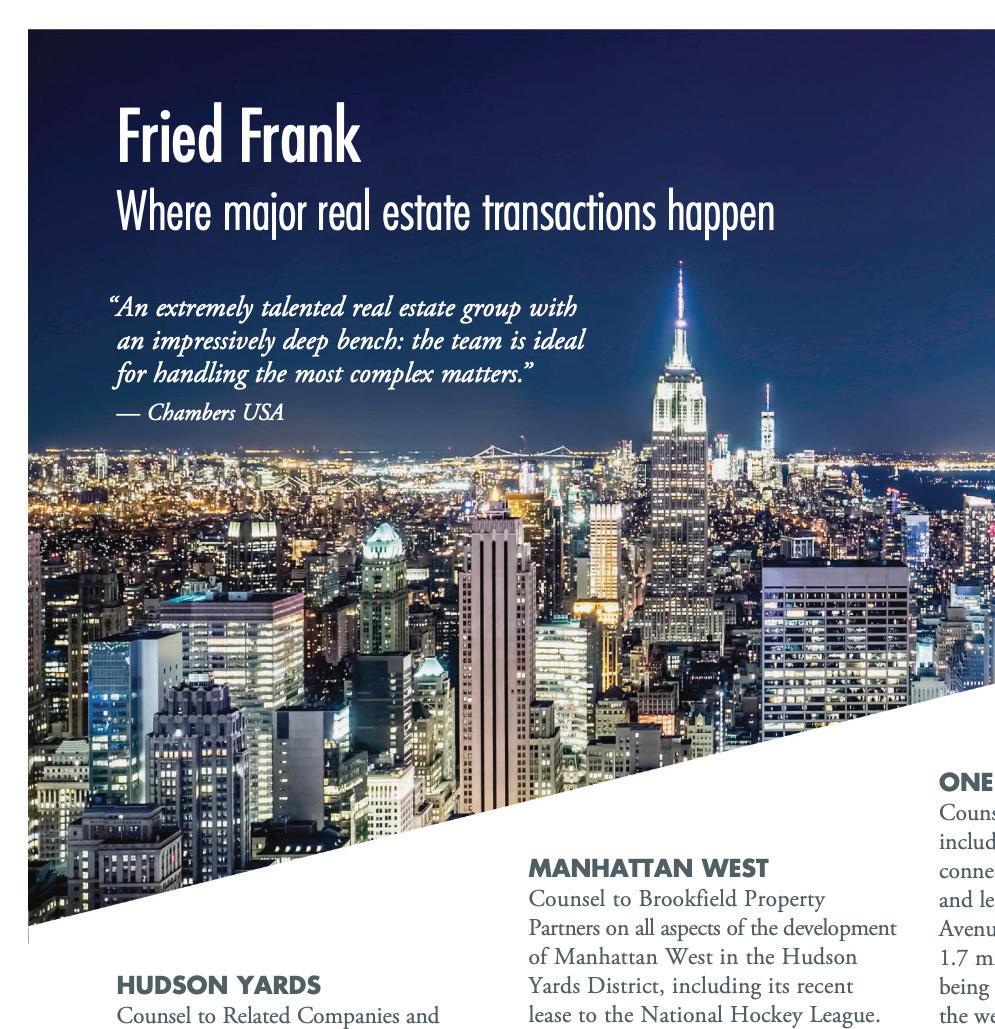
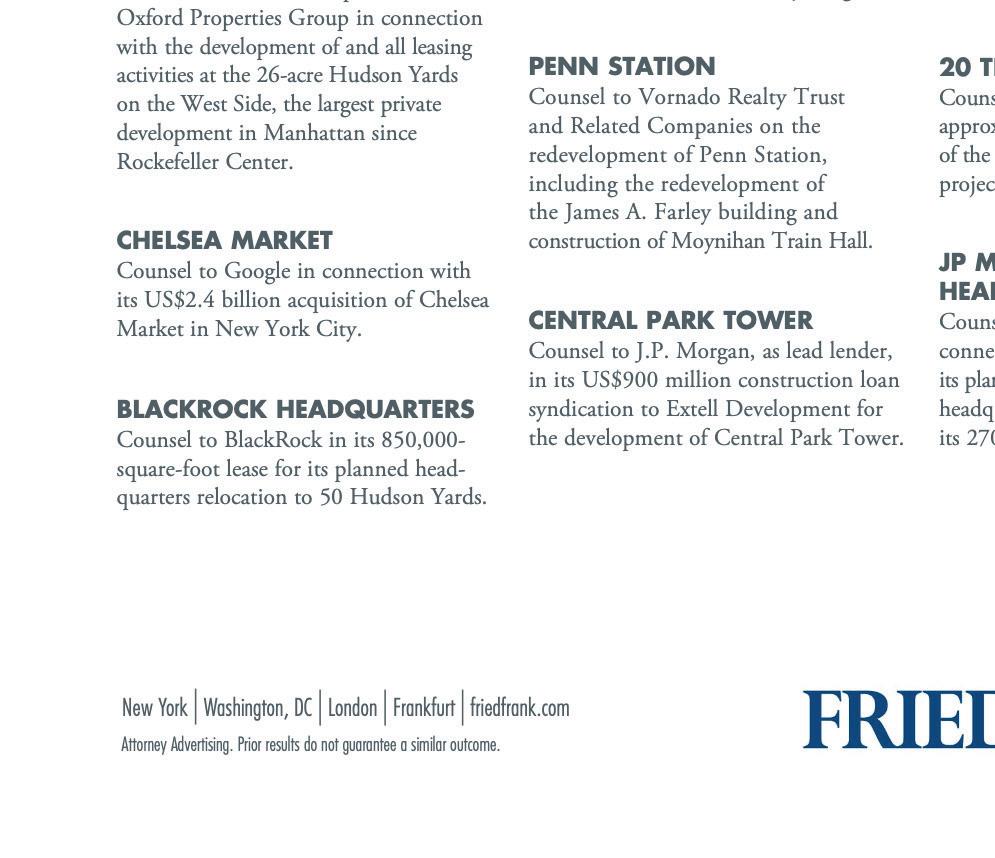














Meridian remains as committed as ever to supporting you, our clients and partners, serving as your loyal and dedicated advisor in navigating the current market.
Thank you for your continued confidence and trust and we look forward to building with you in the years ahead.








Photos by Chris Taggart
The Fordham Real Estate Institute (REI) brought together hundreds of business and real estate professionals at its Lincoln Center campus for the second annual “Building Futures” premier awards gala to celebrate industry visionaries and support future careers in commercial real estate.
Anthony R. Davidson, dean of Fordham University’s School of Professional and Continuing Studies, was joined by REI Executive Advisory Council Chair Ryan O’Connor, president and CEO of Clinton Management, in honoring industry leaders shaping New York City’s landscape.
The event benefited Fordham’s Building Futures Scholarship Fund, which offers low-income New Yorkers access to REI’s courses and programs, and to careers in real estate and construction. Scholarship funds will be awarded to students in the five boroughs and surrounding counties, providing scholarships for Fordham REI programs from high school level through master’s programs.
“We are proud to honor the women and men who are leading the real estate industry to the next level,” said Davidson. “We also recognize the importance of preparing the future leaders of real estate and creating opportunities for students to achieve their career goals.”
“Real estate is a relationship industry, which is beneficial to those within the industry, but not if you’re on the outside looking in,” said O’Connor. “Building Futures gives students that first shot and, from there, they do the work. A lot of people who rose to the top of this industry came from humble beginnings and can relate to these students — it’s
a natural extension and it’s why we’ve gotten such positive feedback.”
Steven Roth, chairman and CEO of Vornado Realty Trust, served as honorary host and presented the 2024 Visionary Award to Ethan Penner, CEO of Mosaic Real Estate Investors.
“Ethan is a financial first-responder. When there is chaos and confusion in the markets, he runs into the fire in search of the opportunity,” Roth said. “That’s what makes him unique. Calm markets and day-to-day stuff are of little interest to Ethan. He is really, really smart, with a healthy dose of curiosity and a pinch of cynicism.”
Penner has built and led numerous investment and origination businesses. In 2015, he founded Mosaic, which specializes in high-quality fixed-income investment opportunities and at its peak had assets under management near $1 billion. In 2008, Penner founded and led CBRE Capital Partners. The author of “Greatness Is a Choice”, he has taught at the University of Southern California’s graduate business school and Pepperdine University.
“I’m honored and moved to be given the Visionary Award by Fordham at a beautiful event at their Lincoln Center campus. That my mentor and old friend Steve Roth, a true giant in the history of real estate, presented it to me makes the moment even more special,” said Penner. “The primary requirement of a visionary is to identify unmet needs and then to invest oneself in trying to meet those needs.
“Everyone can be a visionary, but it requires courage to go a new and untraveled path, often against the advice of most people. We live in a very con-
fusing time and the need for visionary leadership, action and courage is unprecedented. It is my hope that in my small way, I can inspire many others to find their visionary selves. I thank Fordham Real Estate Institute for honoring me and for identifying to their constituents the importance of being a visionary.”
This year’s Groundbreakers Award was presented to Annemarie DiCola, CEO of Trepp Inc., a provider of information, analytics and services to the structured finance, CRE and banking markets.
“I am honored to receive the Groundbreakers Award. This recognition reflects the collective efforts of the entire Trepp team, whose dedication to innovation and excellence in commercial real estate has made this achievement possible,” said DiCola. “We remain committed to pushing the boundaries of what’s possible in our industry, and this award inspires us to continue leading the way.”
Mosfigul Aktar, CEO of AlphaRithm AI, received the Titan of Tomorrow Award. Aktar co-founded AlphaRithm AI, which uses data-driven insights and democratized analytics to revolutionize the real estate industry.
“This accolade is not just a testament to my personal journey, but also a recognition of the collective efforts of my team at AlphaRithm AI,” said Aktar. “As an immigrant, a first-generation American and an entrepreneur, this honor represents the perseverance and resilience that have been key to working toward making great impacts on society. It underscores our mission of pioneering a transparent and equitable exchange and enhancing the living standards of the built environment.”




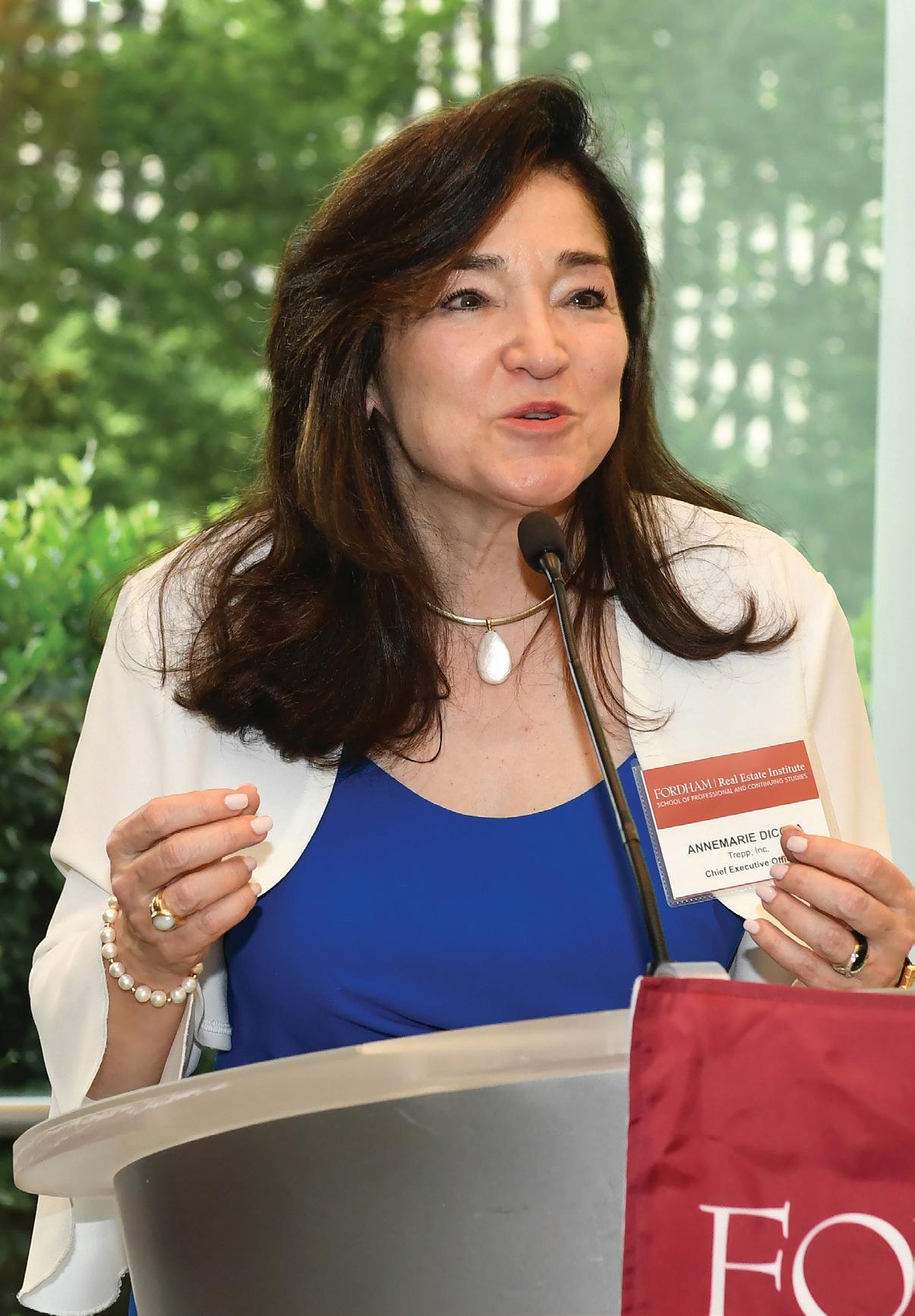
Photos by Michael Moran

One of the great challenges in multifamily buildings in New York is space — or, more accurately, the lack thereof. But Mini Tower One in Brooklyn managed to introduce 30% more area to the building, including adding space to each unit, while connecting residents to nature while increasing sustainability.
A 3,500-square-foot rear addition and renovation extends the functionality of each unit by providing flexible space for various activities. Each floor of the building is enlarged, adding areas for living and entertaining. Some spaces can be both indoor and outdoor, such as the indoor terrace and all-season room, which can be enclosed to allow residents to watch the seasons pass with views of spring rains or winter snowfalls.
Framed by a 50-foot birch tree, Mini Tower One connects residents to urban nature and incorporates low-energy strategies to improve both indoor and outdoor comfort. The project adheres to passive house principles, featuring a high-performance building envelope to reduce energy use. However, during temperate seasons, large openings promote indoor-outdoor living, seemingly in contradiction to passive house design. In fact, the building is airtight during peak heating and cooling seasons but open to the outdoors in temperate weather.
Mini Tower One is designed to enhance environmental thresholds. These spaces can passively cool outdoor air before it enters the building, thereby reducing energy use for air conditioning.
Mini Tower One’s threshold areas — ranging from an indoor terrace to an all-weather room— mitigate air temperature and reduce energy use while creating experiences that extend indoor and outdoor environments. In all, the expanded building requires just 12% more energy, which is more than offset by rooftop solar panels. Also on the roof is an edible garden.
Urban planning research conducted by Modu has identified additional sites for multi-family additions in New York. This community-focused development strategy maximizes available floor area ratio without requiring full demolition. The developments are particularly suitable for properties with limited zoning height, insufficient existing structures or unstable soil conditions, Modu said.
The project team included Phu Hoang, Rachely Rotem, Diego Fernandez Morales, Tom Sterling, Alice Fang and Jiri Vala. Also involved were Silman (Structural), Engineering Solutions (MEP), Zero Energy Design (Building Envelope) and TransSolar (Climate Engineering).




EP Engineering provided full MEP services for ConBody’s legal cannabis dispensary, ConBud, which opened at 85 Delancey St. in downtown Manhattan. ConBud is one of the first recreational dispensaries to be awarded a social equity CAURD (Conditional Adult Use Retail Dispensary) license in New York State. The sixth licensed cannabis retailer in New York City, it is the only one located in the Lower East Side. ConBud is also the world’s first dispensary solely owned and operated by formerly incarcerated people.
The project included the full renovation of the 5,000-square-foot space. The work on the new open space sales floor included integrated lit millwork, new staff and customer restrooms and a large storage and office suite in the cellar.
“We are proud to be part of the great work that ConBody and the city are doing with the CAURD License program and to be part of building a more inclusive and hopeful community.” said Joe Vieitez, EP Engineering partner. “This project showcases our team’s dedication to providing services that exceed expectations and fit the unique demands of each project.”
EP Engineering’s work included reconfiguring the space’s existing mechanical systems to serve back-of-house spaces in order to keep costs low, with new mechanical systems provided for the front-of-house spaces to give them a premium feel. All ductwork was kept within the back-of-house areas to create an open and clean aesthetic to the front sales floor. All services were kept under the EP Engineering and EP Inspections & Commissioning (EPIC) umbrellas, allowing for the special inspections to be expedited and an efficient project close-out.
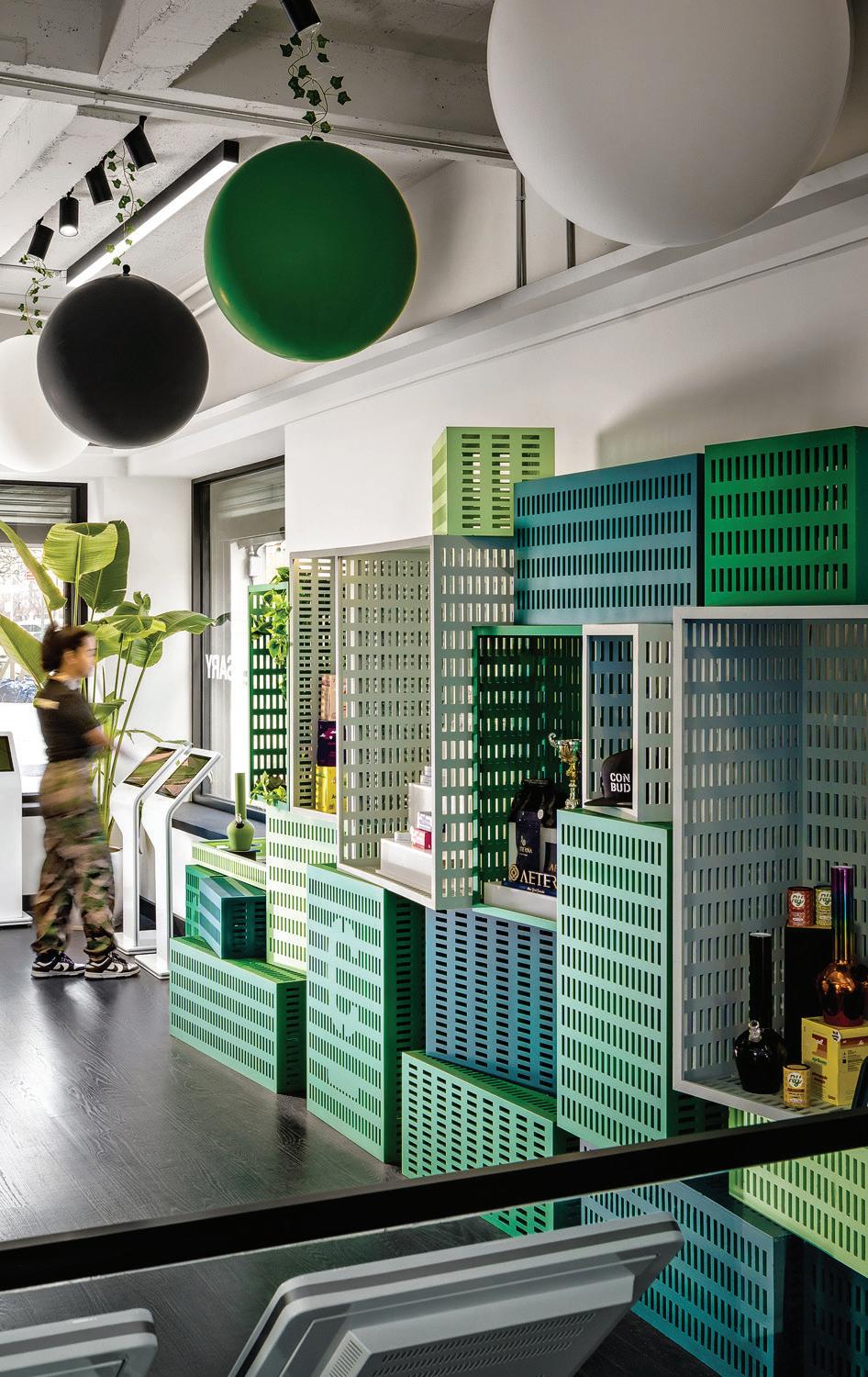




At Webster Bank, you’ll find products designed for the property management industry – and a team of professionals with the experience to put them to work for you. Your Webster Bank Relationship Manager and Property Management Team know the challenges you face and give you access to the tools you need to e ectively manage them.
Value, solutions and service – put our resources to work for you.








Donna Abood has been named vice chairman and co-head, Florida at Savills. Abood is an accomplished commercial real estate executive who will work alongside Mike Griffin, a vice chairman who currently serves as Market Leader for Savills’ Tampa Bay office and is being promoted to co-head, Florida.
Together, Abood and Griffin will spearhead Savills’ growth strategy, focusing on recruiting and retention, revenue production and increasing the brand’s visibility in the state. Abood will oversee the firm’s operations from South Florida up to Tampa Bay, while Griffin will be responsible for overseeing Tampa Bay and regions north of the city, as well as the Naples and Fort Myers markets. Tom Capocefalo will continue as market leader for Savills’ Miami office and serve as one of the firm’s key professionals in South Florida. He will work closely with Abood to strengthen the firm’s South Florida operations.
“In hiring Donna and elevating Mike, we are signaling to the market – and our competitors – that Savills is firmly
planting its flag in the Sunshine State. I am confident that their leadership, and our Florida team’s commitment to guiding clients through the region’s commercial real estate landscape, will significantly enhance our operations and drive our success in Florida,” said Janet Woods, president of Savills North America.
Abood previously served as a principal and co-managing director of Avison Young in Miami, joining the company after her firm, Abood Wood-Fay Real Estate Group LLC, was acquired by Avison Young in 2014. At Avison Young, she had become the first female managing director in the firm’s history.
Over the course of her career, Abood has leased over 80 million square feet of office space on behalf of local and institutional ownership groups, including completing hundreds of transactions on behalf of tenants she has represented. In addition to Abood’s arrival, Peyton Dowd and Joseph Abood will also join Savills as managing directors. Both will work alongside Abood in the firm’s Miami office.
Integrated design firm DLR Group announced the appointment of Mark Tiscornia, AIA, ACHA, as global healthcare leader. Specialized in leading teams in the design of large-scale academic, acute care and ambulatory healthcare facilities, Tiscornia joins DLR Group as a principal and will be based in Phoenix, Arizona.
With nearly 30 years of design and construction experience at firms such as HDR, HGA, Cuningham and Anshen+Allen, Tiscornia has planned, designed and managed a wide range of healthcare projects.
Projects of note include the Stanford University Children’s Hospital Expansion, which augmented the groundbreaking Lucile Packard Children’s Hospital and carried its revolutionary principles — from environmental sustainability, to enhancing the user experience with biophilic design, and a multi-layered art program — into a new era of pediatric care.
“As a strategic master planner who balances design and
user experience with operational demands, Mark will be instrumental in strengthening DLR Group’s reach and impact in this sector,” said DLR Group CEO Steven McKay, AIA, RIBA. “He joins our team with a proven track record of executing projects of varying levels of complexity, and a keen sense of how to elevate healthcare design for patients, caregivers, and clients.”
With an integrated design practice, DLR Group addresses challenges facing the healthcare industry, including maximizing efficiency, minimizing waste and design and plan for adaptability. The firm introduces an integrated level of services in the early stages of design and planning processes to mitigate risks for clients and deliver holistic care for patients.
Since the acquisition of Seattle-based healthcare design firm Salus Architecture and Charlotte-based healthcare design firm Wright McGraw Beyer Architects in 2021, DLR Group’s healthcare sector has a resume of more than 300 projects.

As part of its plan to ramp up capital raising across its established verticals in residential and industrial development in the U.S., global real estate investment firm GTIS Partners LP has expanded its U.S. Capital Markets team with the hire of Sharon Liss as a managing director. Liss brings over 17 years of extensive experience working with institutional investors in real estate capital markets to the firm.
She will lead U.S. institutional fundraising efforts and be responsible for developing and maintaining relationships with institutional investors and the consultant community. She will report to Peter Ciganik, partner and head of capital markets at GTIS.
With the recent launch of GTIS’ U.S. Real Estate Debt Strategies Fund, aimed at taking advantage of the current debt market dislocation, the firm will also benefit from Liss’ experience in real estate credit.
Prior to joining GTIS, Liss was a managing director of capital markets at CenterSquare Investment Management, a Philadelphia-based investment firm active in listed real estate, private equity and real estate debt. At CenterSquare, she was responsible for business development and consultant relations across the firm’s real estate products. Previously, she served as managing director, business development for Sugar Hill Capital Partners, a New Yorkbased investment and development firm focused on multifamily properties. She started her career as a member of the Debt Capital Markets group at RBC Capital Markets.
GTIS Partners is a global real estate investment firm in the Americas, headquartered in New York with offices in São Paulo, San Francisco, Los Angeles, Atlanta, Charlotte, Phoenix, Dallas, Houston and Munich. The firm was started in 2005 and is managed by President and Founder Tom Shapiro and seven partners. The firm manages $4.5 billion in gross assets.
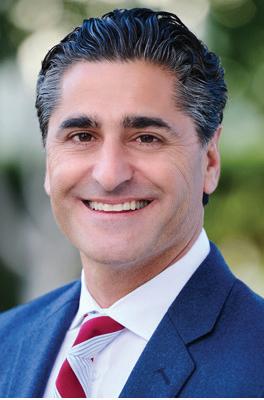
Cox, Castle & Nicholson LLP, a full-service law firm specializing in real estate, announced that attorney Robert Shaia has joined the firm as partner. Shaia joins Cox Castle’s litigation team, which has decades of experience partnering with its clients to find the shortest route from conflict to resolution. Based in Cox Castle’s Orange County, California office, Shaia specializes in all types of construction-related disputes in addition to surety and real estate matters.
With more than 20 years of experience as a construction litigator, Shaia represents large construction and engineering firms on a variety of private and public projects, ranging from power plants and prison facilities to roads, high-rise developments and residential homes. His strategic approach to handling construction disputes has led to successful outcomes in claims involving disputed change orders, differing site conditions, delays, licensing issues, design issues, defect claims, indemnity issues, pursing and defending bid protests, mechanics’ liens, stop notices and payment bonds.
Shaia joins Cox Castle from Watt, Tieder, Hoffar & Fitzergerald where he was a partner.
“Robert’s proven track record in litigation, client-centric approach, and commitment to excellence make him an invaluable addition to Cox Castle,” said Dwayne McKenzie, managing partner, Cox Castle. “We are thrilled to welcome Robert to the firm and look forward to him being a key contributor to our litigation practice.”
Shaia has extensive trial and arbitration experience and has successfully mediated dozens of cases to resolution. He also has experience litigating before the California Courts of Appeal. His notable successes include prevailing in complex bench trials, arbitrations, and jury trials, showcasing his adeptness in navigating various legal challenges.
In addition to his legal expertise, Shaia is a certified public accountant (inactive), leveraging his financial background to offer a unique perspective when approaching legal matters.

Commercial real estate finance, investment sales and retail leasing advisor Meridian Capital Group has named Melissa Martinez as the firm’s first chief risk officer.
Martinez has more than 20 years of experience in enterprise and compliance risk management at the intersection of finance and real estate.
She previously served as chief risk officer for multiple financial institutions, including CoreLogic and OneWest Bank, where she was responsible for the refinement and build-out of the company’s enterprise risk management framework and functions.
“We are thrilled to have Melissa join Meridian and bring her experience building the new CRO role, which will
play a critical part in expanding our risk management programs as we continue our work to institutionalize Meridian and diversify our business,” said Brian Brooks, Meridian’s chairman and CEO. “I look forward to partnering closely with her to ensure we meet the demands of an evolving risk landscape as we continue to grow.”
Martinez will oversee and bolster Meridian’s compliance and enterprise risk management framework across its business units, including commercial real estate finance, investment sales and retail leasing. She will also help further embed a strong culture of risk awareness across the firm.
In 2023, Meridian closed over $27.4 billion in financing in 43 states across 269 unique lenders.








We are constantly upgrading our approach and methods to save our clients time and money by delivering the most progressive services and tools in the industry.
Why? To always increase the value of our buildings and enhance the lifestyles for our residents.
Large to small, we tailor all our services to meet the unique needs of each of our clients. A total commitment to quality service is what has made Century one of the most trusted management companies in New York for over 40 years.
Connect with our expert team today to find out how we can help.
OUR EXPERTISE AT A GLANCE
Residential Property Management
Financial Management
Risk Management
Residential Sales & Rentals
Coop and Condo Conversions
Construction Coordination
Project Management
Long Term Capital Planning
212.560.6400

Michael Tillman CEO AND CIO PTM PARTNERS
Michael Tillman is the CEO and CIO of development and private equity firm PTM Partners, which specializes in Opportunity Zones. Tillman formerly was a managing director of acquisitions and development at LeFrak. He oversaw the underwriting, execution, construction, development and condo sales of the 1 Hotel South Beach, a 1.8 million-square-foot mixed-use luxury hotel and condominium. He also managed the restructuring, entitlement and development of SoLe Mia, a 184-acre mixed-use development with 5,000 residential units and 1.5 million square feet of commercial in North Miami, Florida.
Prior to LeFrak, Tillman was with Aetos Capital, where he was a senior member of the firm’s investment platform in China and evaluated over $5 billion of large-scale real estate development projects. He was also a founding member of Aetos Capital Management, a $500 million long/short hedge fund invested in real estate and real estate-related securities across Asia
He received a BBA from Emory University and his MBA with honors from Columbia Business School.
How long have you been in the industry?
I have been in the real estate industry since 2004. I’ve had the opportunity to see the peaks created by CMBS, CDOs and CDO-squareds in the run-up to the Great Financial Crisis, the pain created by that time, the unbelievable market expansion from 2012 to 2023, and the historic run-up in interest rates over the past two years.
Each of these periods has shaped the industry significantly and are a large factor in the market’s current shake-up.
What brought you to the business?
My grandmother used to say that a home is more than just a place to live – it’s a place to create memories. I look at what PTM does as a chance to deliver that opportunity to a wider demographic of people. In the current economic climate, with many individuals being priced out of home ownership, I want to be able to provide people with an attainable opportunity to live well and make their own memories.
Who inspires you?
To me, an inspirational leader demonstrates authenticity, passion, and approachability. I found each of these traits in my former boss and mentor, Richard LeFrak.
Richard is a titan of the real estate industry, but he would never tell you that. His passion for his projects, people, company, and family left an indelible mark on me. Additionally, his ability to relate to people from all walks of life created so much value for his projects.
How are Opportunity Zones evolving?
The Qualified Opportunity Zone legislation was initially a product of discussion with Silicon Valley entrepreneurs to encourage opening new businesses in low-income housing tracts, as designated by the Department of Housing and Urban Development. Given that the legislation focused on geographic designations of low-income housing tracts, it naturally lent itself to real estate development in these areas.
In the past six years since the formal enactment, capital investment has increased more in low-income housing tracts than any other tax program within the same limited period. As such, whole neighborhoods are being designed, developed and brought to life, spurring growth beyond real estate for businesses, culture and arts. What’s unique about this is that not all of the new investment is coming from Opportunity Zone funds.
A great example of this is our project in Overtown, Miami, Florida. Utilizing Opportunity Zone legislation, we built the first Class-A luxury rental building in that market, which included workforce housing
accounting for 20% of the units. This project was a resounding success and has since spurred the development of more housing, retail, dining, grocers and a planned mixed-use master development in the area.
How has PTM evolved?
PTM Partners was formed with an intent to utilize the Qualified Opportunity Zone program to bring accessible Class A rental housing to the masses, which we have successfully executed in key markets like Miami, Washington, D.C., Northern Virginia and St. Petersburg, Florida.
Our thesis of designing thoughtful buildings at an accessible price point with smaller unit sizes, high-end finishes, resort-style amenities and a focus on health and wellness, has proven to be successful and in-demand across various geographic markets.
PTM’s evolution is exhibited by the growth of our Opportunity Zone projects. In Miami alone, our first project was 360 units, our second project that just delivered for occupancy is 420 units, and our upcoming development in Miami is nearly 900.
How are you finding financing?
Despite the challenges of the current economic climate, lenders still have the important job of distributing loans to qualified borrowers and projects. In today’s market, debt capital is available for sound projects with proven developers that have a track record of success.
In PTM’s experience, we are seeing this as we prepare to break ground on our 50-unit Sarasota, Florida project where we have received multiple bids from lenders. Our approach toward conservative underwriting and equity capitalization combined with a focus on a broad swath of the existing population base assures lenders we will deliver on budget, on time and have the demand base to rent up our product .
What keeps you up at night?
As a CEO, I look at the potential stressors in two categories: things I can control and things I cannot control. I often remind myself that I should not stress and therefore lose sleep over things that are out of my control. With that in mind, I aim to act thoughtfully on the things I can control. As for things that cannot be controlled, I try not to lose sleep over them because it won’t necessarily change the outcome.



The financial backing of a global bank, and the streamlined structure and agility of a boutique bank that will keep your business moving forward.
BHI offers full commercial banking services that combine the personal attention of a prestigious boutique bank with the expertise and financial strength of Bank Hapoalim – the leading financial institution in Israel.
With a footprint in the largest U.S. metropolitan areas, we are committed to creating innovative funding solutions for your short– and long-term needs and providing convenient banking and liquidity products for your everyday business needs.
www.bhiusa.com
$1,518
Some truths are inescapable: we all need somewhere to live. But as interest rates and prices have risen, home ownership has become increasingly difficult. That, in turn, has led to a shortage of rental units, rising rents in more than half of U.S. markets and a growing affordability problem in multifamily, as well. Even with a pipeline of new construction, demand remains strong, as we can see by the numbers.
The average monthly rent for an apartment in the U.S. in June 2024, up 0.6% year over year. (apartments.com)
23 million
The number of apartment units in the U.S. (National Multifamily Housing Council)
48%
The percentage of top U.S. markets that saw effective rents decline over the last 12 months. (Avison Young, “U.S. Multifamily Market Trends, Q1 2024”)
440,000
The number of new multifamily units expected in 2024. (CBRE, “U.S. Real Estate Market Outlook 2024”)
2.4 million
The number of U.S. renter households that spent more than 30% of their income on rent and utilities. (Joint Center for Housing Studies of Harvard University, “America’s Rental Housing 2024”)
5.9%
The vacancy rate for U.S. multifamily, up 66 basis points year-over-year. (Newmark, “United States Multifamily Capital Markets Report, 1Q 2024”)


















MARCUM’S NATIONAL CONSUMER PRODUCTS GROUP LEADERS:
MICHAEL SACCO, CPA Partner & National Consumer and Industrial Products Leader michael.sacco@marcumllp.com
RONALD FRIEDMAN, CPA Partner & California Consumer and Industrial Products Leader ron.friedman@marcumllp.com